




GCC high-grade sanitaryware markets
BAM: Carbon tari s for Asian ceramic manufacture
Central Asia and Russia: Tough challenges ahead
STATE PROFILE: Uttar Pradesh



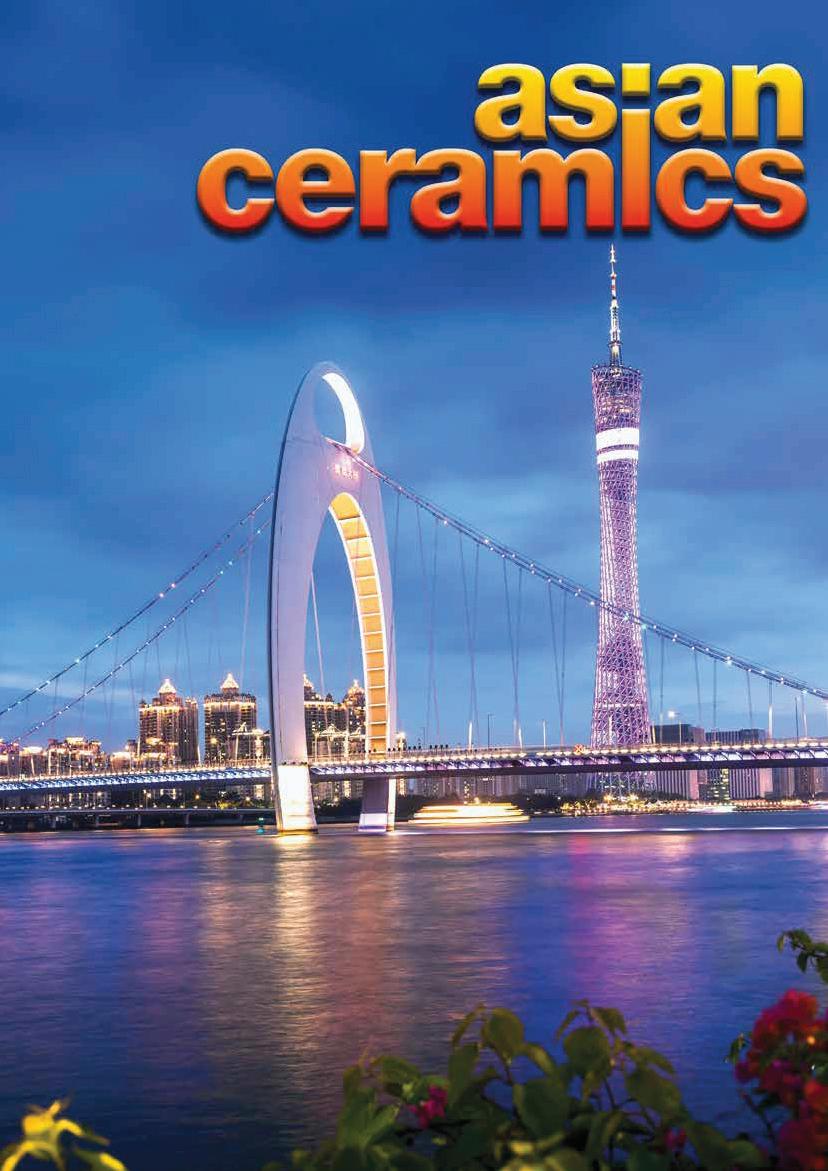

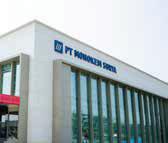



































GCC high-grade sanitaryware markets
BAM: Carbon tari s for Asian ceramic manufacture
Central Asia and Russia: Tough challenges ahead
STATE PROFILE: Uttar Pradesh



































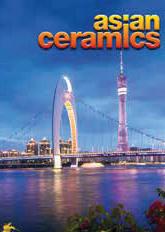



he growth of Chinese investment and trade in Latin America, often referred to as 'expansionism', is primarily driven by economic factors. There are some analysts who argue that Latin American countries will benefit economically, while others have worries about increased dependency and geopolitical repercussions. State-owned companies in China are major investors in the energy, infrastructure, and space sectors in South America, and the country has surpassed the United States in terms of trade volume. There has also been an increase in Beijing's cultural, diplomatic, and military presence in the region. With its influence and reach, China has also impacted the ceramic sector in the region. Chinese companies are investing heavily in the ceramics sector in Latin America, considered the second-fastest-growing ceramics market, after Africa. It is bringing in new technologies and production methods. No doubt, while China's presence in the ceramics sector offers opportunities for technology transfer and market access, it also poses challenges for local industries, especially in terms of competition and potential price wars. Whichever way you view this argument, one thing is certain: the region is fast becoming a hub for Chinese influence and power. Taking a closer merica, Rohan Gunasekera examines the

EDITOR
Editor Isaac Hamza
Email: ihamza@asianceramics.com
ADVERTISING AND DESIGN
Advertising Sales



ienced strong growth in the Gulf tural gas and crude oil prices, ruction industry. Construction led to increased sanitaryware ome of these countries have high per ticularly high-end ones, on the rise. ies for manufacturers of these products h Malik, who provides an overview of
ts associated with complying with order Adjustment Mechanism (CBAM), loped markets. The EU CBAM is October 2023, with full implementation imposes import duties on carbon-intensive ium, fertilisers, hydrogen, and e future. Rohan Gunasekera recommends issions, including electrification and well as process-related emissions, such epared for this eventuality. Kyrgyzstan, Tajikistan, , continue to manufacture and es, especially maintaining free trade t geopolitical conditions. Increasing many challenges to Central Asian port manufacturing hub competing uture is bright, however, as Jahir Ahmed apped potential that this region possesses. PT Monokem Surya manufactures d ilmenite industries. With its headquarters strategically placed in Rengas Dengklok, nd director, Sardimin Sungkarto, ent activities and future plans.

Paul Russell
Email: prussell@asianceramics.com
Mobile/WhatsApp + 44 (0) 787 621 2193
Valerie Adamson
Email: vadamson@asianceramics.com
Mobile/WhatsApp: + 44 (0) 777 425 5051
Production and design
Tim Mitchell www.corpsvector.co.uk
Bangladesh
Jahir Ahmed jahir@asianceramics.com
India
Yogender Singh Malik yogender@asianceramics.com
Sri Lanka
Rohan Gunasekera rohan@asianceramics.com
RESEARCH
Research Manager
Andy Skillen
Email: askillen@bowheadmedia.com
HEAD OFFICE
27 Old Gloucester Street, London WC1N 3AX, UK.

Directors:
Valerie Adamson and Paul Russell.

























































































































KAJISEKI has built asystem capable of manufacturing tableware without the need for skilled engineers. Operation using an interactivedisplay not only allows you to manage the manufacturing process, but also gives you control over aspects of the production system such as production quantity and production errors.























































































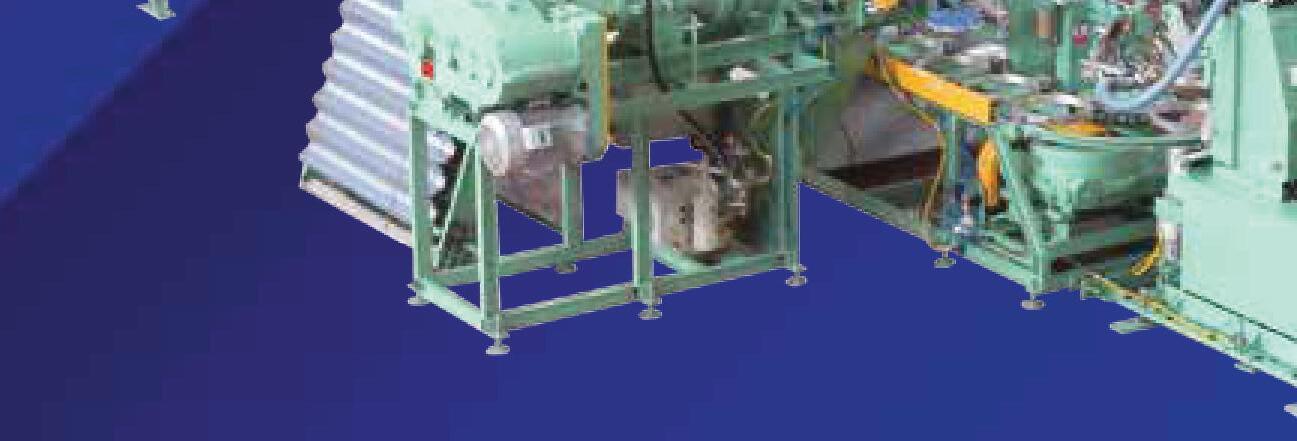










































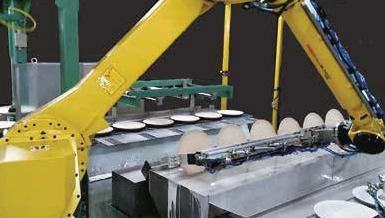
Head Office : 2-2-1 Hachiman-cho, Takahama, Aichi 444-1302, Japan
URL : http://www.takahama-ind.co.jp
E-mail : info@takahama-ind.co.jp
TEL : +81-566-52-5181




















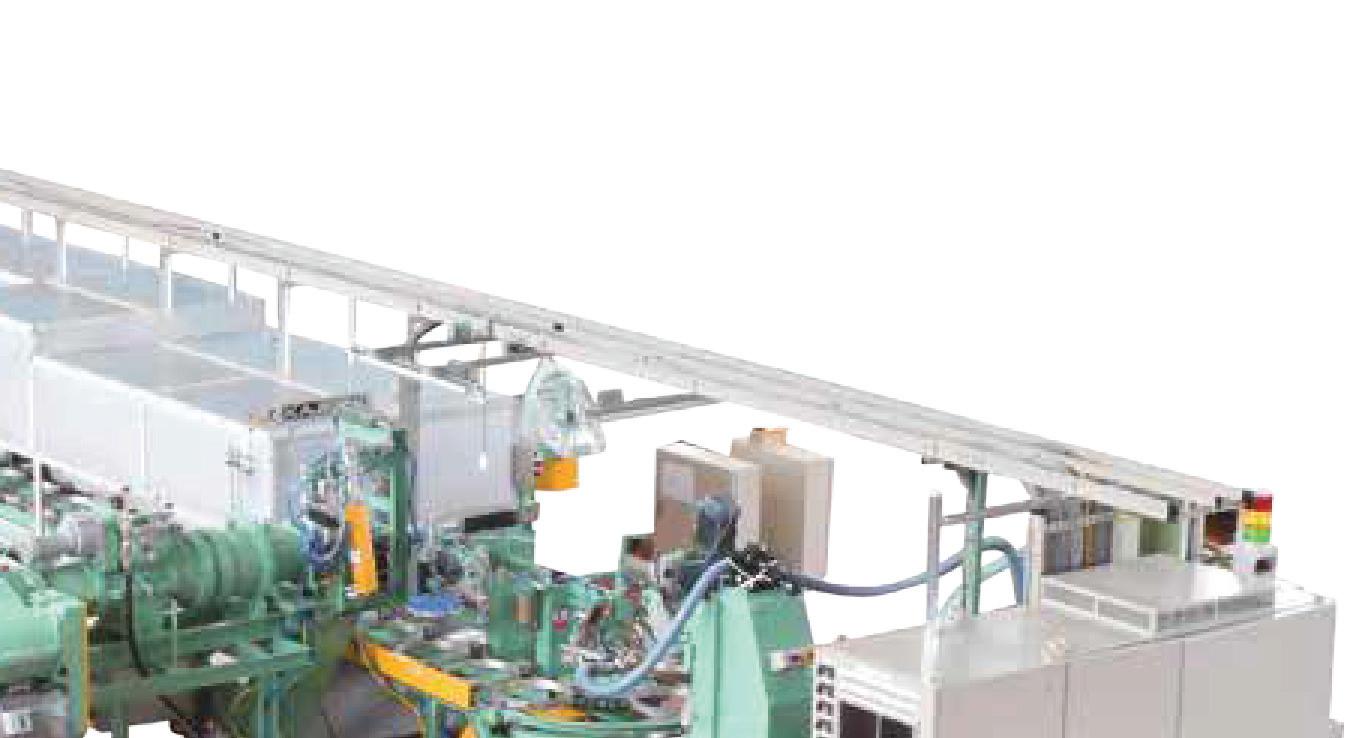
A look at the high-grade sanitaryware market and major manufacturers in the Gulf Cooperation Council, home to many of the world's most prestigious and luxurious projects, by Yogender Singh Malik.
and
Matthew Grandage and Michelle Wang, Asian Ceramics' special correspondents for China, explore Foshan, known as the 'China Ceramic Capital' and a major zone for ceramic tile production.


In their quest to expand into foreign markets, Chinese ceramic manufacturers are becoming multinationals and venturing as far as Latin America, says Rohan Gunasekera.
As Asian ceramics exporters to the European Union comply with the EU’s Carbon Border Adjustment Mechanism, they will see higher costs. However, the tax could also contribute to decarbonisation, says Rohan Gunasekera.
Despite producing ceramics and exporting them, Central Asia Republic (CAR) countries face numerous challenges. However, Jahir Ahmed's report offers hope for the region with plenty of potential.
70
With 234 million inhabitants, Uttar Pradesh is India's most populous state and one of its most important ceramic markets.









Customer segments are served best by durable, functionally appropriate and aesthetically appealing tiled surfaces, not by the number of SKUs, says Dinesh Vyas, building material expert.
Surya, discusses his company's business and plans with Asian Ceramics.
open doors in the UK. According to Asian Ceramics special


















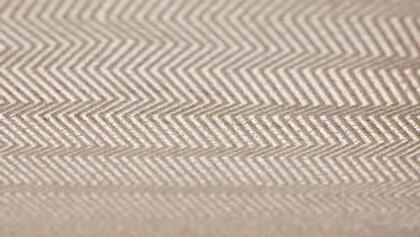



Rahman, Thakur reinvent ceramics
In a breakthrough that blends ancient design with modern materials science, researchers at the University of Houston have developed a new class of ceramic structures that can bend under pressure – without breaking. Potential applications for this technology range from medical prosthetics to impact-resistant components in aerospace and robotics, where lightweight – but tough – materials are in high demand.
use in high-impact or adaptive applications. But that may soon change as a team of UH researchers, led by Maksud Rahman, assistant professor of mechanical and aerospace engineering and Md Shajedul Hoque Thakur, postdoctoral fellow, has shown that origami-inspired shapes with a soft polymer coating can
Their work was recently published in Advanced Composites and Hybrid Materials.
“Ceramics are incredibly useful – biocompatible, lightweight and durable in the right conditions – but they fail catastrophically,” says Rahman. “Our goal was to engineer that failure into something more graceful and safer.”
To do that, the team 3D printed a ceramic structure based on the Miura-ori origami pattern – which

stretchable, biocompatible polymer.
The resulting structures can handle stress in ways ordinary ceramics cannot. When compressed in different directions,
“The origami geometry gave us mechanical adaptability,” says Thakur. “And the polymer coating introduced just computer simulations. The coated versions consistently showed greater toughness – especially in directions where the original ceramic was weakest.
“Origami is more than an art – it is a powerful design tool that can reshape how we approach challenges in both functionalities in even the most fragile materials.”
A new era in impact-resistant component manufacturing could be born from this research. For aerospace applications, lightweight but robust ceramic structures can result in improvements to aircraft designs, resulting in improved fuel patient comfort. A technological advance such as this may greatly impact the lives of individuals who rely on these technologies to maintain their independence and mobility.
By Isaac Hamza

The UK and India agreed to a landmark trade deal on the 6th of May that will have a significant impact on both countries' core missions of growing the economy and improving living standards. For the UK, the agreement will result in a reduction of Indian tariffs on 90% of tariff lines, with 85% becoming tariff-free within a decade. Automobile tariffs, for instance, will go from over 100% to 10% under a quota.British shoppers could see cheaper prices and more choice on products including clothes, footwear, and food products as UK liberalises tariffs.
Indian businesses and consumers stand to gain an equal number of benefits as well. Aerospace, medical devices and electrical machinery are among the goods with reduced tariffs, which can open markets and reduce trade costs for India. The deal is expected to increase bilateral trade by £25.5 billion, UK GDP by £4.8 billion and wages by £2.2 billion each year in the long run. UK businesses are expected to gain a competitive edge over international competitors when entering India’s enormous market as it gets even bigger, forecasted to become the third largest global economy within three years.
British people and businesses."
Indian Prime Minister Narendra Modi says, "These landmark agreements will further deepen our comprehensive strategic partnership and will catalyse trade, investment, growth, job creation and innovation in both our economies."
The UK and India also have a deep and broad relationship, underpinned by a strong ‘living bridge’ of at least 1.9 million people with Indian heritage living in the UK. Even though the Indian market sits behind some of the world’s highest barriers to trade, it was the UK’s 12th largest trading partner in 2024 with total trade worth £43 billion.
Reynolds believes striking a new trade deal with the fastest-growing economy in the world makes both economic and emotional sense.
largest and most dynamic markets, and drive growth and innovation across the UK-India corridor,” he says. “We welcome this strong commitment to partnership and prosperity.”
Richard Heald, the UK-India Business Council chair, concurs with Winters. He says: “It matters when the fifthand sixth largest economies in the world reach a trade agreement.
“Such an agreement is illustrative of the positive momentum in the UK-India relationship, the commitment and ambition of both governments and the opportunities for greater trade, investment and collaboration between our countries.”
Benefits to the ceramic sector
The UK-India trade deal is expected to positively impact the ceramics sector, offering increased opportunities for businesses in both countries. Ceramics is one of many items made duty-free under the deal. India's reduced tariffs will increase UK ceramics' competitiveness, potentially increasing exports. It is anticipated that this development will also strengthen India's position as a global ceramic player.

The deal done In early May, Jonathan Reynolds, the UK's business and trade secretary, met with India's commerce minister Piyush Goyal to conclude negotiations that had been reopened only two months ago. Both sides have worked around the clock since February in order to achieve this deal, which is the largest and most important bilateral trade agreement the UK has done since its departure from the European Union, and the best trade deal India has ever signed.
According to Keir Starmer, Britain's Prime Minister, “Today, we have agreed a landmark deal with India, one of the fastest-growing economies in the world, which will grow the economy and deliver for
“In times of global uncertainty, a pragmatic approach to global trade that provides businesses and consumers with stability is more important than ever.
“At least 1.9 million people with Indian heritage call the UK their home and striking this deal will strengthen the vital partnership between our two democracies.The benefits for UK businesses and consumers under this deal are massive, with wins across an array of sectors.”
Bill Winters, as co-chair of the UK-India Financial Partnership and the group CEO of Standard Chartered, views this UK-India Free Trade Agreement (FTA) as an important achievement.
“It will create new opportunities for UK and Indian businesses, enable greater access to one of the world’s
Ceramic manufacturers in both countries have welcomed the move.
The UK has been a key destination for Indian ceramic exports over the last five years, with shipments reaching an estimated $119.38 million by 2024, according to Kamlesh Patel, chairman and managing director of Asian Granito India, quoted by The Hindu businessline.
“The FTA promises to be a gamechanger, offering Indian ceramic products duty-free access to the UK market. This strategic advantage is expected to unlock new growth opportunities and further strengthen India’s position as a global ceramic powerhouse,” says Patel.
Indeed, this deal is a win-win situation for both countries. It will strengthen the UK-India partnership, bringing down barriers to trade and granting stability to businesses inboth countries.









Explore new frontiers of ceramic decoration with Effecta, the machine that enriches your printing system by adding materiality and tactile finishes through post-drying effects such as shaper and water-repellent. Effecta transforms every surface into a sensorial experience thanks to multi-texture configurations and real-time integration with existing software and printers. Also available in water-based version and with a compact design, it combines innovation, sustainability and the Made in Italy reliability of Projecta, world leader in digital printing for ceramics and agglomerated quartz.
Research guides Bangladesh towards cleaner brick production • Research guides Bangladesh towards cleaner brick production in harsh environments • Moroccan Ceramic Industry Association elects new president • Minh Long marks its 55th anniversary tech sector with transition metals, & value-added products • BWI announces $15B strategic MoU with Saudi Arabia
BANGLADESH/UNITED STATES
A new study found that brick kiln owners were willing to implement energy-efficient operational changes after receivingtrainingandsupport. The social benefits of reduced carbon emissions from these changes outweighed costs by a factor of 65 to 1.
Brick manufacturing is a central component of the economy in South Asia, but also a major source of greenhousegasemissionsand air pollution, as the practice releases carbon dioxide (CO ), fine particulate matter (PM2.5), and other contaminants into the environment. This coalpowered industry poses a serious threat to human health, agriculture, and the environment in low- and middle-income countries that lack the capacity to monitor and regulate these largely informal operations.
As scientists continue to sound the alarm on the increasing dangers of fossil fuels, a new study by researchers at Boston University School of Public Health (BUSPH), Stanford University, icddr,b, Greentech Knowledge Solutions, and the Bangladesh University of Engineering and Technology has introduced an evidencebased strategy proven to increase energy efficiency and reduce emissions in the brick manufacturing industry by encouraging operational changes that prioritise practicality and profit.
Published in the journal Science, the study analyses the results of a randomised controlled trial (RCT) that showed that brick kiln owners in Bangladesh are willing and able to implement cleaner and more efficient business practices within their operations, without legal
enforcement, if they receive the proper training and support, and if those changes are aligned with their profit motives. The study is the first to rigorously demonstrate successful strategies to improve efficiency within the traditional brick kiln industry.
The RCT evaluated an intervention that provided educational resources, training, and technical support to kiln owners in Bangladesh during the 2022-2023 brick kiln seasonwith276brickkilns.The intervention aimed to motivate the owners to make energyefficient adjustments to their manufacturing process, such as streamlining brick stacking and using powered biomass fuel, both of which improve complete fuel combustion and reduce heat loss in the kilns.
The study found that 65% of the brick kiln owners adopted these changes, which led to a 23% reduction in energy use. The changes substantially improved air quality, contributing to 20% reductions in CO and PM2.5 emissions. This intervention also brought substantial savings in coal expenditures and higher-quality bricks. Notably, the researchers estimated that the social benefits due CO2 reductions from the intervention outweighed costs by a factor of 65 to 1 and that the CO2 reductions were achieved at the low cost of $2.85/tonne. When the team returned to participating brick kilns the next year, they found adoption of the improved practices had not only sustained but increased.
Study lead and corresponding authorNina Brooks, assistant professor of global health at BUSPH, said: “Brick manufacturing is central

to development, urbanisation, and construction in Bangladesh and across South Asia, but the industry has not experienced much innovation, leaving open the possibility for win-win solutions that target low efficiency.
“Our findings demonstrate that brick kiln owners are willing to embrace simple changes that protect human and environmental health when they have the knowledge and training, and those changes deliver tangible economic gain.”
These findings are promising, as previous efforts to regulate the brick kiln industry have been unsuccessful in Bangladesh, where workers produce27 billion bricksannually in harsh working conditions. This industryaccountsfor 17% of CO emissions and 11% of PM2.5 emissions each year. Existingregulations, such as fuel mandates that ban the use offirewood,orlawsthatrequire brick kilns to be distanced from schools, health facilities, and other establishments, are onlyminimally enforced; for example, the majority of brick kilns in Bangladesh are
located illegally nearschools.
In a 2024pilot studyfor this intervention, the researchers learned that zigzag brick kiln owners were unaware of proper zizgag kiln operation, which are alreadydesignedto be less polluting, or that these approaches could increase their profit. The owners were also sceptical to implement the intervention, for fear that the changes were too technologically advanced for their workers. Although the study included an experimental armthatexplainedthebusiness case for incentivising workers to adopt the new practices, these were not widely taken up. An important area for future research is identifying strategies to improve work conditions that are aligned with kiln owners’ profit motives and may be implemented within a weak regulatory state.
Co-senior author Stephen Luby, the Lucy Becker Professor of Medicine and senior fellow at the Stanford Woods Institute for the Environment, said: "The remarkable success of the intervention demonstrates the benefit of deep engagement with local stakeholders.”
production • Breakthrough coating technology enables Nd-Fe-B magnets to thrive anniversary at Vietnam headquarters • Vedanta commits to powering India’s Arabia • MKS breaks ground on Thailand chemical manufacturing centre ...
Since their discovery thousandsofyearsago,magnets have fascinated humankind with their unique properties. Even today, scientists are studying and finding new applications for these materials.
In 1984, the development of neodymium-ironboron (Nd-Fe-B) magnets revolutionized this field. Known for their unparalleled magnetic strength, these magnets have now become ubiquitous, serving as critical components in renewable energy systems and advanced electronics. However, their susceptibility to degradation under moisture, salt spray, and temperature fluctuations has, thus far, strongly limited their deployment in harsh environments. Traditional protective coatings such as NiCu-Ni, Zn, and epoxy resin often fail under prolonged exposure, leading to catastrophic magnet failure.
Toovercomethesechallenges, a team of researchers from the Institute of Advanced Magnetic Materials at Hangzhou Dianzi
University, led by Zhen Shi (first author) and Xuefeng Zhang (corresponding author), has developed a ‘slippery liquidinfused porous surface’ (SLIPS) coating for Nd-Fe-B magnets through a multi-dimensional design strategy. Their recent work has been published in the journal Small on 14 April 2025. Elaborating on their findings, Zhang says: “This technology could revolutionize motor applications, ranging from aerospace systems to deep-sea roboticsandpolarinfrastructure, by preventing saltwater, humidity, and temperature fluctuation-induced magnet degradation. Moreover, we can significantly extend motor lifespans while reducing the maintenance costs.”
In this study, the team chemically engineered silica nanoparticles to form a dense polymer network with enhanced interfacial adhesion and locked lubricant film. Consequently, the resultant coating enables Nd-Fe-B magnets to resist corrosion, humidity, mechanical stress,
and extreme temperatures with unprecedented durability. Through extensive experimentation, the researchers found that there was no corrosion detected even after 136-day immersion in 3.5 wt.% saltwater. Furthermore, the novel SLIPS coating delays ice formation with 10fold longer freezing time and reduces ice adhesion strength by 75% at -20°C, as well as repairs mechanical scratches autonomously and restores surface functionality.
Compared to commercial Ni-Cu-Ni, Zn, and epoxy resin coatings, SLIPS coating demonstrates super stable corrosionprotectionforNd-Fe-B magnets. In electrochemical experiments, the impedance modulus of SLIPS coating at 0.1 Hz can be maintained at 3.31×10 day immersion, far surpassing that of commercial coatings. Notably, the impedance modulus of all commercial coatings deteriorated within 14 days.
Shi briefly highlights the


technologicalimpactofthisnew coating. “Our multidimensional design bridges the gap between laboratory innovation and real-world applications. By addressing corrosion and icing simultaneously, we have transformed NdFe-B magnets into reliable components even for the most demanding environments.” Lastly, the research team further noted that the selfhealing capability of the SLIPS coating ensures longevity even after physical damage, a critical feature for missioncritical systems in remote or inaccessible locations. While initially tested for offshore wind turbines, the robustness of the proposed technology suggests transformative potential across various industries. Aerospace engineers could leverage these magnets for lightweight, high-efficiency motors in satellites, while polar research equipment and deepsea exploration tools utilizing this innovation could achieve unprecedented reliability.
The Moroccan Ceramic Industry Association (APIC) embarks on a new chapter of its development with the unanimous election of Omar Chaabi as its President. This collective decision by the industry’s stakeholders signals a shared ambition: to breathe new life into a strategic sector with high growth potential.
Vice president of YNNA Group since 2009, Chaabi is a well-known figure in the national industrial landscape. He also sits on the boards of several major companies, including SNEP and GPC
Papier et Carton. Within APIC, he represents Super Cerame, one of Morocco’s well-known ceramic manufacturers.
His appointment marks a turning point for the association at a time when the ceramic industry is called to transform in the face of competitiveness, sustainability, and industrial sovereignty challenges.
Chaabi said: “Our ambition is clear: to build a strong, resilient, and future-oriented Moroccan ceramic sector. Together with industry players, we will implement a pragmatic action plan aimed at driving
innovation, boosting local integration, and enhancing our international footprint.”
APIC has announced the preparation of an ambitious sectoral recovery plan, built on consultations with industry stakeholders and tailored to the market’s concrete needs. Key priorities include modernisation of production tools, promotion of Made in Morocco products, trade defence, and upskilling of the sector’s workforce.
APIC said Chaabi’s presidency continues the momentum initiated by

Mohammed Lacham, who laid the foundation for renewed governance before retiring and handing over the leadership.
VIETNAM
The global tableware manufacturer, Minh Long, celebrated its 55th anniversary on 12th January at its headquarters near Ho Chi Minh, Vietnam.
The company was established in1970tomanufactureporcelain products that meet quality standards for technology, aesthetics, and consumer friendliness. Today, it employs more than 3,000 people and produces over 50 million products annually. The Minh Long brand, which operates on the Vietnamese porcelain market, offers products with contemporary design and
cutting-edge technology.
In addition to its domestic market, the company exports to countries throughout the world, including the US, Germany, and France.
The event was an important milestone in Minh and his family's effort to build a brand known for its quality porcelain andtableware.Today,MinhLong has successfully expanded its brand beyond South East Asia and Vietnam.
The event was also attended by the Sacmi Group, which has served as a key supplier to the Vietnamese firm for many years. It is noteworthy that
Minh Long has had a longstanding relationship with the Sacmi network of tableware companies, including Sama, which recently acquired Lippert, and Riedhammer.
“This anniversary represents not just a moment to celebrate our history and many successes, but also an opportunity to look towards the future. Our partnership with the Sacmi Group has been of fundamental importance in achieving excellence, which makes us stand out on the market today. We are proud to work with a partner who shares our values of quality

and continuous innovation,” Minh said, speaking about the company's long-standing relationship with Sacmi.
The celebration continued on the 13th of January with a visit to Minh Long's factories, during which the opening of a new porcelain museum was also held.
OnIndia’sNationalTechnology Day, celebrated on 11th May, Vedanta Limited, India’s leading producer of energy transition metals commits to powering India’s technology and engineering sector through its thrust on value-added and sophisticated range of metals. Vedanta is expanding its valueadded products for its zinc and aluminium products. The company has forayed into zinc alloys with a 30 KTPA plant while the aluminium business plans to significantly boost the share of value-added products in its portfolio to over 90% in the near-term.
For its aluminium capacity expansion, Vedanta's board had approved about $1.5 billion, including a smelter expansion (for additional aluminium production) and increased value-added product (VAP) capacity at its flagship aluminium plants.
Vedanta produces the four most widely used metals in the world – iron (for steel production), aluminium, copper and zinc. These are the four most important metals that makemodernlifepossible.From primary applications such as building&construction,defence, aerospace, power generation, automotive etc, these metals are now powering tomorrow’s new-
age tech such as renewable energy, energy storage, biotechnology, nanotechnology, space exploration, and hi-tech manufacturing. Simultaneously, the company is building its critical minerals footprint, exploring copper, nickel, cobalt, chromium, vanadium, tungsten and Platinum Grade Elements (PGEs) across states like Maharashtra, Rajasthan, Bihar, Arunachal Pradesh, Karnataka, and Chhattisgarh, supported by India’s policy push for mineral security.
Globally, there are about 3,000 technological applications of aluminium across various industries, whereas India has explored only about 300 so far.
Vedanta alone produces nearly 60% of India’s aluminium and finds its usage in developing advanced technologies owing to its exceptional properties of lightweight, high strengthto-weight ratio and infinite recyclability. The company is expanding its value-added aluminium products capacity in billets, primary foundry alloys (PFA), rolled products and wire rods. Aluminium billets are used in aerospace, defence and solar power sectors while aluminium rolled products are used in modern highspeed railways, electric vehicles,
pharmaceuticals and new-age battery enclosures.
As the world’s largest integrated zinc producer, Vedanta’s Hindustan Zinc is exploring uses beyond zinc galvanization of steel to protect it from rust, which currently accounts for over 60% of global zinc demand. Its latest range of value-added alloys, HZDA3 and HZDA-5 (Hindustan Zinc Die-Casting Alloys), have a wide range of uses across automobiles, defence, household appliances, sanitary-ware etc.
Emerging research identifies zinc-based batteries as safe, cost-effective, and recyclable alternatives to lithium-ion batteries. Zinc batteries offer high thermal stability, non-flammability, and high performance across extreme temperatures. This makes zinc a geopolitically secure and sustainable solution for India’s energy storage systems to store solar power. Advanced applications of zinc, such as in 3D printing, semiconductors, and solid-state energy systems are also rapidly increasing.
Vedanta Limited (“Vedanta”), a subsidiary of Vedanta Resources Limited, is one of the world’s leading natural resources companies spanning across India, South

Africa, Namibia, Liberia, UAE, Korea, Taiwan and Japan with significant operations in oil and gas, zinc, lead, silver, copper, iron ore, steel, nickel, aluminium, power and glass substrate and foraying into semiconductors and display glass. www.asianceramics.com
Burkhan World Investments (BWI), a United States-based global investment platform with hubs in Abu Dhabi and Miami, has announced the signing of three landmark Memoranda of Understanding (MoUs) with Saudi partners, totalling $15 billion in new investment commitments.
The MoUs were signed during the USA-Saudi Strategic Investment Forum in Riyadh, as part of President Donald Trump’s official delegation, reinforcing the deepening of economic and technological ties between the United States and the Kingdom of Saudi Arabia. These agreements span critical minerals, artificial intelligence, semiconductors, and dualpurpose defence technologies, marking a major advancement in transnational collaboration between two global allies. Each MoU was designed to align with the Kingdom’s Vision 2030, a bold national framework aimed at economic diversification, industrial capability building, and future-focused innovation.
The first Memorandum of Understanding, valued at $9 billion, was signed with Grand Mines Mining to launch a new Mining Investment and Operations Company headquartered in Saudi Arabia. This initiative will focus on the exploration, development, processing, and export of critical minerals, including lithium, cobalt, and rare earth elements, vital to advanced manufacturing, energy storage, and clean energy infrastructure in the United
States and allied nations.
The company will integrate cutting-edge technologies to enhance mineral extraction and refinement and will serve as a key supplier of processed critical minerals to US and global markets. In addition, the initiative is designed to catalyse local and international capital through Saudi Arabia’s capital markets, positioning the Kingdom as a regional and global hub for mineral wealth and strategic resource delivery.
The agreement directly supports Saudi Vision 2030 by unlocking the economic potential of the Kingdom’s untapped mineral reserves, creating skilled jobs, enhancing industrial capacity, and accelerating the shift toward a diversified and innovation-led economy.
The second Memorandum of Understanding was signed with Watad Digital, a Saudi privatesectorleaderinemerging technologies. This agreement launches a $1 billion AI and Semiconductor Investment Platform and Innovation Hub, aimed at developing and commercialising foundational technologies for artificial intelligence, chip design, and high-performance computing.
The hub will nurture local startups, support global R&D partnerships, and facilitate the manufacturing of nextgeneration semiconductor components within the Kingdom. This initiative aligns with Saudi Arabia’s Vision 2030 mandate to build a digital economy, accelerate
AI adoption, and establish the Kingdom as a center of technological excellence in the MENA region and beyond.
The third and largest MoU, signed with Advanced Aircraft Technology (AAT) and global private sector partners, will establish BWI Nexus, a $5 billion Dual-Purpose Defense Innovation Fund and Integrated Innovation Hub in the Kingdom. The Fund will co-invest with leading defence investors in areas such as AI-powered defence systems, autonomy, advanced sensors, cybersecurity, space technologies, and nextgeneration materials.
The accompanying Innovation Hub will support over 320 deep tech firms from both Saudi Arabia and abroad. These companies will benefit from physical infrastructure, operational support, and access to regional markets, enabling them to localise operations, commercialize innovations, and scale globally from Saudi Arabia.
The initiative supports Vision 2030’s ambition to build sovereign defence capabilities, stimulate private sector innovation, and reduce dependence on foreign military imports through the growth of a local dual-use technology ecosystem.
Shahal Khan, Founder and CEO of Burkhan World Investments, said: "Burkhan is honoured to contribute to the next chapter of Saudi-US economic cooperation.
"These memoranda are

more than investments — they are long-term platforms that support Saudi Arabia’s Vision 2030 while aligning US technological strength with regional growth priorities. We believe in building cross-border ecosystems that drive security, innovation, and prosperity for all stakeholders.”
Through these Memoranda of Understanding, Burkhan has reaffirmed its commitment to bridging global capital with strategic sectors, building partnerships that create economic impact, support industrial transformation, and contribute to geopolitical alignment between allied nations.
BWIis a global investment firm focused on high-impact opportunities in strategic sectors such as infrastructure, defence, AI, and critical minerals. Operating from Miami and Abu Dhabi, BWI partners with sovereign wealth funds, family offices, and institutional investors to deliver ‘Profit with Purpose’ investment strategies that combine financial return with national and global impact.
MKS Instruments (MKS), a global provider of enabling technologies, announced 7th May the groundbreaking of its cutting-edge Atotech chemical manufacturing and TechCenter facility at the Asia Industrial Estate Suvarnabhumi, located east of Bangkok, Thailand. This strategic investment
aligns with MKS’ commitment togrowalongsideitscustomers and deliver localised expertise to accelerate technological advancements across the region. The new facility also underscores MKS’ dedication to fostering Thailand’s growing role within the printed circuit board (PCB) industry.
John T C Lee, president and
CEO of MKS Instruments, said: “This facility represents a major milestone for MKS, as we expand our footprint in Southeast Asia.
“By bringing world-class manufacturing, cuttingedge technology, and specialised laboratory services to Thailand, we are reinforcing our ability to
support Southeast Asia’s fast growing PCB manufacturing and semiconductor advanced packaging sectors, as well as the region’s top specialty industrial manufacturers.
“This investment demonstrates our long-term visionforgrowthandinnovation in the global electronics and plating industries.”
LS Electric has partnered with the top domestic company for electric commercial vehicle charging solutions to expand its electric vehicle charging infrastructure business.
On the 9th, LS Electric announced that it signed a Memorandum of Understanding (MOU) with Pumpkin for cooperation in the electric vehicle charging solution business at LS Tower in Anyang, Gyeonggi Province.
The event was attended by Kim Dong-young, Head of K-Power Solution Division at LS Electric, and Choi Yong-gil, CEO of Pumpkin, along with executives from both companies. They discussed strategies for business collaboration and future plans in response to changes in the domestic electric vehicle charging solution market.
LS Electric and Pumpkin
have agreed to strengthen collaboration across the entire charging infrastructure sector. This includes developing specialized DC solutions like DC circuit breakers for commercial EV charging, expanding their application, ensuring charger quality, enhancing customer trust, and jointly exploring new markets.
Currently, the key components of domestic electric vehicle chargers, such as 'DC circuit breakers' and 'power modules,' rely heavily on Chinese products, with power modules accounting for over 90% of the market share from China.
In the public fast-charging market, Chinese products maintain high presence due to price competitiveness despite quality issues. Last year, the domestic EV charger market was valued at approximately 337.2 billion won.
Kim Dong-young, director, LS Electric, said: “We will strengthen our technological capabilities and ensure price competitiveness to localise core components of chargers, thus contributing to the growth of the electric vehicle charging infrastructure market, which faces challenges due to demand stagnation.”
Choi Yong-gil, CEO of PUMPKIN, said: “Collaborating with LS ELECTRIC will significantly enhance the reliability and performance of high-speed chargers, proving the excellence of domestic technology.
“We aim to continue enhancing the competitiveness of the Korean charging infrastructure by partnering with technologically adept domestic companies.”
Pumpkin is a fleet charging specialist company focused

on establishing charging infrastructure for electric buses and large commercial vehicles. It has set up numerous largescale charging stations at key depot locations and commercial vehicle hubs. Its proprietary pantograph-style high-speed, high-capacity charging technology and overhead bus chargers provide optimized solutions for large electric buses and commercial vehicles. Through technical cooperation with LS Electric, Pumpkin expects to supply an even more stable and advanced system.
QuantumScape Corporation, a US company that develops solid-state rechargeable lithium metal batteries for electric cars, and Murata Manufacturing Co, have entered into the first phase of an agreement to explore a collaboration for high-volume manufacturing of ceramic film for QS’s solid-state battery technology.
Murata Manufacturing is a Japanese company engaged in the design, manufacture and sale of ceramic-based passive electronic components and solutions, communication
modules and power supply modules.
Siva Sivaram, CEO, QS, said: “Murata’s deep expertise in high-precision ceramics manufacturing makes them an exceptional partner as we look to scale production of our proprietary ceramic separator.
“By combining our groundbreaking Cobra separator production process with Murata’s proven capabilities and global manufacturing strength, this agreement has the potential to create significant value.
“It brings together QS’s
advanced solid-state battery technology with Murata’s longstanding track record of delivering ceramic-based electronic components for some of the world’s most demanding applications.”
Building a global ecosystem is a cornerstone of QS’s capital-efficient business strategy: by leveraging a network of industry-leading partners, QS is accelerating the industrialisation of its solidstate battery technology while maintaining a strong focus on innovation and technological advancement. This ecosystem
On 13th May, Renesas Electronics Corporation, a premier supplier of advanced semiconductor solutions, announced its partnership with the Ministry of Electronics & Information Technology (MeitY), India, to support local startups and academic institutions in the field of VLSI and embedded
semiconductor systems.
Renesas also celebrated the expansion of its offices in Bengaluru and Noida to accommodate its growing research and development teams, with the inauguration ceremonies held on the same day. The strategic move is aimed at underscoring Renesas’
commitment to innovation and excellence in India and aims to drive continued growth in the region.
consists of leading equipment vendors, materials suppliers, auto OEM customers and contract manufacturers. By collaborating with experts in key areas, QS ensures a streamlined path to commercialisation while optimising resources for continued innovation.
QS’s next-generation solidstate lithium-metal battery technology is designed to enable greater energy density, faster charging and enhanced safety to support the transition away from legacy energy sources toward a lower carbon future.
Renesas and the Centre for Development of Advanced Computing (C-DAC), an autonomous scientific society of MeitY, signed two Memoranda of Understanding (MOUs) under the MeitY Chips to Startup (C2S) programme (Note).
These MOUs focus on supporting local startups by enabling them to drive technological advancement and promote local manufacturing in alignment with the Make in India initiative; and enhancing industry-academia collaboration by fostering an innovative, product-focused mindset among students.
EdgeCortix, a fabless semiconductor company specialising in energy-efficient edge Artificial Intelligence (AI), announced on 12th May that it has been awarded an Other Transaction (OT) agreement by the United States Defense Innovation Unit (DIU).
In winning the award, EdgeCortix became the first Japanese company and its USbased subsidiary to achieve such success.
The OT, awarded in February 2025, will enable the DIU to rapidly evaluate and ultimately deploy EdgeCortix's cuttingedge hardware and software solutions across a variety of DoD edge applications. These include areas involving AI-powered vision and generative AI.
Sakyasingha Dasgupta, CEO of EdgeCortix, said: “We are deeply honored to be the first
TAIWAN
Japanese company selected for a DIU contract, a testament to the innovative edge AI solutions our team has developed.
“This partnership not only validates our commitment to advancing energy-efficient AI technologies but also opens up transformative opportunities to contribute to critical global and national security challenges.
"We are thrilled to collaborate with the DIU team, whose seamless and easy-to-navigate process has made exploring the potential of our solutions across diverse domains, from space and aerial platforms to landbased systems, a rewarding experience. Together, we aim to redefine what’s possible in defence at the edge.”
As part of this initiative, EdgeCortix will demonstrate howitssolutionscansignificantly enhance mission capabilities for military personnel while
optimising platforms, systems, and components used across the DoD.
The collaboration aligns with DIU’s Resource Optimized Compute programme, which seeks to advance modern AI and machine learning systems capable of efficiently collecting, processing, and distributing mission-critical information at strategically decisive speeds.
This programme aims to ensure a strategic information advantage for national and global security operations across air, space, sea, ground, and cyber platforms. Key applications targeted include advanced AI analytics, real-time decision support systems, autonomous operations, and enhanced situational awareness.
Through a structured, multiphase process, EdgeCortix and DIU will collaborate
Taiwan Semiconductor Manufacturing Company (TSMC) unveiled its next cuttingedge logic process technology, A14, at the company’s North America Technology Symposium on 24th April.
Representing a significant advancement from TSMC’s industry-leading N2 process, A14 is designed to drive artificial intelligence (AI) transformation forward by delivering faster computing and greater power efficiency. It is also expected to enhance smartphones by improving their on-board AI capabilities, making them even smarter. Planned to enter production in 2028, the current A14 development is progressing smoothlywithyieldperformance ahead of schedule.
Compared with the N2 process, which is about to enter volume production later this year, A14 will offer up to 15% speed improvement at the same power, or up to 30% power reduction at the same speed, along with more than
20% increase in logic density.
Leveraging the company’s experience in designtechnology co-optimisation for nanosheet transistor, TSMC is alsoevolvingitsTSMCNanoFlex standard cell architecture to NanoFlex Pro, enabling greater performance, power efficiency and design flexibility.
CC Wei, TSMC chairman and CEO, said: “Our customers constantly look to the future, and TSMC’s technology leadership and manufacturing excellence provides them with a dependable roadmap for their innovations.
“TSMC’s cutting-edge logic technologies like A14 are part of a comprehensive suite of solutions that connect the physical and digital worlds to unleash our customers’ innovation for advancing the AI future.”
In addition to A14, TSMC also debuted new logic, specialty, advanced packaging and 3D chipstackingtechnologies,each contributingtobroadtechnology
platforms in high performance computing (HPC), smartphone, automotive, and Internet of Things (IoT). These offerings are designed to equip customers with a comprehensive suite of interconnected technologies to drive their product innovations.
TSMC confirmed it continues to advance its Chip on Wafer on Substrate (CoWoS) technology to address AI’s need for more logic and high-bandwidth memory (HBM). The company plans to bring 9.5 reticle size CoWoS to volume production in 2027, enabling integration of 12 HBM stacks or more in a package together with TSMC’s leading-edge logic technology.
The company is supporting AI on edge devices and its need for high-speed, low-latency wireless connectivity to move massive data with N4C RF, the latest generation of TSMC’s radio frequency technology. It is scheduled to enter risk production in first quarter of 2026.
TSMC is meeting customers’
with various DoD agencies, leading US defence, aerospace companies and NASA to leverage EdgeCortix technology.
This collaboration underscores EdgeCortix’s milestone achievement as the first Japanese company to receive DIU funding, significantly advancing edge AI solutions for national and global security.
EdgeCortix is a fabless semiconductor company that specialises in energy-efficient AI processing of Generative AI workloads at the edge. The company was founded in 2019 with its research and development headquarters in Tokyo, Japan. It offers a software-first approach with its patented 'hardware and softwareco-exploration'system to design a reconfigurable AI accelerator from the ground up.

needs with the most advanced N3A process going through the final stage of AEC-Q100 Grade-1 qualification, and continuousdefectimprovement to meet Automotive defective parts per million (DPPM) requirements. N3A is entering production for automotive applications, joining a full suite of technologies for future software-defined vehicles. As everyday electronics and appliances adopt AI functionality,IoTapplicationsare taking on greater computational tasks while remaining on a slim budget for battery power. With TSMC’s previously announced ultra-low power N6e process now in production, the company is targeting N4e to continue pushing the envelope of power efficiency for future edge AIs.
Kyocera Corporation announced that Haptivity, its proprietary tactile technology that replicates realistic touch sensations, has been integrated into the Sigma BF, a full-size mirrorless camera which was released in April. This is the first application of Haptivity in a mirrorless camera.
Haptivity is a groundbreaking technology that harnesses Kyocera’s piezoelectric ceramic vibrating elements to create truly immersive tactile sensations. Biomechanically engineered vibration waveforms provide tactile feedback by stimulating neural receptors in the user’s fingertip, providing physical verification when a button is depressedandreleased,oreven simulating the feel of a physical button where none exists.
Kyocera’sHaptivitytechnology integrates seamlessly into Sigma BF’s three recessed rear buttons (Function Dial, Options, and Playback, including the dial’s up, down, left, and right
touchpoints), for accurate, comfortable, intuitive operation. Haptic feedback ensures reliable performance by enhancing user confidence and avoiding duplicate commands.
Kyocera envisions a future where Haptivity becomes a ubiquitous, high-performance tactile technology.
“With its piezoelectric ceramic vibrating elements, Haptivity has the potential to revolutionise consumer and automotive applications as an essential component of the next-generation human-machine interface,” the company said. “It can improve the user experience for any device having physical buttons, or having screens and panels designed to provide tactile feedback.”
According to Kyocera, Haptivity features include excellent vibration response, realistic tactile feeling, tactile confirmation improving operationandrecessedbuttons

saving space and increasing design freedom.
Haptivity uses a piezoelectric ceramic vibrating element with excellent touch-response, delivering physical feedback that instantly confirms user input and eliminates duplicate commands.
A mechanical button delivers twosensationsnamelyonpress, and on release. Conventional tactile technology generates a single sensation (when pressed), which differs from the tactile feeling of a button. In contrast, Haptivity generates an initial vibration when pressed,
and a second vibration when released, providing a more realistic button sensation.
“Immediate tactile feedback confirms user input instantly, ensuring reliable operation and eliminating ambiguity. This makes Haptivity ideal for demanding applications, includingmobility,telemedicine, and industrial equipment,” the company said.
“Haptivity facilitates compact, thin, flat designs, allowing recessed buttons that promote space-saving and greater freedom of design,” Kyocera added in its statement.
An exhibition featuring over 80 pieces of China's renowned Dehua white porcelain was held at the Museum of Kyoto in Japan from 27th -30th March.
The artworks, crafted in Dehua County, Quanzhou City in southeast China's Fujian Province, were divided into categories such as classical cultural recreations, artisanal porcelain, everyday porcelain, and export porcelain. These works that blend practicality with artistic beauty drew enthusiastic responses from Japanese audiences, noted Xu Jianyong, executive vice president of Fujian Ceramics Industry Association.
Dehua porcelain has gained worldwide fame as ‘Blanc de Chine’ (White from China) for its milky-white hue and jade-like finish. Different from this simple elegance, Japanese ceramics emphasize rich colours and
decorations. The two cultural stylescanhaveanextraordinary encounter with each other through such exhibitions, said Wang Jiaming, who is in charge of the art department of Seki Shikyo Art Lab, the exhibition curator.
The event facilitated cultural exchanges between Fujian's master artisans and Japanese ceramic enthusiasts.
Zhang Minggui, executive secretary general of Dehua ceramic art masters alliance, said both China and Japan boast long history of porcelain production. This exhibition transcended art display and became a cultural dialogue allowing Japanese audiences to experience the charming traditional Chinese culture.
During the Sui and Tang dynasties (581-907), a large number of Chinese ceramics were exported to Japan,
exerting significant influence on Japanese ceramics.
During the Song and Yuan dynasties (960-1368) when Quanzhou's overseas trade boomed, Dehua porcelain wares became cornerstone exports on the Maritime Silk Road.
Dehua saw its annual ceramic output value grow 15% year on year to reach 66.3 billion yuan (about $9.1 billion) in 2024, with over60%ofitsproductsshipped to more than 190 countries and regions.
The county has taken moves to expand overseas markets in recent years, including establishing seven white porcelain promotion and exhibition centres in places like Singapore, Kuala Lumpur, and Malacca, and organizing international showcases in Malaysia, Germany, and the United States among others.
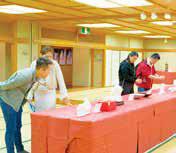
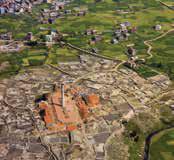
Lucid Group, maker of advanced electric vehicles, and King Abdullah University of Science and Technology (KAUST), an academic and research institution focused on science and technology innovation with regional and global impact, announced on 5th May a strategic partnership designed to shape the future of EV technology. Leveraging the growing resources in the Kingdom of Saudi Arabia, Lucid aims to further advance the company's technology leadership.
Marc Winterhoff, interim CEO at Lucid, said: "KAUST's worldclass research infrastructure and talent has the potential to further boost our technology leadership in many dimensions incl. our ADAS and AD roadmap, bringingcutting-edgeinnovation from the lab to the road.
"This collaboration also strengthens our global research and development footprint
bringing additional resources to bear in our efforts to continue as a leader in EV powertrain, battery systems, advanced materials, and software-defined vehicle platforms.
“As this partnership demonstrates, we continue to strengthen our collaboration with the Kingdom and are fully committed to working together to help achieve their vision to become a global centre for mobility innovation."
As part of this cooperation, LucidwillhaveaccesstoKAUST's supercomputing capabilities.
Edward Byrne AC, president of KAUST, said: "KAUST is proud to partner with Lucid to join our research capabilities with their real-world EV expertise while contributing to the Kingdom's strategic goals.
"This collaboration underscores our joint commitment to pioneering innovative solutions in electric vehicle technology."
Eric Bach, SVP of product and chief engineer at Lucid, said: "Access to high-performance computing at this level is truly transformative.
"It dramatically enhances our ability to develop advanced fluids, materials and alloys, simulate real-world physics for crash safety and structural optimisation, model fluid dynamics and thermal transfer, analyse electromagnetic flux, and accelerate AI training for digital twin technology, autonomous systems, and large language models.
“We are deeply grateful for this opportunity and excited about the breakthroughs it will drive across our engineering and AI initiatives."
Joint efforts will also focus on the design and prototyping of next-generation components and systems, integrating disciplines such as mechanical, electrical, thermal, and chemical engineering.

Advancements in materials science will play a pivotal role, with research dedicated to high-performance metallic and polymer-based composites, heat-reflective glass coatings, innovative laminates, and alternative non-conventional materials, each aimed at optimising vehicle efficiency and durability.
Thecollaborativeresearchand development activities will be hosted at KAUST's advanced laboratories in King Abdullah Economic City.
i2Cool, a pioneering company in electricity-free cooling technology, has announced a global strategic partnership with Marubeni, one of Japan's largest general trading companies. This collaboration aims to expand the global adoption of electricityfree cooling technology, with a particular focus on jointly developingelectricity-freecooling marine coatings and exploring innovative solutions within the shipping industry.
The signing ceremony was attendedbyMartinZhu,CEOand co-founder of i2Cool, along with Yasuhiro Arai, assistant general managerofMarubeni'schemicals department, and Yasuke Nagai, president of Marubeni Hong Kong & South China Limited. Zhusaid:"TheJapanesemarket, with its high level of technological acceptance and strong demand for environmental sustainability, offers a vast potential for the application of electricity-free cooling technology. This collaboration will facilitate
breakthroughs in localised production, adaptation to Japanese building and industrial standards, and cooperative promotion models."
With the rise of extreme temperature weather globally, the potential for applying electricityfree cooling technology is becoming increasingly prominent. This technology offers efficient and innovative energy-saving cooling solutions for various scenarios, including green buildings, industrial applications, and everyday protection. It has already been implemented in over 200 projects worldwide, covering more than 300,000 square meters.
i2Cool's flagship product, i2Coating,isanidealsustainable cooling solution for buildings and outdoor equipment, achieving surface temperature
cutting air conditioning energy costs by 10% to 40%. i2Coating hasbeensuccessfullyappliedto global architectural landmarks,
like the Dubai Mall and the Hong Kong Coliseum.
Marubeni representatives praised the coating's simplicity and immediate effectiveness, expressing confidence in its future market growth.
Under the agreement, both partieswillcollaboratetopromote the global implementation of electricity-free cooling technology, with a particular emphasis on expanding into the Japanese market. The partnership will also develop next-generation marine coatings to improve solar reflection and infrared radiation on ships, reducing cabin temperatures and air conditioning energy use.
Marubeni Corporation and its consolidated subsidiaries’ operations span various sectors, including lifestyle, information technology solutions, food, agribusiness, forest products, chemicals, metals and mineral resources, energy, power, infrastructureprojects,aerospace and shipping, finance, leasing
and real estate, construction, industrialmachineryandmobility, next-generation business and corporate development.
i2Cool is a green and energyefficient technology pioneer specialising in passive radiative cooling. Established by leading professors and young scientists from the School of Energy and EnvironmentatCity Universityof Hong Kong, i2Cool transforms cutting-edge research, featured in top journals such as Science, into innovative commercial solutions.
The company's core products are electricity-free cooling coatings and window films, along with a diverse range of other products such as textiles, membranes, automotive solutions, and ceramics. By leveraging proprietary nanomaterials, i2Cool achieves high solar reflectivity and mid-infrared emissivity, enabling zero-energy cooling with temperature reductions of up to 42°C.
Working people are expected to benefit from1,000jobsata new state-of-theartgigafactoryinSunderlandina £1 billion auto deal to accelerate the transition to electric vehicles andboostgrowth.
According to the government, this investment will be another boost for the British car industry a er UK’s landmark economic dealwiththeUnitedStatessaved thousands of jobs by slashing tari sonBritishexports.
The new AESC gigafactory will manufacture batteries for electric vehicles, powering up to 100,000EVseachyear,asix-fold increase on the country’s current capacity, making the UK globally competitive selling more British EVs at home and abroad and helping to achieve the country's netzerotarget.
In the landmark transaction, the National Wealth Fund and UK Export Finance will provide financial guarantees which unlock £680 million in financing from banks including Standard Chartered, HSBC, SMBC Group, Societe Generale and BBVA.
This will cover construction and operation of the new plant. The remaining £320 million has been securedthroughprivatefinancing inadditiontonewequityprovided byAESC.
In addition to this £1 billion investment, the government’s automotive transformation fund is also investing £150 million in grantfunding.
It is the government's Plan for Change which is being implemented in order for the country to become more competitive on the global stage, therebyhelpingthenationachieve itsgoalofbecomingasuperpower in clean energy by increasing innovation in the automobile sector, resulting in economic growth that results in higherskilled jobs and more money in people'spockets.
Chancellor Rachel Reeves said: “This investment in Sunderland will not only further innovation andaccelerateourmovetomore sustainable transport, but it will also deliver much-needed high quality, well-paid jobs to the NorthEast,puttingmoremoneyin people’spockets.”
Business and trade secretary, Jonathan Reynolds, said: “We arebackingourworld-classcar industry, and this investment is yet another vote of confidence intheNorthEast’sthrivingauto manufacturing hub which will secure a thousand well-paid jobsandboostprosperityacross theregion.
“Our modern industrial strategy will drive this growth even further, powering our highpotential sectors like advanced manufacturing so we can deliver jobs and investment in every corner of the UK and make our PlanforChangeareality.”
The Chancellor visited AESC in Sunderland on 9th May where shemetsta andlocalleadersto discuss how the investment will bring jobs and prosperity to the NorthEast,andhowthelandmark economic deal secured with the US will secure the industry for yearstocome.
Thedealslashescarexporttari s from27.5%to10%andwillapply to a quota of 100,000 UK cars –almostthetotalexportedlastyear.
This will save some car companies hundreds of millions
of pounds, making high skilled jobs in industrial heartlands like Sunderlandmoresecure.
Shoichi Matsumoto, CEO of Japanese headquartered AESC, said: “This investment marks a key milestone in AESC’s ongoing e orts to support the UK’s path towards decarbonisation and the expansionofitsEVmarket.
“Through close collaboration with strategic partners, we strive to accelerate this transition while creating high-quality local jobs and building resilient, sustainable supplychain.
“We are honoured to contribute to the development oflow-carboneconomywithour advancedbatterytechnologies.”
UKEFCEO,TimReid,said:“This hugelyexcitingprojectisaprime exampleofhowexportfinancing is a powerful tool for unlocking growth opportunities for British exporters and strengthening localeconomies.
“We are proud to join forces with partners to back this pioneering gigafactory that will helpcementtheUK’sprowessas an EV battery-making force for yearstocome.”
The Federal Institute for Materials Research and Testing (BAM), the Helmholtz-Zentrum Berlin (HZB), and Humboldt University of Berlin (HU) have signed a memorandum of understanding(MoU)toestablish the Berlin Battery Lab (BBL). The laboratory will pool the expertiseofthethreeinstitutions to advance the development of sustainablebatterytechnologies. The joint research infrastructure will also be open to industry for pioneeringprojectsinthisfield. Berlinhasestablisheditselfasan important location for research into sodium-ion batteries and lithium-sulphur batteries. The cityo ersconcentratedexpertise in these areas, supported by numerous research projects and high-profileresearchgroups.
The BBL will combine
the strengths of the three partner institutions: BAM has internationally recognised expertise in battery safety and electrochemicalenergymaterials.
HUBerlinisaleaderinGermany inacademicresearchonsodiumion batteries. HZB is particularly active in research on lithiumsulphurbatteries.
The laboratory aims to acceleratethetransferofmaterial developments into marketable products. In the field of basic research, material development ties in with the battery activities of the HZB large-scale research facilityBESSY-II.
The BBL activities culminate in the production of demonstrator cells and thus form an interface with safety and application tests. The collaboration between basic research, applied research, and certification enables a
faster transition from research to industrial application. This is particularly important in an increasingly protectionist trading world, where the availability of sustainable raw materials and thus the secure production of batteriesarecrucial,evenintimes ofcrisis.
The BBL is open to industry partners from all over Germany and Europe and serves to promote the development and production of locally manufactured sustainable batteries. Existing partnerships, suchaswithBASF,willbefurther expanded. In addition, physical laboratories are planned in Berlin to support research and developmentonsite.
BAM president Ulrich Panne said:“The planned establishment of the Berlin Battery Lab is a significant step for sustainable
batteryresearchinGermany.
“Through close cooperation with the Helmholtz Center Berlin andHumboldtUniversity,weare poolingourexpertiseandcreating auniqueresearchinfrastructure.
“This will enable us to bring innovative and sustainable battery technologies to market more quickly and thus make an important contribution to the energy transition. We look forward to working with our partners and industry to realise groundbreaking projects and further strengthen Berlin as a leading location for batteryresearch.”
Christoph Schneider, vice president for research at HU, said:“With the Berlin Battery Lab, we are building a bridge between excellent basic research and marketable, innovativetechnologies.
In March, the European Specialist Printing Manufacturers Association (ESMA) successfully completed its annual General Assembly in Milan, bringing industry leaders together for insightfuldiscussions,networking opportunities,andtheelectionof a new Board of Directors. In this year's assembly, Tracey Brown fromMeteorInkjetwasappointed thenewChairofESMA.
Theeventbeganontheevening of 20th March with two keynote presentations. Enrico Barboglio of Stratego Group presented an overview of the Italian printing sector, followed by Stefania Bolla of IXLA who presented cuttingedge technologies for security documentprinting.
During the assembly, Elaine Campling, a long-term Chair of ESMA's Health, Safety, and
Environmental Protection Committee, was awarded the honourableambassadorawardfor hercontribution.
Camplingsaid:“Iamprivilegedto havebeenpartofthecommittee forover20years.Itisdi cultto put into words how proud I am to have been named the ESMA Honourable Ambassador. This awardmeansalottome,coming from an organisation with great standing, which continues to evolve and remains strongly focused on providing value to itsmembership.”
Speaking on her new role, Brown said: “I have been an enthusiastic supporter of ESMA since 2018 and it has been a privilege to work with such a pivotal organisation. I am incredibly proud of what we o er our members, from expert technicalguidancetoinvaluable
networkingopportunities.
“With the launch of the new Screen Print Innovations (SPI) exhibition and the undeniable impact of the Industrial Print Integration (IPI) conference, the only event of its kind in the world, ESMA continues to thrive.Ilookforwardtoworking closely with the Board, the Management Team and the widerESMAcommunitytobuild on our successes and continue delivering tangible value to ourmembers.”
ESMAhasservedtheindustrial printing sector since 1990. The Europeanassociationforprinting manufacturers in screen and digital printing has grown into an organisation representing industrial, functional and speciality print. Over the years, ESMA has developed the Knowledge Hub concept, which

now provides cross-technology expertisetoalmost70European manufacturer members and Technology Partners. ESMA members have access to advantageous terms at major trade shows and ESMA's own conferences. Among the other benefits is the opportunity to attend technical seminars and committee meetings. Members and partners receive assistance and advice regarding health, safety, and environmental legislation as well as participate insettingindustrystandards.
In2024,wienerbergerachieved the third-best result in its history,despiteachallenging market environment, particularlyinthenewbuildsector.
The company increased total revenues by 6% to €4.5billion whilemaintainingarobustgrouplevel operating EBITDA margin of 17%. These results are based on disciplined cost management and operational e ciency and also confirm the resilience of wienerberger’s long-term valuecreatinggrowthstrategywithits targetedacquisitions.
wienerbergersaidinastatement that strategic acquisitions strengtheneditsmarketposition.
“Most construction markets globallydidnotrecoverasquickly as anticipated in 2024. Interest rates went down slower than expected, construction costs remained high and political uncertainties further decreased investment,” it said. “However, in 2024wienerbergeradheredtoits value-creating growth strategy andremainedfocusedonorganic growth through innovation and an increasing share of system solutionsinitsportfolioaswellas
growth through selected valueaccretivecorporateacquisitions.”
As a result, wienerberger profited from rising demand in certain markets that recovered faster than others. Especially the integration of Terreal, which advanced ahead of schedule, deliveredapositivecontributionto overallprofitabilityasitexpanded wienerberger’s activities in the growing renovation sector. The company also gained further market share in the sector of piping for water and energy management thanks to targeted investments in plant expansions andnewsystemsolutions.
Inaddition,strategicacquisitions, including Slatek OY in Finland, TekkenASinNorway(smartwater solutions) and GrainPlastics in the Netherlands (drainage and cable protection solutions), have expandedthecompany'sportfolio, optimised the supply chain and positionedwienerbergerforlongterm,sustainablegrowth.
Sustainability remains an integral part of its strategy, wienerberger emphasised. In 2024, the company continued to follow its ambitious 2026 goals
for decarbonisation, biodiversity and the circular economy by developing new solutions for ecologicalconstruction.
“One key achievement was the opening of wienerberger’s modernised nearly CO ₂ -neutral brick plant in Uttendorf, Austria, where the company installed the world’s largest electric industrial kiln and now operates Europe’s most sustainable brick productionfacility.Withtheseand other innovations, wienerberger continues to lead the green transformation of the entire constructionsector.”
Heimo Scheuch, CEO, Wienerberger, said: “Today, wienerberger is more resilient, innovative,ande cientthanever.
As part of our strategy, we are committedtodrivingthetransition towards climate neutrality –creating long-term opportunities forfuturegenerations.
“Sustainability and innovation go hand in hand and form the core of wienerberger. We will keep developing new solutions for ecological and innovative construction as well as smart water and energy

management solutions and lead the transformation of the entire constructionsector.”
According to Wienerberger, the company generates 33% of its revenue from innovative products, with a goal of reaching35%by2026.Pointing to the launch of Wioniq, it said it was one major step in bringing together four innovative companies, namely Inter Act, I-Real, Wideco, and Slatek, and creating a new platform for smart water and energy management solutions, which o ers significant growthpotential.
“By further increasing its innovationstrength,wienerberger willcontinuetofindnewwaysto reduce emissions, save natural resourcesandimprovethequality of life for current and coming generations,”itsaid.
In a crucial move to address unprecedented challenges facing the UK ceramics industry, Ceramics UK held a vital summit on 14th March, bringing together key stakeholders to finalise ‘The UK CeramicsIndustryRescuePlan’.
Hosted at the Sta ordshire Chamber of Commerce, the eventunitedapowerfulcollective of voices, including members of parliament from Stoke-onTrent and the Amber Valley in Derbyshire, regions with deeprootedceramicheritage,alongside trade union representatives, local government leaders, and prominent figures from the UK ceramicssector.
The summit facilitated open
dialogue and collaboration, enabling participants to identify key priorities and actionable strategiestosafeguardthefuture of this vital foundation industry from unprecedented threats, including soaring energy costs, cheap imports, forgery, and the costofdecarbonisation.
On 18th March, policymakers were presented with the rescue plan, which outlined key challenges and calls for decisive Government action to ensure the UK ceramics sector's long-term sustainabilityandgrowth.
Ceramics UK CEO Rob Flello stressed the critical urgency, stating: “The UK ceramics industry, a vital economic contributor, urgently needs
Governmentsupport.Thisrescue plan is essential for the UK Labour government to support this critical sector and its skilled workforce.”
InJanuarythisyear,asuccessful parliamentary event hosted by MrGarethSnell,MPonbehalfof Ceramics UK, provided members from across all areas of the organisation’sfoundationindustry with a valuable opportunity to discuss critical issues with governmentrepresentatives.
Over two hours, attendees spoke directly with the industry minister, as well as numerous MPs, including the business secretary’s parliamentary privatesecretary.
Key topics included the impact

of energy prices, carbon costs under the UK Emissions Trading Scheme, the Carbon Border Adjustment Mechanism, the risk ofo shoring,unfairimports,and theAutumnBudget.
Speakingatthetime,Flellosaid: “TheMinisterwasclearlylistening carefully but also already aware of the needs of our industry. We will continue to engage with her on possible solutions to the challengesweface.”
The collaboration between Reply, Marazzi and ACPV Architects Antonio Citterio Patricia Viel redefines a new connection between technological innovation and environmental sustainabilitythrough the productionofinnovativeceramics whose design is also generated through artificial intelligence (AI)algorithms.
A concrete step forward in the adoptionofinnovativesustainable technologies in industrial production where the integration of generative algorithms, inspired by principles of biomimesis, has made it possible to create patternsthatcombinetheorganic uniqueness of the natural world with the algorithmic precision of thedigitalone.
The project, which started in 2023 as an interdisciplinary experimentationbetweenthethree realities,nowseestherealisationof a special production ofgenerated
marbles, large stoneware slabs intendedtoconfiguresomespaces of Reply's new headquarters in Turin, at the former Caserma De Sonnaz, designed by Reply and ACPVArchitects.
Tatiana Rizzante, CEO of Reply, said: “The synergy between our team specialised in AI and machine learning with those of Marazzi and ACPV Architects has madepossiblethecreationofnew ceramic surfaces that reinterpret naturalmarbles.”
PatriciaViel,CEOandco-founder of ACPV Architects, said: "This project is an example of how AI, nurtured and guided by the architectural vision, can amplify human creativity and redefine productionprocesses.
“The ceramic surfaces resulting from this collaboration are not simply coverings, but unprecedented marbles, where technology and design sensibility cometogether.”
Oneofthemainchallengesfaced
by the team ofMachine Learning Reply, Reply Group company specialising in AI, andACPV Architectswas to reproduce marbles on a large scale, without creating an optical hallucination e ect and maintaining realistic e ectiveness applicable on large architectural surfaces, up to 3.2 metresinheight.
Theadoptionofthese‘generated marbles’ is part of a path that opensupnewcreativepossibilities and, at the same time, allows for the optimisation of key steps in the production process, such as materialprocurementandlogistics.
Marazzi, a major player in the industry, applies these algorithms to develop high-performance surfaces, integrating the technologyintomoree cientand resource-consciousproduction.
Mauro Vandini, CEO of Marazzi and president Mohawk Global Ceramic, said: "This project demonstrates how generative AI can transform ceramic design,
Cerabyte, a ceramicbased data storage solutions provider, announced 12th May a strategic investment fromWestern Digital Corp, a developer and manufacturer of storage solutions, including
hard disk drives. The partnership will accelerate the development of Cerabyte’s ground-breaking ceramic data storage technology, designed to meet the growing demand for permanent accessible longterm data storage in existing
andnewusecases.
Next-generation active archives will combine multiple storage technologies optimizing permanent data retention and accessibilityforthedigitalageas the industry is heading towards the Yottabyte era. Ceramic data
creating surfaces that not only respecttheenvironment,butalso elevatetheaestheticandfunctional standardsoftheindustry."
Asanetworkofhighlyspecialised companies, Reply specialises in the design and implementation of solutions based on new communication channels and digitalmedia.
Marazzi, present in more than 140 countries, is a producer of ceramics for floors and walls. It was founded in 1935 in the Sassuolo(Modena)district,which is well known for ceramic tile production.MarazziGroupispart ofMohawkIndustries,theworld's largest manufacturer in the flooring industry, a multinational group listed on the New York StockExchange.
ACPVArchitectsAntonioCitterio Patricia Vielis an international collectivewiththeaimofnurturing shared well-being through unique, high-profile architectural solutionsworldwide.
storage has the potential to enablenewusecaseswithbetter total cost of ownership (TCO) thancurrentcold-tiersolutions.
ShantnuSharma,chiefstrategy and corporate development o cer,WesternDigital,said:“We are looking forward to working with Cerabyte to formulate a technology partnership for the commercialisation of thistechnology.“
THE INNOVATIVE PRESS WITHOUT MOULD FOR BIG SLABS AND TRADITIONAL TILES





Very high productivity: up to 29.500 sqm/day
Use of standard body formulations




Deep and well-defined “structures” (3D surfaces) -50% operation costs (OPEX)

Confindustria Ceramica (theItalianAssociationof Ceramics)hasannounced the winners of the 2025 CeramicsofItalyTileCompetition. Thisyear’scompetitionfollowsthe successfulmergeroftwohistoric initiatives;theDesignCompetition in North America and Europe’s La Ceramica e il Progetto, which nowoperatesinalternatingcycles betweencontinents.
In 2025, the focus returned to North America, celebrating architect and design firms that demonstrate exemplary use of ceramic and porcelain tile from CeramicsofItalymemberbrands.
ofthisyear’sawards.
Spanning three categoriesresidential, non-residential and design & new applications-the competition drew a competitive pool of entries, with the international jury ultimately selecting five winners and three honourablementionsasrecipients
ThejurywaschairedbyLouisa Hutton, architect and founder of the Berlin-based practice SauerbruchHutton,andincludes Domitilla Dardi, historian and design curator at MAXXI in Rome; Luca Molinari, architect and professor of architectural theory and design at the University of Campania; Steve Clem, principal at the Atlantaand Tampa-based firm TVS;
and Emilio Mussini, chairman of the promotional activities and trade fairs commission of ConfindustriaCeramica. The projects were judged on overall design, sustainable attributes, the degree to which Italian tile enhances the setting, theamountofceramicorporcelain tilefromCeramicsofItalymember companies used throughout the project, and the quality of the tileinstallation.
GridRaster,aproviderof artificial intelligence (AI)-enabled cloudbased Extended Reality (XR) platforms that power high-performance and scalable Augmented Reality (AR)/Virtual Reality (VR)/Mixed Reality (MR) experiences for enterprises, announced 6th May the results of its latest study on workforce development in the USmanufacturingsector.
Theonlinestudy,presentedto morethan2,500manufacturing executives, reveals significant challenges in hiring and workforce enablement in responsetorecentpresidential tari s aimed at boosting US manufacturingactivity.
The study’s key findings include hiring challenges, investmentintechnologiesand e ectivenessoftechnologies.
In hiring challenges, 70.9% of respondents expressed
concern about adding labour as tari s lead to increased US manufacturing activity. The biggestchallengesinworkforce enablement were identified as skill gaps, employee engagement, training and development,andretention.
In terms of technology investments, 41.2% of respondents are currently using AR/VR and automation technologies, and 40.8% plan to do so in the near future. Thesetechnologiesareseenas crucialforenhancingworkforce e ciencyontheplantfloor.
In terms of the e ectiveness of technology, 61.8% of respondents rated workforce enablement technologies as e ective in addressing challenges, with AR/VR and automation technologies beingparticularlyhelpful.
Respondents,primarilyCEOs, COOs, CFOs, and HR directors, represent organisations of
varioussizes,withthemajority facing challenges such as skill gaps, employee engagement, training and development, and retention. To address their labour challenges, many executives plan to invest in new technologies, including learningmanagementsystems, human resource information systems, collaboration tools, performance management so ware, and AR/VR andautomation.
The study also highlights concerns about the cost, complexity, employee resistance, and integration of new technologies. Success in workforce enablement is measured through employee performance metrics, satisfaction surveys, retention rates, and productivity metrics. Overall, the findings underscore the importance of innovative solutions to support the US
manufacturing workforce and enhanceproductivity.
Rishi Ranjan, CEO of GridRaster, said: "The findings highlight the urgent need for innovative solutions to support the US manufacturing workforce. At GridRaster, we arecommittedtoprovidingAR/ VR technologies that enhance human capital e ciency to helpemployeesdomoreonthe manufacturingfloor."
GridRaster works with manufacturers in automotive, aerospace and defence, and technology to launch and scale AR/VR/MR solutions. The company utilises a cloudbased approach leveraging distributed edge computing, low-latencyremoterendering, 3D artificial intelligence (AI) and DevSecOps based agile deployment to help clients overcome performance, scalability, and legacy projectlimitations.
Acollaboration between Morgan Advanced Materials and the University of She eld has helped Morgan develop a new, longer-lasting saggar, a ceramic box used in the production of cathode active materials, that could help manufacturers save money and avoid preventable accidentsduringmanufacture.
Activating the precursor material used in battery cathode manufacture involves heating this material at an extremely
hightemperatureinatunnelkiln. Saggars are the ceramic boxes used to hold the precursor as it movesthroughthekiln,aprocess thatcantakeupto20hoursinan environmentwheretemperatures routinely reach 800-900°C. These extreme conditions, and the corrosive nature of the precursormaterial,meansaggars havealimitedshelflife. Ifasaggarbreaksinthekilnthe consequencescanbeserious.The clean-upoperationcantakeupto twoweeks,costingmanufacturers vitalproductiontime.
Inigo Anza, global technology director, Molten Metal Systems business, said: "A saggar can typically withstand 30 cycles through the kiln before the risk offailurebecomestoogreat.The precursorwillstartattackingthe surface of the saggar and this leads to surface spalling and cracksappearing.”
Anza’s team at Morgan Advanced Materials develops and makes a wide range of refractories (materials resistant to heat) for di erent industries. The team has also
been working on the new saggar for battery production, built using a proprietary materialcomposition. Atthetimeofconnectingwith the University of She eld, the precursor powder used in the production of active cathode material was not easy to source in the amount required to prove the new Morganite LiB saggar longevity, due to it being a carefully guarded industrial secret by cathode manufacturers and not being commerciallyavailable.
QinetiQ US announced that it has received a contract to support theUS Army's Future Long Range Assault Aircra (FLRAA) programme from Integris Composites to provide systems engineering and integration expertise using its LASTArmorIntegrationsolution.
For over 20 years, QinetiQ has been the largest global provider of add-on aircra armour. LAST Armorisaprotective,lightweight armour solution that provides high-performance ballistic protectionforfixedwingtransport androtarywingplatforms.
Since its debut in Operation Desert Storm in 1991, LAST Armor has protected thousands of combat air and land vehicles. Today it is installed in over 40 di erent aircra types across 16 allied countries around the world. LAST Armoris used by the US military, foreign allies, commercial OEMs, and law enforcementagencies.
Christopher Forrest, executive vice president of advanced robotics and mission solutions at QinetiQ US, said: "QinetiQ US is honouredtopartnerwithIntegris Composites,along-timesupplier partner, to deliver a tailored armoured survivabilitysolution fortheU.S.Army'sFutureVertical Li programme.
"Utilising high performance fibres and advanced ceramics, LAST Armorsolutions o er proven traditional ballistic protectionformissionsuccess."
Andrew Bonham, president of Integris Composites, said: "All of usatIntegrisareproudtobepart oftheteamdevelopingwhatwill becometheUSArmy'snewlongrangeassaultaircra .”
The company is the US component of Integris Composites which is the new name for TenCate Advanced Armour,thathasbeenaresource forform, safety, dependability
andsurvivabilityformorethana quartercentury.
QinetiQ US develops and manufacturesLASTArmoratits Franklin,Massachusettsfacility.
QinetiQ US is a defence and national security company providing mission-led, customer-focused engineering and innovative solutions for next-generation ISR, advanced cyber technology, mission operations and multi-domain autonomous systems to deliver a decisive and actionable informationadvantage.
As a provider of secure, technologically advanced services and products to the U.S. Department of Defense, Homeland Security, Intelligence Community and other national security agencies, QinetiQ US partners closely with customers to deploy new capabilities protectinglivesandthenation's vitalinterests.
QinetiQ US operates under

a Special Security Agreement (SSA) with the US government. As the US subsidiary of QinetiQ Group,itmaintainsindependent governance and oversight to protect classified information and ensure full compliance with US national security requirements.
Integris is a global manufacturer of composite armour for land, aircra , naval cra , radomes, protection housings for optronics and other sensitive technology as wellaspersonalprotectiongear. Integris Composites operates its manufacturing and technical centreinLickingCounty,Ohio.
Northwestern University
Trustee Kimberly K Querrey(’22,’23P)has made a $10 million gi to create and enhance theQuerrey Simpson Institute for Regenerative Engineering at Northwestern University(QSI RENU), bringing her total giving to the institute to $35 million. The new institute will advance the development of medical tools that empower the human body to heal, focusing on the regenerationorreconstructionof varioustissuesandorgans,such astheeyes,cartilage,spinalcord, heart,muscle,boneandskin.
Building on the University’s longstanding excellence in cross-disciplinary team science and Querrey’s two decades of visionary support of the biosciences at Northwestern, RENU will tackle the most complex challenges in regenerative medicine. As part of a University-wide priority to advance the biosciences, the large-scale institute will help accelerate patients’ recovery from injuries and surgeries, develop bioengineered tissues
andorganstoreducerelianceon donortransplants,andmore.
Over the years, Querrey andher late husband, Louis A. Simpson’58(’96P),havebuiltan outstandingphilanthropiclegacy at Northwestern, benefiting biomedical research, endowed academicpositionsandbusiness educationaswellasscholarships, building projects, and athletics and recreation. The new gi announcedbrings their total contributions to the University to $391 million, making them among the most generous donorsinNorthwesternhistory.
Thebody’sinabilitytoactivate the regeneration of diseased, injured or missing tissue is a significant obstacle in health care. This issue spawned the emerging field of regenerative engineering, which converges advances in materials science and engineering, stem cell and developmental biology, translational medicine and data science/artificial intelligence to create scalable and reliable tools that preserve, restore and augment tissue and organfunctions.
President Michael H Schill said: “Kimberly Querrey’s visionary philanthropy and enduring commitment to advancing cutting-edge research have made an incredible impact here at Northwestern, and we are deeplygrateful.
“Fuelled by her latest gi , the Querrey Simpson Institute for Regenerative Engineering at Northwestern University will leverage our leadership in pioneering innovative health caresolutions.”
Faculty from Northwestern’sMcCormickSchool of EngineeringandFeinberg School of Medicinewill drive the institute’s dynamic research and educationecosystem.
University Provost Kathleen Hagerty said: “QSI RENU represents a significant opportunity to unite world-class mindsfromacrossNorthwestern, including engineering, medicine and beyond, to pursue breakthroughs that will redefine howweheal.
“This interdisciplinary synergy promises to unlock profound advancements in regenerative
medicine, keeping Northwestern at the forefront of medical innovation.”
The institute’s inaugural director isGuillermo Ameer, the Daniel Hale Williams professor of biomedical engineering and surgeryatNorthwestern,whohas dualappointmentsinMcCormick and Feinberg. Ameer is a leader in regenerative engineering, biomaterials, additive manufacturing for biomedical devices, controlled drug delivery and bio/nanotechnology for therapeuticsanddiagnostics.

Near-infrared photodetectors are used in biomedical sensing and defence and security technologies. For enhanced performance and integrated, compact imaging systems, the photodetectors must be able to detect multiple wavelengthsoflightatonceona singlechip.
Quantum dots. tiny crystals made of semiconducting material, could present a path forward because di erent-size dotscanbeengineeredtoabsorb di erent wavelengths of light. However, depositing films of quantum dots is di cult on the textured, corrugated surfaces usedintheinfraredregime.
In a study published in Nanoscale, researchers at Lawrence Livermore National Laboratory (LLNL) presented a newmethodtodepositquantumdotfilmsoncorrugatedsurfaces. The technique eliminates the need for post-processing and advances the scalability and performance of quantum dotbasedphotodetectors.
Intheinfrared,arraysofpyramids
or other microstructures can improvetheopticalperformance of photodetectors by increasing the probability that photons will beabsorbed.
LLNL scientist and author Tom Nakottesaid:“Texturedsubstrates allowformoree cientutilisation ofincominginfraredlight,thereby improving detector responsivity without requiring excessively thickquantum-dotfilms.
“However, conformally coating suchnon-planargeometrieswith uniform, crack-free quantumdot films is challenging with traditionaldepositionmethods.”
To address this problem, the team used electrophoretic deposition, which drives charged particles through a solution with anelectricfield.Whenimmersed in this liquid environment, quantum dots migrate toward an electrode with the opposite charge. When they reach that electrode, they assemble into afilm.
LLNL scientist and author Christine Orme said: “By turning the electric field on or o , one can start or stop the depositionprocess.
“Additionally, since only surfaces under an applied bias receive deposition, electrophoretic deposition naturally enables selective coating, allowing quantum dots to be deposited only on predefined regions of a patternedchip.”
Traditionally, quantum dots are synthesised with long organic ligands, molecules that bind to the dots and stabilise them in solution. But a er the quantum dots are deposited as a film, those long ligands act as insulators, hinder charge transport, and limit device performance. Removing long ligands with post-processing increases production time and thelikelihoodofdefects,asitcan createlargecracksinthefilm.
With careful solvent (liquid) engineering, the researchers fabricated quantum dot films usingshortligands, which are moreconductiveandnegatethe needforpost-processing.
LLNL scientist and author Xiaojie Xu said: “By combining in-solution ligand exchange with electrophoretic deposition,

this paper showed that dense, conformal and electronically functional quantum-dot films canbedepositedinasinglestep.”
To demonstrate the technique, the group created two simple photoconductors that showed theexpectedresponsetolight.
While this study demonstrated theabilitytocreatequantum-dot filmsonpatternedsubstrates,the next step will involve depositing di erent sizes of the dots on di erentregions.Thiswillenable tailored sensors that can detect multiplewavelengthsoflight. Thisworkwasperformedaspart ofaLaboratoryDirectedResearch andDevelopmentprojectentitled ‘SolidStateGammaRayDetection Using Quantum Dots.’ LLNL’s JennyZhouwasalsoanauthor.
Rensselaer Polytechnic Institute (RPI) is proud to welcome the second cohortofHudsonValley Community College (HVCC) students to the Semiconductor Scholars Program, an initiative supported by NORDTECH DoD MicroelectronicsHub.
Building on the success of last year’s inaugural class, this unique program provides HVCC students the opportunity to participate in an immersive summer filled with experiential learning, engagement with RPI faculty and facilities, and opportunitiesfornetworkingand career development in upstate New York’s rapidly growing semiconductorindustry.
This year’s cohort includes Marwarn Mohmood, Klay Collari, SameerAbbaszadeh,ChrisBachorik, andEzdenKoopman,allpromising STEM students from HVCC eager to deepen their exposure to semiconductortechnologies.
The programme o cially
kicked o on 21st April, with a welcome event hosted by Shekhar Garde, the Thomas R. Farino Jr. ’67 and Patricia E. Farino dean of the School of EngineeringatRPI.
Students were joined by Hector Rodriguez, dean of STEM at HVCC, Darrilyn Di Nardo, NORDTECH workforce development coordinator, as well as RPI faculty, sta , and researchers who will serve as mentors throughout the scholars’yearlongjourney.
The experience begins with an industry site visit to GlobalFoundries in Malta, NY, one of the world’s leading semiconductor manufacturers, wherestudentswillgetabehindthe-sceneslookatcutting-edge chipmaking processes in an advancedfabricationfacility.
Following the site visit, students will participate in a six-week summer immersion programme at RPI, led by Muhsin Celik, professor of
practice in the department of electrical, computer, and systems engineering. This intensiveexperiencewillprovide exposureandhands-ontraining in modern semiconductor technologies that are shaping thefutureofthechipindustry.
RPIfacultyleadersunderscored the importance of the programmeandtheimpactithas onbothstudentsandthebroader semiconductorecosystem:
Garde said: “RPI is deeply committed to building a strong semiconductor workforce pipeline. This RPI-HVCC collaboration creates access, a ordability, and opportunity for community college students. We believe that with appropriate support this model can be replicated and scalednationally.”
Lucy Zhang, associate dean for research innovations, partnerships, and workforce development, and professor of mechanical, aerospace,

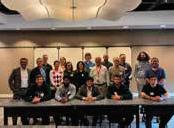
and nuclear engineering, said: “The students in the RPIHVCC Semiconductor Scholars Program are bright, driven, and hardworking. When I meet them,Iseethefutureleadersof thetechnologyindustry.”
Funded by NORDTECH, the Semiconductor Scholars Program is an example of collaboration between an R1 STEM institution and a strong community college, working together to prepare a highly skilled workforce for the growing demands of the U.S. semiconductorsector.

Vedanta Aluminium, India’s largest aluminium producer, marked World Earth Day 2025 by highlighting its milestone achievements across biodiversity conservation, wasteto-wealth initiatives, and renewable energy adoption. These efforts reflect the company’s integrated approach to advancing sustainability in core operations while empowering rural communities in the vicinity of its locations.

A key milestone achieved recently was the dispatch of the 650th fly ash rake from Vedanta’s mega aluminium plant in Jharsuguda. Fly ash is commonly used in the ceramic industry to make bricks, tiles, and other ceramic products. As a raw material, it provides a cost-effective and sustainable alternative to traditional materials.
Since March 2022, the company has supplied over 1.5 million tonnes of fly ash to major cement manufacturers and three million tonnes for use in National Highways Authority of India (NHAI) projects.
An additional 0.3 million tonnes have been supplied for fly ash brick manufacturing by MSME enterprises. In FY25 alone, 223 rakes were dispatched, helping the company achieve 113% fly ash utilisation across its operations. The consignments are GPS-enabled to enable easier tracking and delivery, with the health of ash dykes (where fly ash is initially stored) also monitored via InSAR and drones.
In addition, Vedanta Aluminium has also joined hands with PwC for comprehensive biodiversity and carbon reduction projects, planted over 1 lakh saplings under its Matrivan initiative in Jharsuguda as part of the Government of India’s Ek Ped Maa Ke Naam campaign, and has signed an MoU with GAIL for the supply of natural gas to support Vedanta’s

upcoming 430 kilo tonnes per annum (KTPA) cast house.
In observance of Earth Day, the various units of Vedanta Aluminium in Odisha and Chhattisgarh organised a series of awareness and engagement events.
Commenting on the significance of these initiatives, Rajiv Kumar, CEO, Vedanta Aluminium, said: “At Vedanta Aluminium, Earth Day is not merely a single-day observance but a reflection of how we work every day with accountability to the environment and to future generations.
“Whether it’s the dispatch of our 650th fly ash rake, renewable interventions in mines, or restoring threatened species, our efforts are focused on closely aligning industrial growth with a greener, more sustainable outlook.”
Vedanta Aluminium continues to align its sustainability vision with India’s decarbonisation goals and the United Nations Sustainable Development Goals, with a clear roadmap to achieve Net Zero by 2050 or sooner.
Vedanta Aluminium, a business of Vedanta Limited, is India’s largest producer of aluminium, manufacturing more than half of India’s aluminium i.e., 2.42 million tonnes in FY25. It is a leader in value-added aluminium products that find critical applications in core industries.
The company ranks second in the S&P Global Corporate Sustainability Assessment 2024 world rankings for the aluminium industry, a reflection of its leading sustainable development practices. With its world-class aluminium smelters, alumina refinery and power plants in India, the company fulfils its mission of spurring emerging applications of aluminium as the ‘Metal of the Future’ for a greener tomorrow.
The Advanced Materials Show USA will be held on September 30 and October 1, 2025, in Columbus, Ohio. The event is a two-day show focused on the latest materials, innovations, and technology for end-users, product developers, and the material manufacturing supply chain,
The Advanced Materials Show USA will host the ceramitec USA Pavilion. For decades,
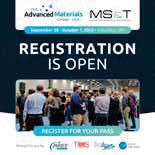
ceramitec has been one of the world’s premier platforms for technical ceramics, powder metallurgy, and high-performance ceramics. It provides companies, researchers, and decisionmakers with a central venue to showcase innovations and explore new markets. Now, this international influence comes to the US, offering a dedicated pavilion covering the entire technical ceramics value chain.

Ceramics UK has achieved a major milestone in its ‘Demonstrating Hydrogen in the Ceramics Sector’ project, hosting a highly successful open-day event in March that showcased the pilot kiln and its potential for 100% hydrogen firing.
Members from across the UK ceramics industry joined the event to witness this landmark achievement and explore the project’s journey towards sustainable manufacturing
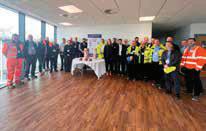
This initiative has been made possible through £6 million in funding awarded to Ceramics UK by the Department for Energy Security and Net Zero, via Phase 2 of the Industrial Fuel Switching Phase 2 Competition.
This funding forms part of the £1 billion Net Zero Innovation Portfolio (NZIP), which provides funding for low-carbon technologies and systems and aims to decrease the costs of decarbonisation helping enable the UK to end its contribution to climate change.
With this funding, Ceramics UK aims to demonstrate the feasibility of using hydrogen as a clean fuel source in ceramic kilns, contributing to the industry’s efforts to achieve
net-zero emissions.
Held at the Glass Futures site, the exclusive event provided attendees with an in-depth overview of the project’s objectives, progress, and key achievements. Participants were able to tour the pilot kiln and Glass Futures site, gaining a detailed understanding of its design and the technology that will enable future 100% hydrogen firing.
Andrew McDermott, deputy CEO, Ceramics UK and project lead, said: "We are thrilled to have shared this significant milestone with our members and industry stakeholders.
"The opportunity to tour the pilot kiln and understand its capabilities, made possible through vital government funding, is a crucial step towards demonstrating the viability of hydrogen as a clean energy source for the ceramics industry. This project is a crucial step towards reducing carbon emissions and ensuring a sustainable future for the UK ceramics sector."
Building on the success of this event, Ceramics UK will soon announce details of a second event, providing further opportunities for industry engagement and project updates. Stay tuned for further information.
The first ever scientific long-term study on 3D-printed bioceramic patient specific implants (PSI) shows impressive results of over 92% total success rate achieved with Lithoz's LithaBone TCP 300 tricalcium phosphate material.
Processed on a Lithoz CeraFab printer, these implants display the high medical standards of Lithoz technology which since recently is produced under an ISO 13485 certified quality management system. This pioneering study, that evaluates the healing success of LCM-manufactured ceramic implants in human bodies over a follow-up period of five years, will significantly support the distribution of ceramic3D printingin surgery.

interconnected pores.
The study also found that the rapid growth of new bone tissue in the beta-TCP implant is promoted. Prior to this study, surgeons had yet to find an ideal solution to the postoperative development of mandibular lower border defects and irregularities following bilateral sagittal split osteotomy (BSSO).
Emphasising the study's pioneering character and fundamental importance for the entire 3D printing industry, Johannes Homa, CEO, Lithoz, said:"This first ever long-term clinical follow-up study marks an historic moment for the entireadditive manufacturingindustry.
In a minimally invasive approach, 14 patients between 17 and 57 years of age suffering from dysgnathia were treated with patient specific implants (PSI) produced on a Lithoz CeraFab printer to prevent antegonial notching.
Delivering ideal osteoconductivity and osteoinductivity, the study clearly confirmed the implants' potential to reconstruct and bridge healing gaps occurring after surgical bone cutting intervention (‘osteotomy gap’") due to its
“These results are not only about celebrating a great achievement for our Lithoz LCM technology. By clinically proving a success rate of over 92%, we have set a gamechanging milestone in the history of surgery to establish the 3D printing of patient-specific bioceramic implants as a fullyfledged alternative alongside traditional surgical interventions."
The clinical paper's conclusionshows "the feasibility and potential of the -TCP gap PSI concept as an innovative and promising approach to prevent antegonial notching after BSSO at primary surgery and in the long term."

Doctoral student Natalie Yaw came to Lawrence Livermore National Laboratory (LLNL) as a summer intern. But when her time at the Laboratory ended, her work did not. She took the lead to write a paper based on her findings, and the result was published in Inorganic Chemistry Frontiers.
As a Department of Energy Nuclear Energy University Program fellow, Yaw chose to intern at LLNL because of its materials research capabilities. Her publication explores hydrogelinfused additive manufacturing (HIAM) of ceramics, which are essential materials in industries like aerospace because of their high thermal stability, chemical resistance and mechanical strength. In particular, 3D-printed ceramics offer design flexibility, reduce material waste, accelerate production and support tailored applications.

metal salts both play key roles in determining the ceramic's quality, density, porosity and strength. By evaluating the impacts of these precursors, the work provides valuable insights for optimizing ceramic quality and shape, creates a foundation for expanding HIAM to new materials and applications, and addresses a knowledge gap in the HIAM space.
Throughout this research, Yaw found the collaborative environment and wide-ranging expertise at LLNL to be an asset.
“I had several ‘aha’ moments when talking to people in different disciplines who had completely different perspectives on my work and ideas I would never have considered,” she said. “It really highlighted the importance of interdisciplinary collaboration.”
Yaw worked closely with LLNL research scientist Maryline Kerlin on the project.
To address challenges associated with traditional ceramic manufacturing, HIAM separates the printing step from the ceramic material. The process starts with a viscous orange resin, which is used to 3D print an initial gel. That gel is converted into a hydrogel via a few processes, including infusion with a metal salt solution. From there, much like the firing of traditional ceramics, the hydrogel is heated to burn off organic components and convert the metal salts into metal oxides.

The study shows that the hydrogel formulation and the type of
Kerlin said: “This was Natalie’s first experience as a lead author, and together we navigated the challenges of writing, revising and addressing feedback, including conducting additional experiments to strengthen the paper. I believe her story reflects the incredible opportunities LLNL provides for young scientists.”
Yaw will soon start the final year of her PhD programme and is interested in pursuing science policy. She advises anyone curious about an internship at LLNL to reach out directly to the scientists in their field of interest.
KaMin and Omya announced in May that the two companies have entered into a new agreement to supply kaolin into the packaging and paper market in Europe. OMYA will continue to provide sales and technical support to customers, and KaMin will now handle order processing and logistics arrangements and maintain inventory directly.
Mike W Nelson, KaMin president and CEO, said: “This new agreement builds on our long-standing, trusted partnership with Omya.
“By leveraging the strengths of both organisations, we will continue to provide exceptional product and service solutions to our customers throughout Europe.”
Thoralf Gliese, Omya executive vice president, sales, marketing and innovation, said: “This transition represents the next phase in our enduring and successful partnership with KaMin.
“We are dedicated to maintaining this collaboration to support our focus on advancing fibre-based solutions and ensuring the paper and board industry continues to receive the same unwavering support and expertise our customers have come to expect.”
KaMin and Omya have enjoyed a solid partnership for many years that continues to deliver quality solutions to customers
around the globe.
KaMin is recognised as a global leader that enhances the performance of everyday products through innovative mineral solutions. With more than 100 years of experience and nearly 1,000 employees worldwide, the company delivers performance mineral solutions for a broad spectrum of enduse markets including building and construction, automotive, agriculture, health and beauty, packaging, and specialty and graphic paper.
From 11 production and converting facilities, KaMin creates solutions from the ground up for customers in more than 70 countries.
Omya is a leading global producer of industrial minerals, mainly fillers and pigments derived from calcium carbonate and dolomite, and a worldwide distributor of specialty chemicals. The company provides a wealth of product solutions that contribute to its customers' competitiveness and productivity in multiple industries such as construction, printing and writing, technical polymers, packaging, food, personal and home care, pharmaceuticals, agriculture, forestry, water and energy. Founded in 1884 in Switzerland, Omya has a global presence extending to more than 175 locations in over 50 countries with 8,000 employees.

Against strong international competition, Nutec Bickley has won the contract to supply a four-car shuttle kiln to one of the world’s foremost energy technology companies. This kiln will be installed at the customer’s investment casting facility and will be used to sinter the ceramic cores that are so important for the process. Depending on the exact nature of the cores, the firing cycle will be anything from 20 up to 80 hours.

excess air only when it is required, thereby enhancing both process control and fuel efficiency. Once the sintering cycle is complete, the IMPS cooling mode is initiated and is available for multizone temperature control. Cooling air is supplied to the kiln through the burners, as well as through automatic air-cooling nozzles for shorter cycle times. The cooling nozzles pulse together with the burners’ control zones according to the input required by the cycle and load.
Alberto Cantu, Nutec Bickley’s vice president, Ceramics, said: “Our expertise is widely respected by this customer, with our having previously worked with another of its subsidiaries, a major transformer manufacturer, supplying 15 furnaces and ovens in the last 10 years.
“Advanced technologies and cutting-edge manufacturing are at the heart of this global corporation’s strategy, and we are proud to have been selected to assist in expanding and improving ceramic core production.”
The gas-fired shuttle kiln will typically operate up to 1100°C and employs a twin-deck kiln car setting.
Setting dimensions for each car are 1.19m long x 1.59m wide x 0.87m high and the kiln’s effective load volume across the four cars is 6.55m³ (average total product weight of 440kg).
Sintering is achieved via 12 high-velocity nozzle-mix burners, each individually controlled with its own automatic ignition and safety system, firing above and below the load in a staggered sequence. These high-performance burners, and the way they are configured, provide optimum levels of turbulence and heat transfer, which in turn promotes excellent temperature distribution and uniformity throughout the load.
This kiln will benefit from integration of Nutec Bickley’s proprietary IMPS combustion control system, configured to deliver pulse control across eight multi-temperature zones, alternating between high and low fire with variable excess air. In practice, this means adjustable and programmable levels of excess air throughout the sintering cycle. The system introduces
Considering all kiln zones and sintering modes, IMPS offers a number of important benefits to the customer, including energy savings, Improved process control and reduced NOx generation.
Sintering of ceramic cores is further optimised by the integration of Nutec Bickley’s chamber pressure control system that guarantees process stability by using a linear flow-controlled exhaust damper. This is fabricated with a cordierite multi-louvre with silicon carbide shafts. The system provides precise control of the exhaust gases and chamber pressure.
All kilns for advanced manufacturing rely on the very highest quality insulation, and this is no exception. The kiln walls are fully lined using Nutec’s US patented high thermal efficiency Jointless ceramic fibre system for excellent insulation and long life coupled with low maintenance. The fibre lining is rated at 1425°C. The kiln side wall to kiln car seals are constructed using a combination of refractory and insulation brick with a double-labyrinth seal to prevent heat loss and radiation leakage from the kiln chamber, as well as preventing the infiltration of cold air. A sand seal is incorporated to aid in this system.
In operation, the kiln door is opened at the end of the sintering cycle to permit the four kiln cars to be removed. A second set of cars with unfired product is then moved into the kiln so that a new firing cycle can begin. Nutec Bickley will supply eight cars as part of this contract. Kiln car movement is via a semi-automatic transfer car system that will move the cars from the kiln and to two different stations, each of which includes sensors to position the cars in loading/unloading positions.
Imerys introduces sustainable, catalyst-free graphite
Imerys, a global company in specialty mineral solutions, has introduced SU-NERGY, which it said is a breakthrough in sustainable graphite solutions that is the first of its kind at industrial scale.
The company said the product achieves up to 60% reduction in CO ₂ emissions compared to traditional graphite from fossil fuel-based raw materials. SU-NERGY represents a significant advancement in responsible resource management and circular economy practices, addressing the complexities of the European Union (EU) manufacturing supply chain and setting new standards for environmental performance in graphite production.
According to Imerys, its facility in Bodio, Switzerland, has revolutionised graphite production by transforming forest residues into high-performance material using 100% lowcarbon energy sources for production.
The company said: “This innovative process achieves up to 60% reduction in CO ₂ emissions compared to traditional methods, setting a new standard for sustainable
graphite manufacturing.
“SU-NERGY substantially reduces environmental impact while maintaining superior performance characteristics, offering a powerful solution for manufacturers seeking both sustainability and excellence without compromise. Additionally, the Bodio facility also benefits from nuclear energy certification.” Frank Wittchen, vice president and general manager, graphite and carbon division at Imerys, said: "SU-NERGY isn't just a new product; it's reshaping the graphite landscape. By producing in Switzerland using renewable resources, we're offering a highperformance, customizable solution that reduces environmental impact and mitigates supply-chain risks. We're not just meeting industry needs – we're redefining them, paving the way for a cleaner, better future."
SU-NERGY's high purity, combined with its superior electrical and thermal conductivity, makes it incredibly versatile to meet the evolving needs spanning a wide range of industries, including automotive, energy storage, electronics, metallurgy, and various other industrial sectors.

Andromeda Metals Limited announced it has progressed its plan to commercialise the production of the critical mineral high purity alumina (HPA).
The successful test work follows over seven years of investigation, research and metallurgical test work by the company, which ultimately led to the development of the novel process flowsheet.
HPA samples produced from the test work were submitted for independent analysis to EAG Eurofins USA, a globally recognised leader in materials testing located in the United States of America; and the analysis conducted by EAG Eurofins USA confirmed the HPA sample as 99.9985% pure, which was independently confirmed by analysis conducted by Australia’s National Science Agency, the Commonwealth Scientific and Industrial Research Organisation (CSIRO).
The drive to produce HPA from kaolin stems from the growing demand in established expanding markets for the manufacture of synthetic sapphire used in light-emitting diodes (LEDs), semiconductors, wearable tech, lithium-ion batteries and hightech ceramics. Demand for HPA is predicted to outstrip global supply by 45% by 2028.
Reportedly 88% of global HPA production is currently being made by hydrolysis through synthesizing aluminium alkoxide from high-cost aluminium metal which currently trades at between US$2,000- 2,500/T and is predicted to continue rising. Andromeda’s novel process using kaolin from the GWP provides a significant cost advantage.

Andromeda’s novel flowsheet uses established metallurgical unit operations to refine the aluminium oxide (Al2O3) from kaolin. The successful trials at lab scale of the flowsheet sets Andromeda apart from other HPA producers, as the process is more cost and carbon effective than other reported processes.
Importantly, the novel flowsheet does not require hydrochloric acid (HCl) crystallisation of ACH (aluminium chloride hexahydrate), nor re-leaching using acid at high temperatures and under high pressure to achieve high purity levels. It also does not need the product to be calcined typically above 1250oC to remove chlorides.
Sarah Clarke, Andromeda’s acting CEO said: “Whilst Andromeda’s primary focus remains the development of the Great White Project, the production of HPA is a high-value and complementary opportunity.
“This latest test work validates our novel flowsheet, showing our Great White CRMTM product from the Great White Project can be used to produce HPA at an impressive 99.9985% purity.
“These outstanding results demonstrate the potential to expand Andromeda’s product portfolio in the future to include a value-added critical mineral. These results also underpin our confidence in progressing HPA through to the next stage of development.
“The premise of producing HPA, a high-value, in-demand product, at lower cost and reduced carbon intensity compared to established processes should be highly attractive to any manufacturers using HPA in their products.”
On 2nd May, the Federal Permitting Improvement Steering Council (Permitting Council) announced the second instalment of critical mineral production projects to be featured as FAST-41 transparency projects.
This second batch of projects is part of an ongoing series of critical projects receiving the transparency of the Federal Permitting Dashboard in response to President Trump’s Executive Order,Immediate Measures to Increase American Mineral Production.
Manisha Patel, acting executive director, Permitting Council, said: “The Permitting Council is excited to grow our portfolio of critical mineral production projects with this latest tranche.
“The transparency that these projects will receive as a result of being featured on the Federal Permitting Dashboard will be transformative, allowing stakeholders across government and industry the ability to track the progress of these projects, ensuring a level of accountability in environmental review that is often missing from the traditional process.”
The chair of the National Energy Dominance Council (NEDC) submitted this second batch of critical minerals production projects to the Permitting Council Acting
Executive Director in response to President Trump’s Executive Order,Immediate Measures to Increase American Mineral Production.
NEDC submitted the initial group of 10 projects on 4th April 2025, and they were added to the Federal Permitting Dashboard on18th April. This second batch is part of a continual process to provide these critical projects with the transparency afforded by FAST-41 and more projects are scheduled to be added in the coming weeks.
Inclusion on the PermittingDashboard as a transparency project makes the environmental review and authorisationsschedule for these vital mineral production projects publicly available and allows all of these projects to benefit from increased transparency.
The public nature of the dashboard ensures that all stakeholders, from project sponsors and community members to federal agency leaders have up-to-date accounting of where each project stands in the review process.
This list of projects is in addition to the initial list announced18th April with more additions expected to be announced soon.

industriebitossi.com

Sibanye-Stillwater announced the 89 megawatt (MW) Castle wind farm (Castle), a facility dedicated to supplying renewable energy to Sibanye-Stillwater’s South African (SA) operations, has achieved commercial operation. This marks a significant milestone for the Group and for South Africa's private renewable energy sector, with Castle being the largest private-offtake wind farm in operation in South Africa to date.
Located near De Aar in the Northern Cape, the project benefits from some of South Africa's best wind resources and direct access to the main transmission corridor connecting the Cape provinces to the industrial north-east of South Africa. Third-party funding for the project was secured through a 15-year build, own, operate, and transfer Power Purchase Agreement (PPA). Castle will supply the SA operations via a wheeling agreement with Eskom. Sibanye-Stillwater's early market entry secured vital grid access, avoiding current capacity constraints that limit new wind project development.
The key project benefits include cost saving relative to prevailing Eskom utility rates, resulting in a significant cost saving for our SA operations; expected annual renewable energy supply of 309GWh (5.5% of Sibanye-Stillwater’s energy demand in South Africa); and reduction of 321,000t CO2e annually (5.0% of Group scope 1 and 2 emissions) and mitigation of future, indirect carbon tax liabilities.
Castle is one of four renewable energy projects with a combined capacity of 407MW currently under construction for our SA operations. Of this, 267MW of capacity is anticipated to achieve commercial operation in 2025, including 75MW from the Springbok Solar Project and 103MW from the Witberg Wind Farm (both announced on 7 December 2023). Up to a further 333MW is forecast to be completed by the end of 2026, including
the 140MW Umsinde Emoyeni wind farm.
The Castle consortium was led and co-sponsored by African Clean Energy Developments (ACED), with African Infrastructure Investment Managers (AIIM) IDEAS Fund and Reatile Renewables as shareholders. AIIM is a division of Old Mutual Alternative Investments (OMAI), and its IDEAS Fund is one of South Africa’s largest domestic infrastructure equity funds. ACED and AIIM affiliate, Energy Infrastructure Management Services (EIMS Africa), will now manage the wind farm. Rand Merchant Bank (RMB), a division of FirstRand Bank Limited, is the sole mandated lead arranger for the project.
Neal Froneman, CEO of Sibanye-Stillwater, said: “This milestone represents a significant advancement in providing sustainable, lower-cost power and progressing towards our goal of achieving carbon neutrality by 2040. We thank the project consortium for effectively managing the construction and startup, securing our offtake. We will continue to drive the delivery of the balance of our renewable energy projects as a key element of our Group strategy.”
Sibanye-Stillwater is a multinational mining and metals processing group with a diverse portfolio of operations, projects and investments across five continents. The Group is also one of the foremost global recyclers of a suite of metals and has interests in leading mine tailings retreatment operations.
Sibanye-Stillwater is one of the world’s largest primary producers of platinum, palladium, and rhodium and is a top tier gold producer. It also produces and refines iridium and ruthenium, nickel, chrome, copper and cobalt. The Group has also diversified into battery metals mining and processing and has increased its presence in the circular economy by growing its recycling and tailings reprocessing exposure globally.
Patriot Battery Metals (Patriot) announced an updated consolidated Mineral Resource Estimate (MRE) for the CV5 and CV13 spodumene pegmatites at its 100%-owned Shaakichiuwaanaan Property (Project) located in the Eeyou Istchee James Bay region of Quebec.
The CV5 Spodumene Pegmatite is situated approximately 13 km south of the regional and allweather Trans-Taiga Road and powerline infrastructure corridor and is accessible year-round by all-season road. The CV13 Spodumene Pegmatite is located approximately three kilometres west-southwest along geological trend of CV5.
The updated Consolidated MRE for the Project includes both the CV5 and CV13 spodumene pegmatites and totals108.0 Mt at 1.40% Li2OIndicatedand33.3 Mt at 1.33% Li2OInferred, for a contained lithium carbonate equivalent (LCE) of 3.75 Mt Indicated and 1.09 Mt Inferred. Presented by resource location/ name, this MRE includes 101.8 Mt at 1.38% Li2O Indicated and 13.9Mt at 1.21% Li2O Inferred at CV5, and 6.1Mt at 1.87% Li2O Indicated and 19.4Mt at 1.42% Li2O Inferred at CV13. The cut-off grade is variable depending on the mining method and pegmatite. Mineral Resources are not Mineral Reserves as they do not have demonstrated economic viability.
The Consolidated MRE for the Shaakichiuwaanaan Project, the third MRE for the Project, continues to reaffirm
it as thelargest lithium pegmatite Mineral Resource in the Americas and 8thlargest globally. Additionally, the MRE now ranks as thelargest lithium pegmatite Indicated Mineral Resource in the Americas. These metrics and contextentrench the Project as a Tier 1, world-class lithium pegmatite asset.
Darren L Smith, executive and vice president of exploration for the company, said:“The results of the updated MRE at CV5 have exceeded our expectations with over 100 Mt of Indicated Resources now defined, of which the vast majority resides within only a single pegmatite dyke and includes the high-grade Nova Zone.
“Additionally, at the CV13 Pegmatite while delineating the high-grade Vega Zone, a total of 6.1 Mt at 1.87% Li2O of Indicated Resources has now been defined, representing a 306% increase in Indicated tonnage and a 16% increase in Indicated grade compared to the August 2024 MRE.”
“Collectively, this updated MRE represents a significant increase in resource confidence and an important derisking event for the Project as it advances towards Feasibility on the path to production. Shaakichiuwaanaan continues to demonstrate its Tier-1, world-class nature and robustness as it further positions itself to be a key player in the lithium raw materials industry.”
Fortune Minerals (Fortune) reported that metallurgical test work validation is essentially complete for the bismuth circuits for the Company’s 100% owned NICO cobalt-gold-bismuth-copper critical minerals project in Canada (NICO Project).
The Process Design Criteria has been compiled and delivered to Worley Canada Services (Worley) to engineer the facilities and incorporate them into the Company’s updated Feasibility Study.
With 12% of global bismuth reserves, development of the NICO Project aligns with the increasing demand for bismuth in traditional and new market applications and the historic high prices (US$ 27 per pound), compounded by China’s recent export restrictions on this, and other critical minerals.
The vertically integrated NICO Project consists of a planned mine and concentrator in the Northwest Territories (NWT) and a hydrometallurgical process facility in Lamont County, Alberta where concentrates from the mine, and other feed sources, will be processed to value-added products needed in diverse industries, the energy transition, new technologies, and defence.
The development of the NICO Project is expected to provide a reliable North American supply of cobalt sulphate, gold dore, bismuth ingots, and copper cement enhancing domestic production of three critical minerals. The 1.1 million ounces of in-situ gold in the NICO Project Mineral Reserves is also a highly liquid and countercyclical co-product to mitigate metal price volatility.
Fortune has completed the hydrometallurgical phase of its test work programme for the NICO Project bismuth circuit at SGS Canada (SGS) in Lakefield, Ontario. The scope for this
programme was validation of the leaching, cementation and lixiviant regeneration unit operations, and compilation of the Process Design Criteria for detailed engineering. The results exceeded the company’s expectations, supporting a material reduction in the bismuth circuit size and the expected capital and operating costs at the planned Alberta hydrometallurgical facility.
Fortune is working with the Canadian and US governments to expand domestic critical minerals production and enhance North American supply chain resilience and security.
The NICO Project contains four payable metals, including the largest known resource of bismuth in the world. Bismuth has unique physical and chemical properties that are essential for important industrial and technological uses, but the supply chains are vulnerable to disruption because China controls over 90% of refined bismuth supply. Consequently, bismuth is identified on both the Canadian and US government’s Critical Minerals Lists. Notably, China recently imposed controls over the export of bismuth and other critical minerals resulting in shortages of supply and a precipitous increase in price.
Bismuth is widely used in the automotive industry for glass and steel coatings, paints and pigments and abrasives used in brake pads. It is also used in low melting temperature and dimensionally stable alloys and compounds, fire depressant sprinkler systems, cosmetics and pharmaceuticals. Bismuth consumption is increasing primarily as an environmentally safe and non-toxic replacement for lead in brass, solder, free machining steel and aluminium, glass, radiation shielding, ceramic glazes and ammunition.
Mawson Finland Limited (Mawson) announced an important milestone in the permitting process that relates to the development of its 100%-owned Rajapalot gold-cobalt project in the Lapland region of Finland.
The company has initiated the ‘second phase’ of the EIA (Environmental Impact Assessment) procedure and chosen the consultant Ramboll Finland Oy (Ramboll) responsible for the preparation work. This is a critical step for the development of the project and will foster further collaboration with both the authorities and stakeholders in the region.
Noora Ahola, Mawson Finland CEO, said: "We are very happy to announce that we have advanced in our Environmental Impact Assessment procedure, and have now selected a suitable consultant after a rigorous selection process.
“Ramboll is a highly respected and very experienced international consultancy office with a wide global network of experts, including experience in developing EIAs and related studies with Finnish mining operators.
“We are all very pleased to start working together and further develop the Rajapalot asset on its path to production. We would like to thank our shareholders, local stakeholders and communities for all the support and encouragement to continue developing and de-risking the Rajapalot project."
In Finland and the European Union, regulatory environmental planning processes form the foundation for a structured permitting path required for sustainable mine development. The EIA procedure lays the groundwork for moving the Rajapalot project through all future mine permitting requirements (i.e.,
industrial zoning, extraction and operational permits). Throughout this procedure the Rajapalot project and future mine permitting can be further de-risked while the company continues the ongoing resource expansion work.
This EIA procedure ensures not only the project's environmental responsibility but also facilitates meaningful stakeholder engagement in the development process. The EIA procedure includes two major phases: the Program phase (ie., "first phase") and the Report phase (ie., ‘second phase’).
The ‘first phase’, or the EIA Program, was finalised in late 2024. This ‘second phase’ or the EIA Report, will document and address any significant environmental impacts from mine development and continued operations. As such, Mawson has now achieved a significant milestone in this development journey by initiating the final ‘second phase’ of the EIA procedure.
It is important to note that while this EIA procedure is not a permit, it provides the vital and underlying foundations on which any further mine permitting processes will require. It provides both the environmental baselines of the area, and any possible effects of the project which will be continuously referred to by the governing authorities during subsequent mine permitting. The EIA Report can be finalised after the Pre-Feasibility has been completed.
Ramboll is a global engineering, architecture, and consultancy company with over 18,000 experts worldwide and 2,500 in Finland. In the mining sector, Ramboll combines international expertise with local insight to deliver responsible, technically sound solutions across the full mine life cycle.

BHP and Codelco announced an exploration agreement for the state-owned company's Antofagasta region at the Bank of America Global Metals, Mining & Steel Conference. This agreement is subject to compliance with the requirements established in Law 19,137, which regulates the conditions under which Codelco may partner with third parties for the development of mining projects that are not currently in operation or are not part of those that the Corporation determines to allocate to its replacement or expansion plans through direct exploitation.
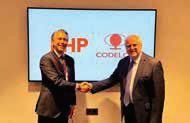
“We have some mining concessions with potential, and to accelerate their development, it is essential to advance a collaborative approach, aiming to capture value through partnerships with third parties. In this case, with BHP, one of the largest mining companies globally."
BHP is uniquely positioned to explore the project and, if successful, has unique infrastructure capabilities to accelerate its development. As part of the agreement, the multi-metallic mining company will be able to invest up to US$40 million to explore and study the mineral potential of the properties.
In 2022, Codelco made available a portfolio of 34 exploration assets for interested companies to evaluate the possibility of partnering and thus developing these projects that do not meet the conditions for independent development by the Corporation.
Within that portfolio is the ‘Anillo’ prospect, a 24,000-hectare property located in the Antofagasta Region. It is in the early exploration stage and has been subject to various exploration campaigns by Codelco and third parties in the past.
Maximo Pacheco, chairman of the board of Codelco, said: "The Corporation must focus and prioritize its exploration and investment efforts within the approximately 2.3 million hectares of mining property it holds in Chile.
Mike Henry, CEO of BHP, said: “BHP is one of the world's leading copper producers, a vital metal for development, decarbonisation, and digitalisation. We are excited to explore this opportunity with Codelco in Chile, where we already have significant, successful mining operations.
“Our ongoing commitment to innovation and 140 years of track record in mining project development strongly position us to work with Codelco and deliver more copper to the world,”
If a sustainable business case is established, the contract includes a promise of partnership with Codelco for the development of the project. If the project is unsuccessful, the studies and information obtained will become Codelco's property.
Cobalt Holdings, a company created primarily to purchase and hold physical cobalt and the only company offering public equity investors pure-play direct exposure to the price of cobalt, announced 12th May its intention to raise approximately $230 million through its Global Offer and the possible admission of its Ordinary Shares to the Equity Shares (Commercial Companies) category of the Official List of the Financial Conduct Authority (FCA) and to trading on the Main Market for listed securities of the London Stock Exchange. The admission is expected to occur in June 2025.
Cobalt Holdings said in its release that it will be the only company offering public equity investors pure-play exposure to cobalt, a ‘Strategic Raw Material’,without the direct risks and liabilities associated with cobalt exploration, development or mining operations
The current oversupply in the cobalt market presents a significant opportunity to acquire cobalt below long-term average prices,with demand expected to increase from multiple enduse industrial applications such as the production of highperformance batteries: a core component of electric vehicles (EVs), portable electronics and energy storage systems (ESS)
Glencore International (Glencore) and certain entities and affiliates managed by Anchorage Structured Commodities Advisor, L.P. (Anchorage), have agreed to participate as cornerstone investors, agreeing to invest, in aggregate, an amount representing approximately 20.5% of the Shares to be offered pursuant to the Global Offer.
The six-year supply contract is secured with Glencore, providing guaranteed supply of premium-grade cobalt worth up to $1 billion and a further supply contract to acquire up to 1,500 tonnes of cobalt from Anchorage in 2031.
Jake Greenberg, CEO of Cobalt Holdings, said: "Our strategy
is simple: to provide equity investors with direct, pure-play exposure to the price of cobalt through a low-risk, low-cost business model that sees us buying physical cobalt and holding it for the long-term.
“We believe now is the right time to build a strategic stockpile of cobalt.The long-term price of cobalt has historically been well above the prevailing spot price. The DRC has begun to impose export restrictions, reducing metal supply, while demand for cobalt more than doubled between 2015 and 2024, and is expected to rise by more than 54% between 2024 and 2031, primarily on the back of accelerating EV battery demand growth.
“This year, Cobalt Holdings will acquire 6,000 tonnes of cobalt, equating to approximately 33% of the cobalt surplus supply in 2025, according to Benchmark Mineral Intelligence. We anticipate that supply and demand will come back into balance over the coming years and will create the necessary conditions to incentivise investment in new mines and refining capacity in the West, all of which are essential to deliver the energy transition.
“We are delighted to have received the support of Glencore and Anchorage as cornerstone investors. Having two cobalt market experts partnering with us is a great validation of the merits of our strategy, timing, and business model."
Cobalt Holdings said in its release that it is the only company offering public equity investors pure-play exposure to cobalt, a ‘Strategic Raw Material’, with demand expected to increase from multiple end-use industrial applications.
Following completion of the Global Offer, the company would be the only listed company in the world offering public equity investors direct exposure to cobalt prices, given that a majority of cobalt is produced as a by-product of the extraction of mostly copper and nickel.
















Asia’s largest kiln furniture manufacturer
Trusted supplier to major names
Reliable global partner
ISO accredited - validated systems
R&D customer support centre
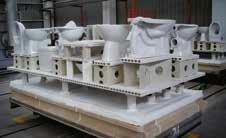







Tel:+86
Email:









Michelle Wang and Matthew Grandage, Asian Ceramics special correspondents for China, take an in-depth look at Foshan, Guangdong known as the ‘China Ceramic Capital’ and a major production centre for ceramic tiles and sanitaryware.
China, with its thousands of years of production history, now produces far more ceramics than any other nation, including a staggering 73% of global tile production by area in 2023. Sixteen Chinese companies were listed in Ceramic Town Weekly 2023 ‘Ceramic Global 30’, including Marco Polo; New Pearl Group; Dongpeng; Monalisa Group; Eagle Ceramics; Nabel; Hongyu Group; New Jincheng Ceramic Group; and Oceano. All of these are based in a single province: Guangdong.
Guangdong is known as the ‘Hometown of Ceramics’ in China, and its industry benefits from the fact that many areas are rich in high-quality clay and quartz sand. The city of Foshan is notable in this respect. The abundance of Guangdong’s raw materials significantly reduces logistics and production costs, creating ideal conditions for tile manufacturing. Additionally, Guangdong has convenient transportation, a long

history in the ceramics industry and a well-established ceramic machinery and equipment manufacturers such as KEDA Industrial Group and Monte-Bianco. Over time, this has led to the formation of a complete and highly efficient industrial chain.
Foshan’s city districts
But this journey has not been without difficulty. The China Daily reported that in 2005, there were more than 350 large-scale ceramic enterprises in Foshan city alone with more than 1,000 production lines. That year, the city government forced more than half of these companies to close, because they were considered to be underperforming and highly polluting. Since then, the entire industry in Guangdong has undergone a process of stripping back and consolidation. By the end of 2024, there were 136 ceramic tile factories with kilns in Guangdong province, accounting for 565 production lines (558 for regular ceramic tiles and the other seven producing roof tiles) – that’s 26% of the country’s total production lines.

With a population of around 10 million, Foshan is the fourth largest city in Guangdong, after Guangzhou, Shengzhen and Donguan. It has 27 ceramic tile producers, with 135 wall and floor tile production lines and three roof tile production lines. The city produced 346 million square metres of wall and floor tiles in Q1-Q2 2024.
Mona Lisa is a leading producer in the province, with 16 production lines (New Pearl has 18). The company predicts that global 2024 revenues will be between $612 million and $670 million, with a projected net profit of $16–$22 million, slightly down on the previous year.
At Eagle Ceramics’ annual marketing conference on 11 February 2025, Wu Qichao, chairman of Tianan New Materials and Eagle Industrial, said: “The current market is experiencing severe polarisation, and only professional and efficient enterprises can survive.”
Though the global ceramics industry is facing headwinds, and China’s producers are especially affected by the downturn in its domestic property sector, those in Guangdong continue to invest in product development and new production technologies.
Building ceramics production lines in Guangdong (November 2024)
Productcategories
FoshanShiwanyulongCeramicCoLtd Handmadetiles(ceramicmosaictiles)
GuangdongNengqiangCeramicCoLtd Full-bodymarbletiles
GuangdongQianghuiCeramicCoLtd Glazedtiles
MonalisaGroupCoLtd Glazedtiles,rustictiles,large/thin/ sinteredstones
GuangdongXinrunchengCeramicCo Ltd(TaipingBase,ChongbeiBase) Polishedtiles,glazedtiles,rustictiles, inkjettiles
FoshanNanhaiTianweiCeramicsCo Ltd Rustictiles,sinteredstones
FoshanXinlianfaCeramicCoLtd Rustictiles,glazedtiles
GuangdongXinghuiCeramicGroup CoLtd Glazedtiles,large,sinteredstones, small,sinteredstones
GuangdongHongtaoCeramicCoLtd Rustictiles
Icot(GuangDong)CeramicsCoLtd Exteriorwalltiles,handmaderustic tiles,angletiles(naturallydried)
FoshanRongguanGlassBuilding MaterialsCoLtd Spanishtiles
GuangdongGoldMedalCeramicsCo Ltd Sinteredstones,glazedtiles
FoshanSunshineCeramicCoLtd Polishedtiles
FoshanJiheCeramicsCoLtd Inkjetpolishedtiles
FoshanXinhuaChinawareIndustrial CoLtd Glazedtiles
FoshanSanshuiNewPearlBuilding CeramicIndustrialCoLtd
Glazedtiles,rustictiles,sintered stones,ceramicpieces
GuangdongTidiyCeramicCoLtd Rustictiles(negativeiontiles)
FoshanSanshuiKitoCeramicCoLtd. Sinteredstones,rustictiles
GuangdongOverlandCeramicCoLtd Rustictiles,largetiles
FoshanOceanoCeramicCoLtd (SanshuiProductionBase) Glazedtiles,rustictiles
FoshanEcologicalSpongeCity TechnologyDevelopmentCoLtd Permeabletiles
FoshanLvshuntouTechnologyCoLtd Permeabletiles
ShunchengEnterpriseBSTCeramics CoLtd Sinteredstones,glazedtiles
FoshanGaomingDistrictXinyuefeng BuildingMaterialsCoLtd(Tongli MarbleTileProductionBase) Glazedtiles,polishedtiles
FoshanMeierkangCeramicCoLtd Full-bodymarbletiles
GuangdongYonghangNewMaterial IndustrialCoLtd Mediumtiles,rustictiles,full-body marbletiles,glazedtiles
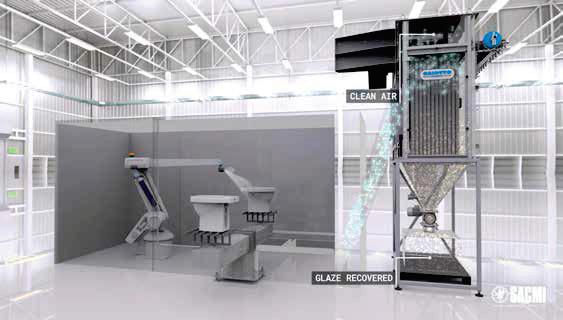
Total recovery of scrap, dust filtration (for a healthier workplace), water retrieval, energyefficiencyandlowemissions.SACMISanitarywareplantsaretheresultofclose teamworkbygroupcompaniesandcomewithcomprehensivesolutionsdevelopedby SACMIForni&Filter’sEnergyandTechnologiesfortheEnvironmentDivision.
Completely circular use of fired waste, optimal recovery of raw materials, water and energy, and less consumption. These are the hallmarks of the rECOvery solutions provided by SACMI Sanitaryware. Developed in synergy with SACMI Forni & Filter’s Energy and Environment Division, they provide sustainabilityfocused systems as part of the We ARE Environment range.
Fine-tuned in the laboratory based on real-life scenarios – an ‘average’ factory making a diversified mix of 750,000 pieces of sanitaryware a year – rECOvery solutions involve in-depth analysis to identify the type/quantity of recoverable material, and the relative technologies needed to provide immediate, measurable economic and environmental benefits for the customer.
Scraprecovery
Firstly, there’s the recovery of fired scrap during production. Usually treated as waste, unlike unfired or dried scrap, which is reprocessed as a raw material, fired scrap can now be considered as a ‘secondary raw material’, suitable for replacing the ‘hard’ body elements (quartz and feldspar) or the chamotte used in Fine Fire Clay.
Indeed, SACMI points out that the machines are designed with scrap recovery in mind. This applies, for example, to grinding
lines, an area in which SACMI has been the world leader for 40 years; these can be equipped with multiple stages to obtain a product of the required particle size. The result is zero waste and near-total recyclability of fired scrap, resulting in a reduction in virgin raw materials consumption of over 10%.
Dustrecovery/treatment
A dust-free environment ensures machines and workers perform better. With the former, dust deposits can cause mechanical parts to malfunction or become unreliable. The latter, of course, needs to be able to count on a healthy workplace Europe has a strict legislative-regulatory framework, and dust abatement in sanitaryware factories necessitates special dust removal systems
Through Forni & Filter’s Energy and Environment Division, SACMI provides a new generation of dry bag filters. Already a tried-and-tested solution in raw material batching and preparation departments, they are now used for treatment and recovery purposes during finishing and glazing.
Again, the result is twofold: a healthier workplace and waste reduction, with the ability, in glazing for example, to recover 100% of overspray.
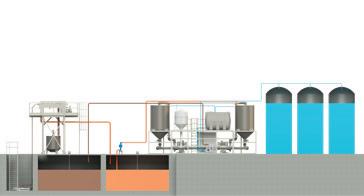
Watersavings/treatmentofsolids
Consuming as little water as possible and reducing reliance on water taken from wells and aquifers lies at the heart of the smart manufacturing approach. This water then needs to be treated to recover the solid particles it contains (i.e. the precipitate of suspended solids in wastewater).
Here, two processes are used: chemical-physical treatment of the Euroblock type, a proven application that has been in use for years and ensures water can be retrieved and reused elsewhere in the factory for specific purposes. The second SACMIpatented process maximises fluid and raw material recovery, thus minimising the water to be sent to for disposal. In this case, the adopted system is tangential flow filtration, a process that requires no chemical additives; this ensures the outgoing water has no particular impurities and can therefore be reused for ‘higher-grade’ purposes such as the preparation of bodies, glazes and plaster moulds or the washing of resin moulds. Even recovered solids can be converted from waste to resource by feeding them back into the mixture preparation system.
Note also the next-generation membrane ultrafiltration system. This lets manufacturers recover 100% of the raw materials dispersed in the mould wash water and in the glazing lines, reducing water consumption and wastewater outflow by up to 80%.
Energyrecovery/reductionofemissions
The energy-saving and emissions reduction solutions used on kilns are co-developed by SACMI and Riedhammer, the network company that specialises in sanitaryware, tableware and special ceramics firing. Such solutions are defined together with the customer, starting with an analysis of the factory energy balance.
The first boost comes from the new EMS (energy management system) for partial or total heat recovery, which is incorporated

into the tunnel kiln range. The second comes from self-recovery burners used in shuttle kilns. It is also possible to make full use of chimney fumes via heatexchangers; these allow fumes to be used as an energy source in other areas of the plant.
For example, manufacturers can, thanks to effective use of energy waste from the kiln, set up drying systems with minimal energy consumption. Heat drawn from the chimneys can also be used in the maturation rooms, in slip heating systems or to warm the water used in the body preparation department.
An optimised Riedhammer kiln equipped with recovery systems can improve a factory’s energy balance by up to 25%, and that is without considering the higher self-produced energy quota provided by SACMI's integrated cogeneration, trigeneration and photovoltaic panel solutions.
All solutions can be evaluated and customised case-by-case. This involves assessment of the specific manufacturing context and customers’ needs, with accurate estimates of achievable savings and ROI time
We ARE Environment is the SACMI Sanitaryware solutions range for sustainability. Contact the SACMI team to learn more about the rECOverysolutions package that's best for you.
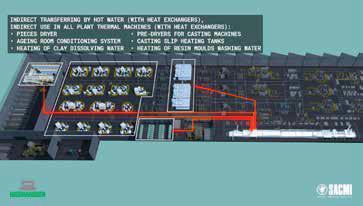


The Gulf Cooperation Council region is home to some of the world's most prestigious and luxurious projects. The region is rarely without an announcement of a large construction project requiring large quantities of sanitaryware products. In recent years, there have been a number of prestigious projects in the area that have sparked the growth of premium sanitaryware products. In this article, Yogender Singh Malik provides an overview of the high-grade sanitaryware market and the major producers in the region.
The Gulf Cooperation Council (GCC) region's sanitaryware industry has been boosted by high crude oil and natural gas prices during the past three years, supportive government policies, and a vibrant construction sector.
One of the most significant aspects of the GCC region is the presence of a number of ambitious construction projects. These projects epitomise innovation and luxury living/ working, shaping the future of urban living in one of the world’s most dynamic real estate markets.
The vibrant construction sector in most countries has spurred the growth of sanitaryware consumption in the region. In fact, the GCC region is one of the largest consumers of sanitaryware products due to high per capita income in almost all the countries.
Different factors drive the growth of premium sanitaryware products in different countries in the region.
For example, in Saudi Arabia, Vision 2030 projects are major consumers of premium sanitaryware products. Vision 2030 represents a significant shift in the kingdom’s economic strategy, aiming to diversify its economy away from oil dependency.
Spearheaded by Crown Prince Mohammed bin Salman, this initiative outlines a series of ambitious goals, including the development of several mega projects like the Red Sea Tourism Project, NEOM (a mega city project) and the Qiddiya city project. These projects are part of a broader effort to stimulate various sectors of the economy, from tourism to technology, to attract foreign investment, reduce oil dependence, and increase the share of non-oil revenues in the government’s budget.
In the past few years, Saudi Arabia has witnessed a number of social reforms, including granting female driving licenses, opening cinemas, and a quantum increase in tourist visas. These changes have led to enormous expansion opportunities in the retail space, though the entertainment industry is still in
its nascent stages. However, this segment is expected to create strong demand for premium sanitaryware products in the GCC region amidst increasing construction activities.
The second-largest sanitaryware market in the region, the UAE, has always been a hotspot for construction activities and a significant consumer of premium sanitaryware products as a result. Despite the robust construction activities of the past two decades, the construction pipeline in the Emirates is full of several ongoing premium construction projects.
Alphabeta Properties’ M77residential project in Dubai, Aldar Properties, the Arthouse project, a residential project that merges modern luxury with artistic inspiration in its 281 premium apartments and sky villas, Armani Beach Residences, an ultra-luxury development in Dubai, which is being built by Arada with assistance from renowned Japanese architect Tadao Ando, and Binghatti Skyrise, located near landmarks like the Burj Khalifa and Dubai Water Canal, this extraordinary development is set to become a symbol of luxury and innovation. With 3,333 residential units, Binghatti Skyrise caters to diverse lifestyles, offering apartments designed for the elegance and comfort of a five-star hotel.
The above-mentioned projects are just a small slice of UAE’s construction sector. There are hundreds of under-construction projects, which require huge volumes of premium sanitaryware products in the coming years.
The GCC region has a favourable demographic profile on the back of a rising and younger population with more than 55% of the total population falling within the age range of 25-54 years. Regional prosperity has resulted in increased employment opportunities, attracting a larger expatriate population to the country. The proportion of expatriates as a percentage of the total population has risen from 39% in CY2020 to 42% in CY2023. Anticipated growth in population and urbanisation will fuel the



demand for more housing units thereby benefitting the ceramic sanitaryware industry. Also, the decision to allow expatriates to own property in some countries will further increase the demand for premium products.
Petrodollars have fuelled a luxury boom in the GCC region during the past few decades.The vast amounts of capital generated from oil exports, often in the form of petrodollars, have been invested in luxury goods, real estate and other highend markets.Ceramic sanitaryware products are no exception. GCC countries are among the top consumers of premium sanitaryware products.
Regional producers have invested heavily in premium product lines to produce high-quality sanitaryware products. Most of the recognised global leaders in sanitaryware production have distribution centres, exclusive showrooms and country offices to cater to the ever-increasing demand for premium sanitaryware products in the region.
The GCC region’s demand for premium and luxury sanitaryware products is expected to continue its impressive growth trajectory, driven by strong macroeconomic fundamentals, dynamic
consumer behaviour and most importantly, a thriving tourism sector. The influx of high-net-worth individuals has also played a key role in premium sanitaryware consumption in the region.
Traditionally, the UAE and Saudi Arabia have been the epicentre of premium ceramic sanitaryware consumption. Post-2008 global crisis, however, the trend of premium sanitaryware products has percolated to other countries in the GCC region.
Regional sanitaryware producers are taking proactive steps to increase premium offerings.
For example, in order to popularise its premium sanitaryware products, UAE-based RAK Ceramics opened a Ceramics Design Hub in Milan, Italy in March 2025. The design hub aims to become the new go-to supplier for designers and contractors seeking a global partner for premium products in sanitaryware, tiles and ceramic tableware.
Milan outlet is the fourth international design hub for RAK Ceramics. The company’s other design hubs are Dubai, London and Frankfurt.
Abdallah Massaad, CEO of RAK Ceramics, stated at the time of opening the design hub: “It is with great enthusiasm that we bring the energy, experience and innovative spirit of RAK Ceramics into the heart of such a lively and dynamic city as Milan.
“The opening of our RAK Ceramics Hub represents a milestone in the story of our group. It is an important statement regarding the course we intend to take, which is that of becoming a go-to-name in the design world.
“We address designers as a lifestyle solution provider, thanks to our complete and integrated product offerings and global distribution reach.”

Hospitality is the largest demand driver for premium sanitaryware products in the GCC region. This segment is expected to play a major role in demand growth for premium sanitaryware products in the GCC region.
Tourism (GCC countries are actively promoting tourism to diversify their economies and boost GDP, particularly in Saudi Arabia with its Vision 2030 plan), large scale events such as Expo Dubai 2020, FIFA World Cup in Qatar, and conferences and exhibitions have spurred the demand for hotel rooms and luxury apartments and conference venues, benefitting the premium sanitaryware segment in the process.
The hospitality sector's revenues in the region are expected to reach $48 billion by 2028. Saudi Arabia is projected to maintain a dominant 70% market share, followed by the UAE at around 21%. Smaller markets such as Qatar, Bahrain, Oman, and Kuwait are anticipated to experience high hospitality sector growth rates.
There is no dearth of the tallest, biggest and most luxurious projects in the GCC region, which use premium sanitaryware products on a large scale.
Currently under construction, Dubai’sCiel tower would be the world’s tallest hotel tower upon completion. This 80-plusstorey hotel with over 1,000 rooms is located in Dubai Marina. Ciel Tower is scheduled to open later this year and will contain three restaurants, Dubai's highest infinity pool, fitness room, spa, club lounge, observation bar, and lounge, as well as 1000 guest rooms and suites.
Described as an architectural masterpiece, this underconstruction project has earned several prestigious awards, including the International Property Awards for Best International Hotel Architecture and Best High-Rise Architecture Arabia. Ciel’s parent company, IHG Hotels & Resorts, operates 117 hotels across nine brands in the Middle East, including InterContinental, Vignette Collection, Crowne Plaza, Holiday Inn,

Holiday Inn Express, Staybridge Suites, Hotel Indigo, voco and Six Senses, with more than 80 new properties in the pipeline
Imports account for 34% of GCC sanitaryware demand. Saudi Arabia is the largest importer, followed by the UAE. Exports of sanitaryware products in the region are dominated by Chinese, Indian and European firms.
European companies have a major share of the premium products imports due to their manufacturing prowess, design superiority and availability of quality raw materials.
Major multinational sanitaryware producers
All the major multinational ceramic sanitaryware producers operate
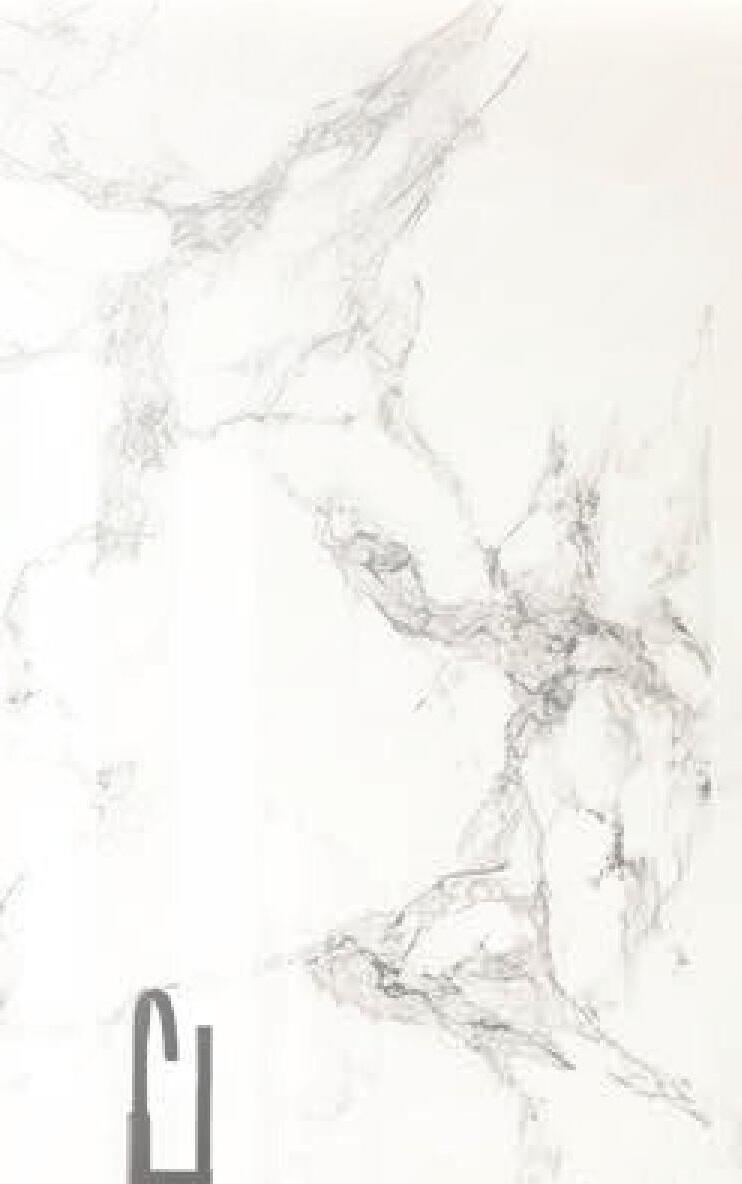





Please scan the QR code to explore our product range.
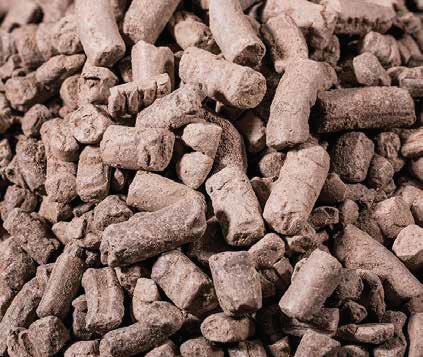
NED C L A Y

Our kaolin and clay products o er excellent plasticity, workability, and strength, making them ideal for a wide range of industries — from ceramics to paper production.
With high-purity minerals and top-tier performance features, our products enhance e ciency in manufacturing processes.
in different countries of the GCC region. Manufacturers such as Duravit, Kohler, and Toto operate through exclusive showrooms or distributors to serve their premium offerings to prestigious projects in the GCC region.
Major sanitaryware producers in the region Sanitaryware production in the GCC region is dominated by UAE-based RAK Ceramics and the Saudi Arabian company Saudi Ceramics. Both these companies are among the largest sanitaryware producers globally.
RAK Ceramics is one of the largest global sanitaryware producers. With an installed capacity of 5.7 million pieces of sanitaryware products across three locations namely the UAE, India and Bangladesh, the company is known for its premium sanitaryware offerings.
RAK Ceramics
registered sales of AED 467.8 million for its sanitaryware division during FY 2024, a year-on-year decline of 8.6%, primarily due to the general economic slowdown in most countries. However, the company’s export of sanitaryware to Saudi Arabia registered positive growth.
During the presentation of results for 2024, RAK CEO Massaad said: “In the United Arab Emirates, where the influx of low cost imports is rising, supported by the free trade agreements, our strategy remains to strengthen our partnerships with reputable developers across the UAE, supplying them with our sanitaryware for their projects, as well as improving our specification team, working with a designer, architect and developer to provide solutions for their projects.
and the extended region.
Due to an unfortunate fire accident in the second half of 2023 at the second plant, Saudi Ceramics has faced output and profitability issues during the last one and a half years.
Porsalina Arabian Company for Ceramic is a mid-scale sanitaryware producer based in Saudi Arabia. Founded in 1998, with a production capacity of 180,000 pieces of sanitaryware, the company has conducted three major expansion and revamping exercises. The company’s current installed capacity is 800,000 pieces of sanitaryware per annum. dal mese di dicembre, grazie ai nuovi impianti,
The company claims that its products are manufactured in compliance with industry regulations and guided by high-quality machinery investments.

“Whilst the domestic market was indeed our primary focus, and remains our principal target, we today extend our reach throughout the GCC and Middle East, incorporating the UAE, Qatar, Jordan, Egypt, Sudan and Lebanon. Recently, we have seen particular demand for sanitaryware products with water saving properties. We are constantly adapting our strategies so that we can combine our innovative production methods and product provisions over the next two years,” according to Porsalina’s management.
“All of our raw materials are of the highest quality and are imported from European suppliers from locations such as the UK, France, Italy and Turkey,” according to Porsalina’s management.
The company claims that for the upkeep of all machinery, it has a dedicated maintenance department in place that ensures that all the equipment runs smoothly and is kept in the best possible condition.
“I believe with our reliability, good quality and innovation with our R&D team focusing on a solution, and even despite all the competition we are facing, we saw an increase in sales in the UAE market, and especially in the project market, which is going on.”
He added: “In Saudi Arabia, we are focusing on introducing premium products to support our retail and project channels, which allows us to maintain margins and avoid price wars. I believe also that in Saudi Arabia, with a number of premium projects in pipeline, this will be a good potential for a company with a branded product as well as innovative products, to get a reasonable market share.”
Engaged in sanitaryware production since 1977, Saudi Ceramics is one of the oldest and largest ceramic sanitaryware producers in the GCC region. With the establishment of its second sanitaryware production plant in 2016, the company has emerged as one of the premium suppliers of sanitaryware products to the domestic market
Among the newer players on the market, Forsan Ceramics at Al Forsan Global Industrial Complex (Forsan Ceramics) of Saudi Arabia has emerged as one of the region's best equipped sanitaryware producers, producing sanitaryware of European quality.
Based in King Abdullah Economic City, Rabigh, the company started production of sanitaryware in early 2015, followed by wall tiles and floor tiles. The company has acquired a 1.5-million- squaremetre plot of land on a long-term lease with an option to purchase. The complex allows for a tenfold increase in production to meet future demand.
Currently, Forsan Ceramics has installed capacity to annually produce 1.5 million pieces of sanitaryware, 12 million squaremetre of wall tiles and eight million square-metre of floor tiles. An investment of SR500 million ($133 million) has gone into the facility,
which is well equipped with the most sophisticated machinery, all imported from Italy.
Al Forsan Sanitaryware has installed state-of-the-art solutions for pressure casting sanitaryware articles using porous resin moulds. The Al Forsan plant can manufacture open-rim toilets on its fully automated multi-mould high-pressure casting bench. The toilets are then transferred to the robotised glazing line and subsequently sent on for firing and refiring in tunnels and shuttle kilns.
The sanitaryware factory produces contemporary designs by Italian designers that suit all segments of the market. All toilets are equipped with a flushing mechanism of 3 litres to comply with the Saudi government’s requirements. Al Forsan’s sanitaryware model ‘System One’ has received the Design Plus award.
Sole producer of ceramic sanitaryware in Oman, Oman Ceramics Co SAOG is unperturbed by the construction slowdown in the region. The company, with an installed capacity of 600,000 pieces of sanitaryware per annum, produces products of high quality under the brand name ‘Wave’.
Additionally, to meeting the domestic demand of Oman, the company exports a significant amount of its production to countries within the GCC and to Europe.
Consumption of premium sanitaryware products in most of the countries in the GCC region is expected to increase their share in the medium and longer term.
Diversification of their economies is one of the key objectives of governments in the region. The hospitality sector, which is the largest demand driver for premium and luxury sanitaryware products, will play a key role in this diversification.
Recent investment by the key producers in state-of-the-art technology to produce premium products, association with leading designers in the sanitaryware domain and endeavours by regional producers to serve the discerning European markets will play major roles in the increased production and consumption of premium sanitaryware products in the years to come. GCC sanitaryware demand over the last


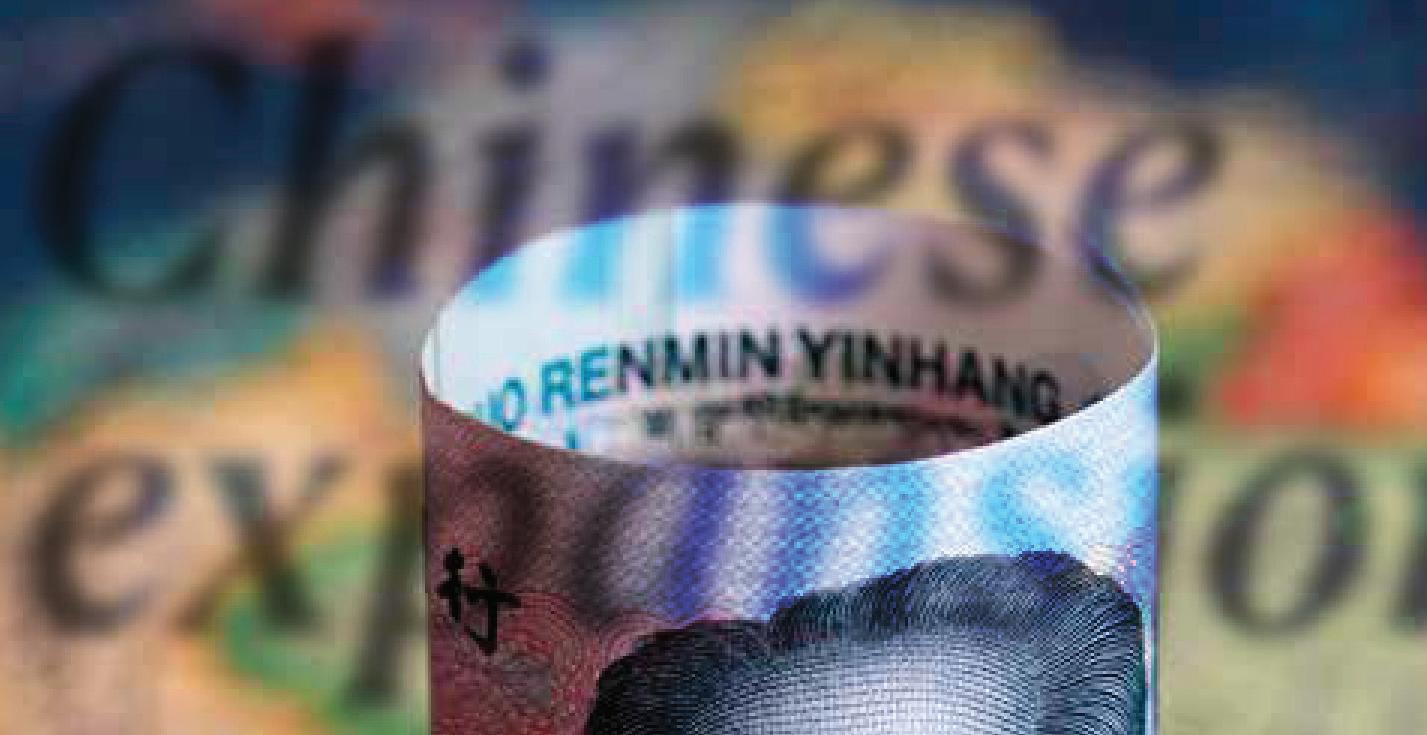

Chinese ceramic manufacturers are becoming multinationals and beginning to venture as far overseas as Latin America in a quest to expand into foreign markets, writes Rohan Gunasekera.
While the United States has been busy bombing opponents in different parts of the world in recent decades, China has been focusing on long-distance targeting of a different kind. Having built up the world’s largest ceramic industry and flooded nearby Asian markets with cheap tiles, tableware and sanitaryware, Chinese manufacturers are venturing overseas, building factories in foreign markets with growth potential.
Many of these plants are coming up in Africa, but Chinese ceramic manufacturers are also starting to venture as far away as Latin America, building factories in what are seen as promising
markets in that region.
Latin America is considered the second-fastest-growing ceramics market, after Africa. Chinese ceramic exporters are facing growing tariffs and duty barriers in key export markets while also facing intense competition in their domestic market because of oversupply and construction sector slowdown.
A new wave of investment by private companies in manufacturing, agriculture and services is following big mineral and infrastructure projects built by Chinese state-owned enterprises with Chinese loans in South and Central America. These projects and plants have strengthened China’s economic and political influence in what the US sees as its backyard.
The new administration of President Donald Trump is pushing back forcefully against these Chinese commercial successes. But the ruthless way in which the US is attempting to regain influence in the region – through threats such as seizing the Panama Canal and mass deportations of Latin American immigrants – could backfire and result in American influence being further eroded.
Yao Yang, professor at Peking University and director of the China Economic Research Centre, says Chinese companies will invest heavily overseas and that Chinese enterprises going abroad has become a clear trend.
“Just as the US and Japan built economic empires through their overseas investments, China must also follow a similar path. This means that China still has a long way to go on its global economic journey,” Yang says.
“As the US now limits our direct exports to America, many Chinese companies are acquiring factories abroad. This is prompting Chinese companies to accelerate their overseas expansion, and in turn, this is a golden opportunity for China to reshape global manufacturing.”
Yang takes China's evolving relationship with ASEAN as an example of how Chinese companies going global create a ‘winwin’ situation.
“In the past, China imported raw materials from some countries and intermediate goods from developed Asian economies, assembling them for export to Europe and America. However, with industrial upgrading, many of China's labour-intensive industries have shifted to Southeast Asia, transforming China's export structure to include more advanced intermediate goods. This complementary relationship with Southeast Asia is a clear win-win scenario.”
Given the tariff shocks and the uncertainty over their implementation, and the new openly aggressive foreign policy of the US, it is difficult to assess how China’s trade and investment will be affected. There is general agreement that the tariff shocks will trigger a slowdown in global trade and even recession in some countries, and that China’s exports to the US will fall drastically. Some assessments say that as a result, future Chinese trade and investment will be adversely affected. Others believe that new trading arrangements and foreign policy alignments between countries that lose trust in the US because of its unreliability and are put off by the ‘America First’ position will eventually benefit China.
operational capabilities in key international markets,” Keda Group says. “The company is actively expanding the business structure of various types of building materials and expanding the business area to other regions such as South America. The urbanisation needs of developing countries and the upgrading of old production lines have brought certain development opportunities.
“On the one hand, the company will actively export core equipment to the European and American markets, as well as continue to build model projects and develop service businesses; On the other hand, it will also target areas with better development potential such as a better population base and lower per capita consumption of ceramic tiles to further grow overseas markets for ceramic machinery.”
Latin America is a new market for Keda Group, which claims to be the only company in Asia with the capacity to produce and supply complete plant engineering and ceramic machinery production. Keda Group also operates in Mexico, Colombia, Brazil, Argentina, and Bolivia. The group reports that it maintained robust growth in overseas markets such as Southeast Asia, the Middle East and South Asia in 2024. In an assessment of overseas markets, Keda Group says: “Traditional ceramics markets face pressure while emerging markets present opportunities. Amid a sluggish global economic recovery and intensified geopolitical competition, the global ceramics market is showing a divergent trend, with traditional markets experiencing weak growth and emerging markets revealing opportunities.”

According to forecasts by MECS-Acimac, the research centre on manufacturing machinery and supply chain of the Association of Italian Manufacturers of Machinery and Equipment for the Ceramics Industry, the global tile industry is expected to gradually recover over five years from 2024 to 2028, with global tile production and consumption growth rates projected at 2.2% and 2.5% per year, respectively. On the production side, Africa, the Middle East, nonEU European countries and the Americas are expected to be the core growth engines, with growth rates in these regions projected to be above average. “On the consumption side, Africa is expected to have the highest annual growth rate, followed by South America and non-EU European countries, while demand growth in other regions is expected to slow down.”
Investments and sales efforts in Latin American countries by Chinese ceramic machinery manufacturing giant Keda Industrial Group Co Ltd indicate the potential in the region seen by China’s ceramic industry. According to Foshan-based Keda Group, the ‘new frontier’ for international expansion – Latin America – is part of its accelerated globalisation and market diversification drive. While Keda Group’s float glass plant in Peru, South America, remains on schedule to begin operation in 2026, in contrast, preparations for the ceramic project in Honduras have encountered delays due to macroeconomic policies and prevailing market conditions, the company said in its first quarterly report of 2025 in April this year.
“The company has refined its global bases by establishing a subsidiary in Brazil and preparing to launch another in Vietnam, aiming to develop local expertise and enhance on-the-ground
Currently, companies from traditional ceramics powers like Italy and Spain are still expected to dominate the high-end market with their advanced technology, exquisite design and premium brand image, Keda Group says. Companies from emerging ceramicsproducing countries have strong competitiveness in the low-end and mid-end markets and are gradually moving towards higherend markets, thanks to their cost advantages and constantly improving product quality.
According to Keda Group, whose international orders for ceramic machinery exceeded 60% in 2023, Mexico is seen as the base from which to expand to the rest of the region. The company ventured into Mexico in February 2023, says Yuanfeng Zheng, Keda Group’s head of ceramic machinery for the American region responsible for the Mexican market. Within a year, leveraging Mexico as a lever, Keda Group's business extended to several countries in Latin America.
Keda Group and other ceramic companies in Foshan saw Latin America as a new land of new opportunities, according to Yuanfeng Zheng. At that time, Mexico was seen as serving as an important transit country for land transportation between South and North America, and a hub from which to export products. Another attraction was the number of free trade agreements Mexico had signed globally, which was seen as enabling trade facilitation and avoiding high tariffs. Now, however, the new Trump tariff war has disrupted the original corporate planning, creating uncertainty about the use of Mexico as a hub.
Entering the Mexican market, where demand for ceramic tiles remained strong, was considered equivalent to establishing a foothold in the Americas, according to Yuanfeng Zheng, whose studies in Spain in his early years helped establish rapport with Mexican customers and employees, as the official language of Mexico and many other Latin American countries is Spanish.
Keda Group is trying to wean Latin American ceramic manufacturers away from their long-standing reliance on European machinery, touting China’s lower pricing and supply chain efficiency, and has begun to win orders. "Similar to Mexico, other major ceramicproducing countries in Latin America have historically adopted European solutions and machinery,” Zheng said at the time. Clearly, Keda's incremental growth in the Americas cannot remain confined to Mexico alone; it needs to expand further southward."
In Honduras, with which China only recently established diplomatic relations, Keda Group is planning to invest about $75 million to build two ceramic production lines, designed to produce products such as wall tiles, coloured glazed tiles, antique tiles, and colour-penetrated tiles, with an annual capacity of about 20 million square metres.
Keda Group is also aiming at the Brazilian ceramic market, which has also long been dominated by European machinery suppliers who have the advantage of sharing a common cultural background with Latin America owing to the legacies of colonial rule. Keda finds that the new generation of Brazilian ceramic entrepreneurs is more open to co-operation with Chinese companies, and more accepting of the high-output ceramic production models from China, according to Yuanfeng Zheng. Apart from providing entire ceramic production lines, Keda Group is exploring the possibility of local assembly in the region as well as after-sales service and supplying consumables like glazes to the Latin American market.
Chinese ceramic manufacturers’ forays into the Latin American region have not been without problems. A big tile manufacturer, Time Ceramics of Fujian province, announced in 2023 that it would build a plant in the small town of Emiliano Zapata in the central Mexican state of Hidalgo, investing $150 million and expected to create more than 1,800 jobs, making it one of the largest ceramic factories in Latin America. The company, which specialises in porcelain and ceramic wall tiles, has become multinational, operating production plants in Nigeria, the Philippines, Pakistan and Mexico.
However, last year the company faced accusations by local farmers of over-exploiting groundwater and depleting the aquifer during drought, prompting local authorities to launch an investigation into the water issue and also irregular hiring of Chinese workers, and even threatening to shut it down.
Another Chinese company that faced similar accusations when building a ceramic plant in Peru is Fujian Boyu International Trade Co. Ltd. In May 2022, one of the company's projects to establish a new ceramic company called Tengda (Peru) Ceramica Sociedad Anonima Cerrada (Tengda (Peru) Private Company) in Peru was approved. It plans to build two ceramic production lines in the Salas Guadalupe District of Ica Province, covering an area of about 67,300 square

metres, with an annual production of 10 million square metres of high-end wall and floor tiles and glazed tiles. Last year, the company faced accusations that it was building the factory without proper authorisation, violating environmental regulations, and without the necessary permits for water use in an area designated for agricultural activity in the province of Salas, Guadalupe.
Renzo Gomero Rodríguez, manager of the Ceramics Committee of the National Society of Industries, was quoted by local media as calling on the authorities to enforce environmental and urban planning laws. The Committee notes that, based on information from the Ministry of Production (Produce), the Tengda Ceramica plant was built without the approval of the Environmental Impact Assessment or the Citizen Participation Plan, essential requirements established in the Environmental Management Regulations for the Manufacturing Industry and Domestic Trade. The National Water Authority fined Tengda Ceramica for using water from a well for purposes other than those authorised. The company had a water use license for agricultural purposes but used it to build the plant and for domestic use.
Latin America’s attraction to Chinese ceramic manufacturers is the same that drew US manufacturers to the region. Mohawk Industries, which styles itself as the world’s biggest flooring company, making ceramic tiles, carpet, laminate and sheet vinyl, has been buying up production plants in the region, enabling it to almost double its market share in Brazil and Mexico.
In 2018, Mohawk Industries acquired Eliane, a leading ceramic tile manufacturer in Brazil, the world’s third-largest ceramic market. In 2023, the company further expanded its presence in Brazil through the acquisition of Elizabeth Revestimentos, another top Brazilian ceramic tile business with four manufacturing facilities strategically located throughout Brazil. In 2023, the company also acquired Vitromex, with four manufacturing facilities strategically located throughout Mexico, further solidifying the company’s position in the Mexican ceramic tile market. According to financial advisor Oaklins Olimpia Partners in Brazil, Mohawk’s transaction comes at a time when the Brazilian ceramic tile market is moving towards highervalue-added products, such as glazed and unglazed porcelain and large formats, positioning Eliane and Mohawk to be able to take advantage of this growth opportunity.
In terms of exports, MECS research indicates that South America is the second most important market for Italian ceramics technology exports, with Brazil accounting for about 70% of exports.
Acimac chairman Paolo Lamberti says the industry is going through a very challenging time. “While part of this crisis is cyclical, other factors are at play, such as increasingly aggressive international competition, particularly from China, a natural slowdown following the large-scale investments made by our customers in recent years, and the increase in our production costs,” he says.
The Chinese tile industry’s recent recovery can be attributed to a large extent to growth in sales in Latin America (74 million square metres in 2023, an increase of 53% or 26 million square metres compared to 2022) and in Africa (48 million square metres, six million square metres more than in 2022), MECS research says. Sharp increases were seen in several South American countries, such as Peru (+37%) and Chile (+47%), which now rank among China’s top ten export markets, along with the Dominican Republic (+98%) and Colombia (+51%).
The study compares China and India’s exports which shows that while China continues to dominate in Asia, South America and Oceania, India has taken the top position in Africa and markets outside the EU, as well as in the EU and North America, where trade tariffs imposed on China have hit its exports.
According to preliminary figures compiled by MECS – Acimac Research Centre, Italian ceramic technology sector sales fell by 24% in 2024. Chairman Paolo Lamberti says: “This result was entirely expected and caused by multiple factors. We are looking ahead to a recovery in 2026.” The 24% reduction in output follows three years of steady growth and a return to the levels of 2019, the final year before global trade was disrupted by a series of events, including the Covid-19 pandemic, the raw materials crisis, inflation and wars.
is undergoing economic transformations, with countries like Brazil, Mexico, and Chile making significant advancements in technology, manufacturing, and services.
Recent studies show a structural shift in transaction sizes of Chinese investments in Latin America over time. In 2010, the average Chinese investment in South America amounted to about $1.2 billion. Since then, the annual average project size has fluctuated between $200 and $800 million. This trend toward smaller average transaction sizes is reflective of an apparent shift in focus from high-profile, mega-projects toward smaller, more focused investments, according to the Regional Repository of Chinese Investments in Latin America.
“As China’s economy upgrades and diversifies, Chinese investments in South America are increasingly apparent in a wide range of economic sectors,” the study says.
Chinese investors have established a significant presence in all of South America. Brazil stands out as the primary destination for Chinese investors and construction companies in Latin America over time, with 163 projects worth $66.3 billion, substantially more than any other South American nation.

Brazil alone represents nearly 45% of all Chinese investment and construction projects in the countries analysed. As the region’s largest economy, Brazilian markets have been of interest to Chinese investors for decades. Argentina and Chile constitute the second tier of investment destinations by project count. However, when measured by overall project value, Peru emerges as the secondlargest recipient of Chinese capital in the region. While fewer FDI deals have been struck in Peru than in Argentina and Chile, Chinese deals in Peru are of higher average value. They are focused on capital-intensive sectors such as mining and energy.
The slowdown impacted both exports and domestic sales. The domestic market contracted 26% compared to 2023, while exports fell 23.4% from 2023. The decline affected all geographical regions, with significant losses in the Americas and Europe.
Latin America and the Caribbean (LAC) region, comprising 33 nations and over 650 million people, is one of the most resourcerich and diverse economic blocs in the world, according to the Centre for Advanced Trade Research. Known for its vast natural reserves, LAC plays a crucial role in global supply chains. From the copper mines of Chile and the lithium reserves of Argentina to the vast agricultural lands of Brazil and the oil fields of Venezuela, the region is a key supplier of raw materials to global markets. Recent geopolitical upheaval due to Trump's policies may result in a realignment of LAC trade with countries looking at reducing their dependence on US and diversifying their trade with other countries. Beyond its natural wealth, the LAC region
Latin American real estate market fundamentals are expected to remain solid across various countries, according to a report by Fitch Ratings in December 2024. While industrial real estate in Mexico is anticipated to benefit from nearshoring in the medium term, growth may moderate as stakeholders react to evolving policies in Mexico and the US.
Retail space and shopping malls in major markets such as Mexico and Brazil are expected to maintain strong operating metrics, with rent increases at or above inflation, high collections and stable occupancy rates. In Chile, growth is likely to be modest, reflecting a gradual recovery in private consumption as the labour market improves. In Argentina, growth is anticipated to remain subdued, though an improvement in consumption may benefit mall operators.
For the office segment across the region, issuers are prioritising higher occupancy over rent increases. Gradual improvement in occupancy rates and rents is expected to continue beyond 2025, although the pace may be moderated by factors such as oversupply and the prevalence of hybrid work models
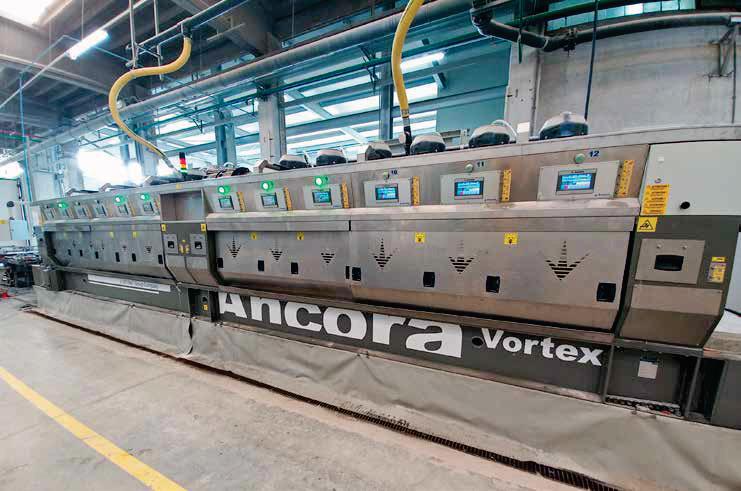
Within a constantly evolving ceramic industry, where every choice is shaped by factors such as efficiency, productivity, and cost control, GruppoB&T, manufacturer of complete systems for the ceramic and quartz agglomerates industry, offers practical solutions to optimise every stage of the production process. In keeping with this vision, the Group has launched VORTEX, a new turbopolishing technology developed by ANCORA, a key member of the Group renowned for the design and production of complete finishing lines for ceramic products.
VORTEX is the answer to the clear, widely acknowledged need to achieve the same, if not higher, levels of productivity with less financial commitment. This compact system is designed to maximise performance and simplify operations by addressing three priorities: increasing productivity on the polishing lines, reducing production costs and streamlining the manufacturing process.
VORTEX’s central component and distinctive feature is the PLANET head. Each unit is equipped with five drums and six fickert tools, which offer advanced configuration to ensure materials are processed continuously and effectively. Their compact design
can decrease overall line dimensions by up to 50%, while the integratedautomatedsystemssimplifyoperationalmanagementand allow significantreductionsinstaffassignedtotheline. Moreover, tool changeovers are required only twice a day, resulting in greater autonomy and less downtime.
Manufacturing costs can be lowered as VORTEX directly decreases processing costs per square meter while also enhancing energy efficiency, offering 50% lower consumption rates for both power and water. A practical, flexible solution that is ideal for any kind of finishing, from complete polishing to semi-polishing, including satin, matte and brushed effects.
One of the first companies to adopt VORTEX is Ceramiche Piemme. With over 60 years’s experience to its name, this long-established ceramic brand based in Fiorano Modenese, Modena, specialises in the production of flooring and surfacing materials. A proven partner of Gruppo B&T, Piemme is committed to innovation and quality. It chose ANCORA for two main reasons, i.e. its ability to deliver out-of-the-box technologies and its production-efficiency oriented approach.
“When the engineering and production teams started discussing our end-of-line needs," says Sergio Bondavalli, managing director of Ceramiche Piemme, "we realised that ANCORA’s focus on technological innovation made it the right partner for us. It intrigued us because at Piemme, we are also very receptive to innovation. The first reason for our choice was exactly this innovative feature, the fact that this machine can increase productivity through efficiency.”
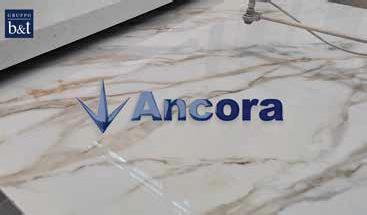
“Piemme based its choice on the flexibility,speed,andeaseofuse of ANCORA’s offerings. The variety of products we handle requires versatile, fast-adapting technology that is easy to manage in order to lighten the workload for line operators without compromising the quality of the end product.”
“VORTEX was created with exactly these needs in mind," explains AlbertoLumetti,ANCORAsalesmanagerforItaly."It is a compact, flexible machine that can be installed on existing lines; it also requires very little space and significantly less energy. All these benefits are achieved through the Planet head, the core of the system”
VORTEX IS THE ANSWER TO THE CLEAR, WIDELY ACKNOWLEDGED NEED TO ACHIEVE THE SAME, IF NOT HIGHER, LEVELS OF PRODUCTIVITY WITH LESS FINANCIAL

Anyone wanting to test the performance of their own materials can contact bt-LAB technology centre. The team there can provide a VORTEX pilot line for customised tests and help customers assess whether the solution meets their technical needs.
Gruppo B&T
Gruppo B&T manufactures turnkey systems for the ceramics and quartz agglomerates industry worldwide. With a widespread presence in all markets, it delivers exceptional technological solutions and innovative services with a particular focus on energy efficiency and environmental awareness.
With 24 companies (17 located abroad, spread over four continents), the Group has earned a position for itself on the international market by offering customers a guarantee of excellence.
•B&T further specialises in its products and services through divisions including:
•B&T Tile (complete ceramic systems for conventional sizes and extra-large slabs)
•B&T Quartz (complete systems for quartz agglomerate tiles)
•B&TService(customerserviceandintercompanyandinterdivisional technical support)
The Group is involved in all stages of manufacturing through its branches and subsidiaries, each specialising in a specific stage in the production process:
•SITI (complete plants and systems for ceramic and agglomerate products)
•ANCORA (complete finishing lines)
•PROJECTA (digital decorating solutions)
•DIGITAL DESIGN (design and graphic design projects)
•DIATEX and MEC ABRASIVES (squaring and polishing tools)
Every year, Gruppo B&T invests five per cent of its turnover in research and development, most of which is carried out in the modern bt-LAB in Formigine, which houses the technology laboratories and numerous pilot lines for the different technologies. www.gruppobt.com


Asian ceramic exporters to the European Union will face higher costs when complying with the EU’s Carbon Border Adjustment Mechanism in the years ahead but the tax could also help push decarbonisation e orts, writes Rohan Gunasekera.
Asia’s ceramic exporters have yet to bear the costs of complying with the European Union’s new trade barrier, the Carbon Border Adjustment Mechanism (CBAM) and similar carbon taxes being implemented or planned in developed markets. But several of Asia’s tile, tableware and sanitaryware manufacturers are already taking measures to reduce energy consumption and emissions, under pressure from tightening emission rules as well as consumer expectations of low-carbon products.
Some see the shift to decarbonising the industry as an opportunity, albeit at high cost in the short term. Many countries in the region have set emissions reduction targets but only a few have policies and plans on how to achieve them. Most governments in Asia have yet to announce guidance and rules for so-called foundation industries – energy-intensive industries that produce basic materials, such as cement, steel, bulk chemicals, paper, glass and ceramics.
The EU’s CBAM has come into force, initially enforcing an import tariff on carbon-intensive commodities, such as cement, iron and steel, aluminium, fertilisers, hydrogen, and electricity, with other products to follow later. In order to be prepared, Asian ceramic manufacturers are advised to focus on energy-use emission reduction such as electrification and carbon capture, utilisation and storage (CCUS) and processrelated emission reduction such as increased use of recycled raw materials.
While CBAM guarantees demand for low-carbon products and
supports decarbonising industry in Europe, countries exporting to the EU see the border tax as a protectionist move designed to protect European industry, serving as a tariff barrier to a key market for Asian ceramic manufacturers. However, it is in the interest of Asian ceramic exporters to decarbonise their industrial and supply chain processes to comply with the coming carbon tax restrictions.
Such taxes could extend to other markets as well, and not only in the developed West but even in the more developed Asian markets themselves. The United Kingdom is also introducing a CBAM system, while Singapore is mandating climate disclosures in accounting rules, that is part of a global trend toward standardised climate reporting frameworks.
Consumers in developed markets for products like ceramic tableware are now more environmentally conscious and likely to demand or prefer products with fewer carbon emissions. There is a market-driven imperative for companies to comply, with buyers in developed markets demanding that their Asian suppliers comply with emissions reduction goals even before CBAM comes into play.

The EU CBAM is currently in a transitional phase that began on 1st October 2023, with full implementation scheduled for 1st January 2026.
According to the Institute of Sustainability Studies (ISS), in contrast, the UK plans to implement its CBAM by 2027, without a transitional period.
“The EU and the UK have both developed CBAMs to address carbon leakage and promote global emissions reductions,” the ISS says.

“While both mechanisms share a common goal, there are notable differences in their design and implementation.”
The EU CBAM initially covers imports of aluminium, cement, fertilisers, hydrogen, iron and steel and electricity. The UK’s proposed CBAM regulation includes aluminium, cement, fertilisers, hydrogen and iron and steel, but excludes electricity. The UK rules initially covered ceramics and glass, but these were later excluded, according to the Bathroom Manufacturers Association (BMA), an outfit open to any company that manufactures bathroom products for the UK market.
Both CBAMs cover direct (Scope 1) emissions, the ISS says. The EU CBAM also includes indirect (Scope 2) emissions from electricity consumed during production. The UK CBAM proposes covering indirect emissions from electricity, heat, steam and cooling. The EU CBAM requires importers to purchase and surrender CBAM certificates, with prices linked to the EU Emission Trading System (ETS). The UK CBAM proposes a levy system, with rates set quarterly by the government, based on previous UK ETS prices and varying by sector.
Both mechanisms account for carbon pricing in the country of origin. The UK CBAM allows importers to pay the difference between the UK CBAM carbon price and the carbon price in the country of origin, recognising only explicit carbon prices, such as emissions trading systems or carbon taxes.
“As the UK prepares to introduce its own CBAM by 2027, businesses must take proactive steps to assess their supply chains, quantify embedded emissions, and integrate sustainability into procurement strategies,” the ISS says.
“With carbon pricing set to reshape global trade, organisations that adapt early will gain a competitive advantage, reduce regulatory risks, and strengthen their position in an increasingly carbonconscious economy.
“Beyond CBAM, corporate sustainability reporting is becoming a critical compliance requirement, with regulations like the Corporate Sustainability Reporting Directive mandating greater transparency on carbon emissions, climate risks, and ESG performance.”
Major Asian ceramics manufacturers have been taking measures to reduce energy use and emissions in recent years, as it became clear that regulations were getting tougher and consumer expectations higher.
Japan’s Noritake says it has established a sustainability management system and promotes various initiatives, including the achievement of carbon neutrality.
“We recognise that business conditions surrounding the Noritake Group will continue to be uncertain and difficult to predict in the future due to increasing geopolitical risks, the development of a carbon-neutral society, accelerating digitalisation, and diversifying lifestyles,” the company says.
Noritake promotes efforts towards carbon neutrality, including energy-saving initiatives for facilities and the use of renewable energy. Noritake has joined the GX League, a platform for companies working towards the achievement of carbon neutrality by 2050 to collaborate with other companies, the government, universities, and academic institutions engaged in similar initiatives to discuss transformation of the entire socioeconomic system and engage in creating new markets.
“In order to transition to a low-carbon society and achieve net zero CO2 emissions, the group has set long-term targets of reducing CO2 emissions (Scope1, 2) by 50% by FY2030, compared to the FY2018 level, and achieving net zero emissions by FY2050,” Noritake says.
“In order to reduce CO2 emissions toward achieving this target, we are actively promoting the utilisation of renewable energy by adopting energy-saving facilities while working to increase productivity. We will also review the method to calculate CO2 emissions from companies in the supply chain other than our group companies (Scope 3) and set targets and examine the approach to achieving them.”
In FY2023, the second year of Noritake’s 12th Three-Year Environmental Action Plan, the company achieved its target of reducing CO2 emissions by 48% compared to FY2018 through initiatives like introducing renewable energy and rationalising its production process. Noritake identifies as risk the increase in CO2 emissions costs due to the introduction of carbon taxes and carbon emissions restrictions.
“As taxes are incurred on fuel combustion and electricity use following the introduction of carbon taxes, CO2 emissions costs are added to operating costs,” the company says. “With customers demanding further reductions in CO2 emissions, customers may end up leaving if we are unable to reduce CO2 emissions at our own production plants, or we are late in developing environmentfriendly products.”
Noritake sees the transition as an opportunity to develop a competitive advantage by reducing CO2 emissions and to tap into decarbonisation demand by developing and selling environmentally friendly products. Noritake aims to sell tableware made with less virgin material, such as those using recycled materials.
Efforts by RAK Ceramics, the UAE-based multinational making all three main ceramic products – tiles, tableware and sanitaryware –with plants in different countries in the region are illustrative of what is being done and what’s possible for the industry to meet looming threats like the CBAM tariffs.

“For 2025, we plan on adding an aeration system to the sewage treatment plant that will enhance treatment efficiency, reduce power consumption, and contribute to a decrease in our overall energy usage and carbon emissions,” says Abdallah Massaad, CEO of RAK Ceramics Group. The company is prioritising key decarbonisation initiatives that will yield sustainable products and circularity, and sustainable procurement and is developing an ESG strategy for 20242030, in alignment with global and industry standards.
In sanitaryware, RAK is driving energy efficiency in production, exemplified by reduced fuel consumption through investment in one of the largest tunnel kilns in the industry, the longest European kiln
IT
IN THE

in the Middle East, which can process up to 1.4 million units a year. Its adaptable cycle speeds align with production demand. The kiln’s specific fuel consumption is 715 Kcal/kg of ware, achieving 45% lower fuel consumption than tunnel kilns and 70% lower than shuttle kilns, marking a major breakthrough in sustainable manufacturing. In terms of electricity consumption, the kiln uses just 0.025 kWh/kg of ware. The kiln is also future-ready, with the ability to be converted to 100% hydrogen fuel.
In tableware, with products supplied to over 40,000 hotels in more than 165 countries RAK achieved significant energy and water savings in 2024, including a 10.06% reduction in overall energy consumption and a 23.47% reduction in freshwater consumption.
In tiles, RAK improved energy efficiency by reducing gas use through kiln heat recovery projects and reducing spray dryer production in 2024.
“For waste and circularity, we reduced fired loss and improved sustainability by increasing recycled material use, launching ‘Mission 98’ to cut fired rejection rates, and reintegrating waste like polishing sludge and effluent treatment plant waste back into production,” RAK says.
“We operate two cogeneration plants with gas turbines, maximising efficiency by utilising exhaust air for ceramic spray dryers, thereby significantly reducing natural gas consumption and emissions. Secondly, we recover thermal energy from roller kilns using a heat recovery system, minimising energy loss through flue gas and cooling gas exhaust stacks.
“Additionally, we piloted replacing chillers with cooling towers to decrease power consumption, and we have upgraded our power plant by replacing heavy fuel oil engines with natural gas engines, reducing carbon emissions and increasing on-site electricity generation.”
In 2024, total energy consumption for tile production increased by 25% compared to 2023, driven by shifts in product mix and rising demand for Gres Porcelain (GP) tiles. Despite the high total energy demand, the energy intensity for GP tile production decreased by 1.86% due to ongoing efficiency improvements.
































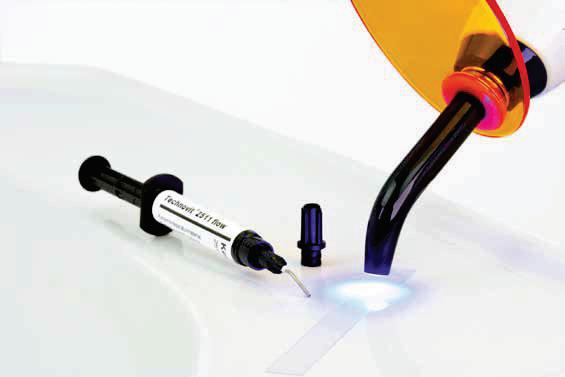






























“We also reduced the thickness standardisation of key sizes of our Gres Porcelain tiles from 9mm to 8.5mm, achieving a 5.5% reduction in material usage,” the company says. “This change enhances efficiency by lowering raw material consumption, reducing energy use in production, and minimising environmental impact.”
RAK Ceramics’ sustainability initiatives encompass energy management and gas reduction strategies. The firm upgraded its gas turbines and implemented heat recovery systems that capture heat from the kiln and use kiln hot air, further improving energy efficiency.
In 2024, it executed nine gas reduction projects that optimised heat recovery from kilns and dryers while reducing spray dryer production, one of the most energy-intensive processes, resulting in big gas savings.
In production processes, RAK Ceramic introduced various energy efficiency measures, including applying refractory coatings to thermal vessels to improve heat absorption and reduce ambient temperatures, installing auto air regulators and oxygen analysers to optimise combustion and minimise energy loss, using Vulcan burners and fuel-saving catalysts to enhance fuel efficiency, and implementing ‘X-Plate’ technology to improve combustion efficiency within furnaces.
Furthermore, research and development efforts have led to a gradual increase in slip density, which has reduced gas consumption during production. The integration of cogeneration energy has effectively decreased reliance on high gas-consuming spray dryers, allowing RAK to reduce energy consumption while enhancing overall process efficiency.
energy use across all facilities through process improvements. The company has replaced around 20% of its fuel requirements with biomass, which is relatively cleaner and cheaper.
“We regularly invest in contemporary energy-efficient motors and other equipment to sustain our energy-saving commitments,” the company says. However, Kajaria Ceramics acknowledges it does not have dedicated projects to reduce Green House Gas (GHG) emissions.
According to a University of Cambridge Institute for Sustainability Leadership study, decarbonisation of foundation industries is challenging because the production assets are capital-intensive, the technologies to fully decarbonise production processes do not yet exist or are commercially available, adoption of experimental technologies is risky, and exposure to international trade means that industries need to remain globally competitive.
“It is crucial for policy to create the enabling contextual conditions that make decarbonisation financially viable for foundation industries,” the study says. “The demand-side signal from consumers needs to be strong enough to assure manufacturers that they can generate financial returns by designing a new product or service and bringing it to the market.

“Demand for lowcarbon materials and products from downstream value chain companies reduces the risk of investment in the research and development (R&D) of these products and services, bringing down the cost of capital and making innovation investments easier to justify for shareholders. In other words, it improves the economic viability of innovation and commercialisation of new products and production processes.”
A key sustainability feature is the near-zero fuel horizontal dryer, which uses total heat recovery from the kiln. This innovation has led to a 35.97% reduction in gas consumption compared to previous facilities, significantly lowering energy usage and emissions. Additionally, the unit is projected to achieve a 36.84% decrease in power consumption, contributing to both cost savings and environmental sustainability.
In energy efficiency initiatives for 2025 and beyond, RAK has an energy monitoring team which inspects and suggests initiatives to reduce gas consumption in kilns and spray dryers and is studying artificial intelligence (AI ) technology to optimise kiln operations for better energy efficiency. The company is also developing Carbon Capture, Utilization, and Storage (CCUS) within an industrial symbiosis framework, to make it operational in the coming years.
In India, Kajaria Ceramics is also making efforts to reduce energy and emissions, using natural gas as the primary fuel source for most of its kilns and continuously striving to optimise
The study says a crucial aspect of decarbonising whole value chains is a focus on scope 3 emissions, emissions that are generated within the upstream value chain, such as the production of materials and components going into manufactured products, or through downstream activities, such as the usage of products.
For many companies, scope 3 emissions are much larger than scope 1 emissions (direct emissions from their own operations) and scope 2 emissions (indirect emissions from purchased energy generation). However, scope 3 emissions are generally much more difficult to mitigate because they are determined by other companies upstream and downstream across the value chain.
Low-carbon innovations in the glass and ceramics sector that could decrease the embedded carbon content of these products should therefore focus on fuel switching and electrification within the sector, rather than on eliminating process emissions, the University of Cambridge Institute for Sustainability Leadership study says.
Energy-use emission reduction includes electrification and CCUS, while process-related emission reduction can be increased use of recycled raw materials. The study does not consider hydrogen, although it has been mentioned as a solution across industries, because of the multiple uncertainties about the availability and supply chain of low-carbon hydrogen.
The University of Cambridge Institute’s research into the environmental, economic, legal, diplomatic and political implications of the EU’s CBAM proposal outlines some of the key benefits and potential risks associated with a unilateral CBAM. Many of these would likely apply to a similar proposal made by the UK.
The Asian Development Bank (ADB) says that quantitative analyses suggest that the value of the CBAM in terms of mitigating climate change is marginal. However, its impact on trade patterns, competitiveness, and income distribution is far from negligible, especially for developing economies.
“The overall economic impact of CBAM seems to be limited for Asian economies, but some economies face significant cost increases at the sector level, such as India in the iron and steel sector, Georgia in fertiliser, and Kazakhstan in aluminium,” the ADB says.
“The CBAM presents an opportunity for Asian economies to focus on developing their carbon markets, while tackling shortfalls in the investments required to develop renewable energy sources. CBAMaffected economies could consider responding by upgrading the value added to their exports to avoid the carbon tariff, diversification of export markets, and increasing the productive capacity of nonCBAM sectors.”
India’s Global Trade Research Initiative (GTRI) says that while the EU suggested that India could avoid CBAM by establishing a local carbon tax system, the reality is starkly different: even with a domestic carbon tax, Indian exporters would still be liable for 90% of the CBAM taxes in the EU.
Carbon prices often reflect a country's economic development and income levels. While the EU can afford high carbon prices, it may not be sustainable for a developing country like India.
GTRI says that if India charged higher carbon prices, it would increase production costs in industries like steel and aluminium that rely heavily on fossil fuels, leading to higher prices for goods and services. This could also make Indian firms less competitive compared to those in countries with lower or no carbon pricing. Industries with high carbon emissions might cut jobs or shut down if they cannot handle the higher costs, causing potential job losses. Additionally, high carbon prices would raise energy costs, affecting households, especially low-income families who spend a large portion of their income on energy. This could make energy less accessible to poorer communities and increase energy poverty.
“The EU CBAM when fully implemented will result in 20-35% import tax on Indian firms. Industries will have to share all plant and production details with the EU. Also, larger firms may need to run two production lines. Expensive yet greener for making products for export to EU countries and normal products for the rest of the world. CBAM will disrupt world trade in a big way.”
GTRI describes the EU's ‘real motives’ behind CBAM as serving three primary purposes: protecting local industries, generating substantial revenue, and enabling a trillion-dollar subsidy initiative, even if it disrupts global trade. It says CBAM is expected to disrupt global supply chains, increase trade costs, lead to trade disputes, render FTAs meaningless, and impose a significant compliance burden on businesses, potentially raising prices for EU consumers.




Although Central Asia Republic (CAR) countries continue to produce ceramics and export them, there are numerous challenges, particularly maintaining free flow of exports and keeping production costs competitive under current geopolitical circumstances. As Jahir Ahmed outlines in his special report on the region with plenty of potential, hope is on the horizon for the nations.
The five Central Asia Republic (CAR) countries, Kazakhstan, Kyrgyzstan, Tajikistan, Turkmenistan and Uzbekistan, and the Russian Federation continue to maintain the production and export of ceramic products, especially the two premium building ceramic items, tile and sanitaryware. Nevertheless, the ceramic industry in the region still faces significant challenges due to the geopolitical climate.
Analysts at Kursiv Research, based in Central Asia, believe that the region’s exports have played an increasingly significant role in its trade with Russia and the rest of the world.
With the rising investment in the ceramic tiles and sanitaryware sectors, the Central Asian region is faced with lots of challenges to reach its goal of becoming an export manufacturing hub competing against some of the world’s marketleading countries, including China, Russia, Turkey, Iran and the European Union.
The CAR countries have already developed export manufacturing capacity in the tile sector to have a global market share of over $120 million a year. With recent substantial investments, Uzbekistan has now become a major tile exporter after meeting a large part of domestic demand. In 2024, Uzbekistan exported $82.450
million worth of normal ceramic and porcelain tiles. It was a major jump from exports of $10.84 million in pre-Covid 2019. Russia, Kazakhstan, Tajikistan and Kyrgyzstan were the main buyers with shipments of $32.286 million, $21.825 million, $15.784 million and $12.115 million, respectively.
Due to increasing housing and building construction this decade, Uzbekistan’s ceramic tile imports have also increased manifold, rising to $80.349 million in 2024 from $13.6 million in 2018.
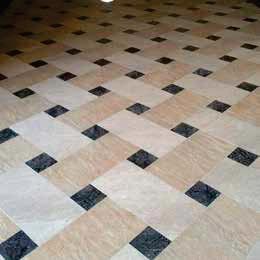
China is the largest tile supplier to Uzbekistan. China shipped $41.377 million worth of tiles in 2024, doubling the previous year. Russia dropped to 5th place with $6.990 million, behind India, Turkey, and Iran. Previously, Russia was the largest Uzbekistan supplier.
CAR’s major tile-consuming country, Uzbekistan, traditionally leads in the region’s emergence as an export manufacturer. In recent years, several production plants have come into stream and many more are in the pipeline. Easy availability of raw materials and energy sources within the CAR bloc and Chinese collaborations have contributed significantly to this development.

Many of Uzbekistan’s new tile manufacturing units are being set up in a newly developed special industrial zone (SIZ) in the free economic zone (FEZ) of the Tashkent region, which already facilitates new investments in building materials and many other industries, under a special industrial policy of the Uzbekistan government.
“Considering the available experience and perspectives of utilising the production and resource potential of the Tashkent region and setting up lasting economic relations with the enterprises of Fergana Valley, it was decided to establish a special industrial zone in Angren,” says Shavkat Mirziyoyev, president of Uzbekistan.
The participating manufacturers in SIZ Angren are granted an extensive system of tax and customs privileges and preferences, as well as a guaranteed connection to infrastructure facilities and communications to facilitate easy connectivity with supply chains and logistics to the retail markets and end-consumers in Uzbekistan and other CAR countries.
“Establishment of free zones in Uzbekistan is a new step in the realisation of the policy aimed at further optimisation of regional development, deployment of highly competitive export-oriented enterprises, and introduction of modern logistics systems and transport infrastructures,” Shavkat explains.
Chinese collaborations have picked up the tile scene of SIZ into Angren, which will expand the production of quality tiles by 2025 with a total investment of over $56 million.
Zhong Peng Ceramics Group International LLC of Uzbekistan entered in Angren FEZ to set up a ceramic granite tile plant with a production capacity of 7.5 million square metres per year, with an investment of $26.5 million. Approximately 30% of the capacity will be export oriented. Zhong Peng, due to start production in 2025, will employ 260 people.
Another company, Hua Tao Ceramic Group LLC, entered the Angren zone to set up a $30 million tile plant with an annual production capacity of six million square metres. Hua Tao will employ 350 people. It is also due to enter the stream in 2025.
FEZ Angren’s already established units include, among others, LLC Vita Ceramic’s tile and sanitaryware plants, JV LLC Lux Ceramics Group porcelain tile factory, joint-venture LLC Great Wall Ceramic Industries plants for decorative tiles and sanitaryware, JV LLC National Ceramics for production of glazed porcelain stoneware and tiles, LLC Laziz ceramic sanitaryware production facility, and FE LLC Original Gold Ceramic factory for manufacturing architectural facing bricks.

Among the existing Angren tile manufacturers, JV LLC Lux Ceramics Group factory is reputed for quality porcelain stoneware. It began production in 2019 with a $50 million investment.Its annual production capacity is three million square meters.
LTD Prime Ceramics is another major high-tech Uzbek company manufacturing quality porcelain tiles and exporting them to neighbouring countries. The company's plant is located in Samarkand. It claims that it is closely connected with Italian ceramic tile production traditions for ensuring high-quality products, and it uses the most innovative equipment of Italian machinery maker SACMI and reputable others since its startup in 2017. Its production capacity is four million square meters of porcelain tiles per year. It employs more than 400 people.
Other major Uzbekistani manufacturers-exporters of tiles include Moderna Ceramic Industries, National Ceramics, Orient Ceramics, Great Wall Ceramics, EMG and Peng Sheng JV. They have export markets in Central Asian and CIS countries.
In 2024, Kazakhstan’s domestic manufacturers catered to domestic demand for ceramic and porcelain tiles considerably and exported a significant quantity worth $23.222 million to neighbouring countries. Approximately $20.702 million worth of exports were shipped to Russia, the largest buyer. The remaining quantities were shared by half a dozen neighbouring countries. Following the implementation of

the import substitution policy initiated in the last decade, several tile projects are in the pipeline in Kazakhstan for startup this decade. At this point, the major porcelain tile manufacturing plant, ZERDEKeramika, expects to expand in the near future as a result of the increase in demand for its products. Due to a shortage of domestic tiles, Kazakhstan currently consumes about $150 million worth of imported ceramic tiles a year.
Kazakhstan’s sovereign wealth fund Samruk Kazyna is financing a new ceramic tile manufacturing plant with an annual production capacity of three million square metres, as well as a sanitaryware factory to manufacture 570,000 pieces of high-quality sanitaryware in Nur Sultan, Kazakhstan's capital.
Central Asia’s largest economy and biggest quality-tile consumer and importer, Kazakhstan, is gradually becoming a significant tile manufacturer to cater to the huge demand of the domestic market, as emphasised by the Kazakhstan government in its efforts to reduce dependency on imports of building materials, according to Kazakhstan minister of industry and infrastructural development Beibut Atamkulov.
Beibut said the government plans to cover a substantial part of households and commercial and institutional buildings with locally manufactured building materials. These include heavy clay products and bricks, ceramic tiles, sanitaryware, and roofing tiles.
The newly expanded domestic tile plant, ZERDE-Keramika Aktobe LLP, was planned to substitute imports. Equipped with Barbieri & Torozzi machinery, it started operations in 2015 with the option of expansion. With more plants now in the pipeline, the Kazakhstan government expects that by 2025 the share of imports will decrease to 27%.
Industry sources suggest, the ZERDE-Keramika products cover most of Kazakhstan's demand for high-quality ceramic tiles, and the products are successfully substituting imports and being exported competitively to Russia and other Central Asian countries. The plant’s expansion, which entered into production in 2021, has catered to both the domestic and export markets.
The production capacity of ZERDE-Keramika, located in Aktobe industrial zone in Shymkent, in south Kazakhstan, is five million square metres of porcelain stoneware and normal ceramic tiles per year. It involved an investment of 9.2 billion Kazakhstani Tenge (more than $20 million).
In ceramic sanitaryware development, the CAR’s natural gas and kaolin-rich Turkmenistan is expected to take the lead in self-sufficiency and emerge as the export manufacturer, followed by Uzbekistan. A new sanitaryware manufacturing plant, Baherden Keramiki, with a production capacity of 120,000 pieces of ceramic sanitaryware, has
Source: ITC,

Source:


come up in Turkmenistan with initial production recently. It will export part of its output to other CAR countries. Baherden Keramiki also has a sister plant for ceramic tile production
Turkmenistan’s leading sanitaryware manufacturer Deryaplastik has consolidated its position in the domestic market and exports to 15 countries around the world, says the manufacturer. Deryaplastik brings you elegant washbasins, toilets, sinks and bathtubs, created to the highest standards of design and functionality.
However, the CAR region is a deficit market. Currently, China is the largest supplier of sanitaryware to meet the region’s shortage. In 2024, China exported more than $67.182 million worth of ceramic sanitaryware to the CAR countries. By comparison, it exported $29.657 million in 2022.
Meanwhile Central Asia is now connected to Europe, China and India through two container freight train routes from March this year. This helps transport ceramic goods to and from Central Asian countries via neighbouring countries’ railway networks.
A Kazakhstan Railways subsidiary, Kedentransservice JSC, Uzbekistan’s railway freight container service and terminal operator UztemirYulKonteyner, and Transport and Logistics Centre of Turkmenistan (TLTS) organised the shipment of 12 20-foot containers filled with ceramic tiles from the Indian west coast port of Mundra to Kazakhstan’s Astana’s Sorokovaya railway station, as reported by the Kazakhstan Railways.
The train will pass through Iran, Turkmenistan, Uzbekistan and Kazakhstan. The length of the route is 1,585 km by sea and 4,300 km by rail. The delivery time, depending on the workload of the Iranian port of Bandar Abbas, will be about 25-30 days. JSC Kedentransservice, JSC Uztemiryulcontainer, and JSC TLTS
Source:
Source: ITC, Geneva.
organised the maiden shipment of ceramic tiles.
JSC KTZ Express, a subsidiary of Kazakhstan railway, JSC NC KTZ, together with China Railway Container Transport Co Ltd. (CRCT) launched a new container service, opening another route between China and Europe. The first container train departed from China’s Chengdu for Poland’s Lodz. The train will travel through Kazakhstan, Turkmenistan, Iran and Turkey. The expected travel time is 40 days. China is also developing two additional westbound freight transit routes that circumvent Russia via Kazakhstan and across the Caspian Sea.


TheinvestmentinanewtunnelkilnfromSACMIbyDuravitChinahascompletedthe projecttoexpandproductionattheChongqingplant.Thetunnelkilnwillbecapableof producingamillionpiecesperyear.
Duravit China has installed a new Riedhammer tunnel kiln, completing its expansion plan to double production output at its Chongqing plant. Put into action in 2023, this plan has been applied to all production stages from slip preparation to casting and from robotised glazing to handling.
The new Riedhammer kiln, model TWS 135/360/90-G, is 135 metres long, with 3600 mm width and 900 mm useful loading height, and is conceived for production outputs of more than 86 tonnes per day (approximately 3000 pieces). The expansion plan has been completed as a result of increased production reaching one million pieces per year.
As with all the latest generation Riedhammer solutions, the kiln is designed to maximise performance, also from the point of view of energy consumption. This is done with recycling systems, such as the exclusive EMS (energy management system) for pre-heating combustion air to 200°C, and the air-water heat exchanger, which uses excess hot air to produce hot water destined for other uses.
The kiln and factory have several other features that improve their energy balance. Among these are the fans provided with frequency converters, the exclusive ‘pulse firing’ system in the pre-heating zone, and the system for recovering excess hot air from the kiln and redirecting it to the drier, which can therefore operate on a totally ‘zero fuel’ basis.
In addition to the new kiln, Duravit has recently started new glazing lines. All stages of the process are automated, and handling operations are carried out by LGV. As they leave the glazing line, the pieces are loaded onto a conveyor belt and transferred to the kiln where the operator proceeds with car loading operations for 109 cars per day.
With the completion of this final phase of the expansion project, SACMI reaffirms its valued partnership with Duravit, a multinational manufacturer of quality-designed sanitaryware, with whom it has carried out projects across all the Group’s major manufacturing facilities worldwide. In particular, this latest supply was a significant contribution to further improving the Chinese factory, already renowned around the world for its high level of automation and 4.0 management of sanitaryware production flows.
Customer segments are served best by durable, functionally appropriate and aesthetically appealing tiled surfaces, not by the number of SKUs, says Dinesh Vyas, building material expert.
Recently, at an industry event in Mumbai, I met a designer renovating a vibrant restaurant I used to visit in the past. He praised the Indian ceramic tile industry’s progress, having replaced the restaurant’s high-maintenance marble floor with large-size porcelain tiles. He proudly told me that the client liked the large vitrified tiles he proposed, in a stunning marble design with high gloss. Happily, he showed me a picture of the tiles. It was beautiful marble indeed. However, since I know how busy this place remains, my smile faded. I gently asked him if he had considered the wear implications of this tile. His face dropped. “But it’s vitrified,” he said, surprised. Despite the ‘vitrified’ durability hype, this PGVT (Polished Glazed Vitrified Tile) was not suited to such heavy use, prone to scratches with no restoration option like marble.
The small discussion at an event exposes a global challenge: the ceramic tile industry often prioritises products over performance. Drawing from my experience in India, this article explores how the industry can deliver value through solutions and information, rather than just stock-keeping units (SKUs).
Too many tiles, too little understanding Tile showrooms in general, especially in India, dazzle with endless options – glossy, nano-polish, hard matte, marble-effect, wood-look, sugar-finish and carving. An average 500 square metre display area will have at least 2500 individual tiles, if not more.
The belief is that more SKUs drive sales. Yet, this overwhelms consumers, leading to errors such as the restaurant’s glossy PGVT on a busy floor. In many markets, especially in India, rapid urbanisation and a price-sensitive market amplify this issue. Tier-2 and tier-3 cities demand premium aesthetics, but a lack of guidance results in misapplications, such as wall tiles on commercial floors or living room tiles in wet bathrooms, causing cracks, stains and slips.
Globally, the SKU-driven model creates inefficiencies. Big manufacturers often overstock designs to outpace competitors, while retailers struggle to educate customers. The other way is to fill distributors’ warehouses with unhealthy inventory levels. While it improves service levels, when tiles fail due to improper use, trust
erodes and brands suffer.
The industry must shift from flooding markets with SKUs to ensuring tiles are purpose-fit, balancing aesthetics with durability and functionality.
silent
In markets with a strong do-it-yourself (DIY) culture, consumers tend to research products, read specifications and watch tutorials, elevating industry standards. In India, DIY is virtually absent. Consumers rely on masons or retailers, who often lack formal training in modern adhesives, grouts or substrates. This knowledge gap exists in other developing markets as well, leading to trial-anderror installations. The restaurant case illustrates this: the designer misjudged vitrified tiles’s suitability, the client focused solely on aesthetics and the tiling contractor followed blindly, unaware of the tile’s limitations.
Globally, similar challenges persist where technical education lags behind product innovation. Failed installations – cracked tiles, peeling surfaces, or slippery floors – damage brand credibility, even with high-quality products. Bridging this gap requires investment in education, from consumer awareness campaigns to professional training programmes, ensuring tiles perform as intended in diverse environments.
Tile seller to solution partner mindset
Few leading players in Europe and North America offer a blueprint. Top brands do not merely sell tiles; they provide systems; at the very least, they educate. A high-rise facade demands tiles, substrates, adhesives, expansion joints and precise installation methods, supported by technical guides, training workshops and site-specific recommendations.InIndia,whereurbangrowth,exportmarketsand regulatory pressures demand higher standards, this shift is urgent. To become a ‘solution provider’, the industry must deliver:
• Right tiles: Clear guidance on tiles for specific environments, like slip-resistant bathroom floors, durable commercial spaces, or high-breaking-strength outdoor patios.
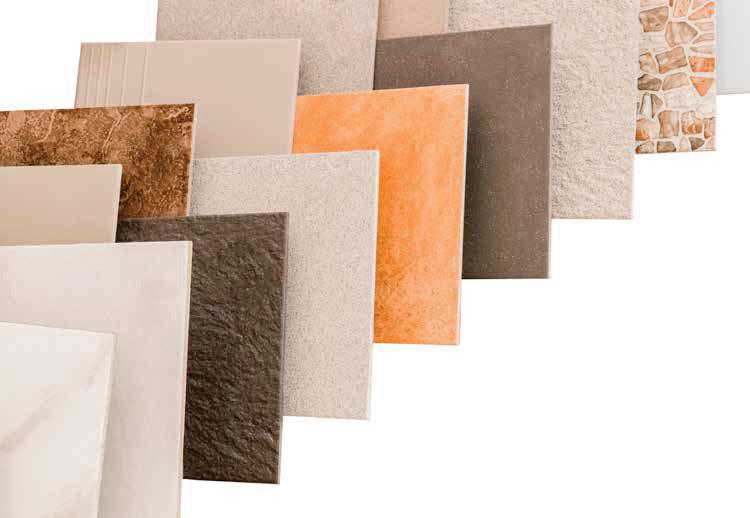
• Complete systems: Tiles bundled with compatible adhesives, grouts, trims and sealants for seamless application
• Education and training: Programmes for masons, retailers and consumers, including digital tutorials and on-site workshops to minimise errors.
• Performance assurances: Warranties to build trust and ensure long-term satisfaction.
An example could be that a brand could launch a hospital tiling solution: antimicrobial tiles, chemical-resistant grout and mason training videos tailored for sterile environments. In India, where installation failures are a major pain point, such solutions could transform brand loyalty, reduce complaints and elevate customer experiences.
The Future: Knowledge centres bring the trust Ceramic tile industry, especially in India, must redefine its strengths. Producing at scale –India is a global leader in volume – is not enough. Relying on copied European designs limits innovation and fails to address local challenges, such as tiles for humid coastal climates, high-traffic rural homes or budgetconscious urban apartments. Globally, the industry faces similar pressures to innovate beyond aesthetics, with sustainability and performance becoming key differentiators. India’s unique market dynamics offer opportunities. With a vast network of factories and growing exports to Asia, Africa and the Middle East, the country can lead by solving real-world problems.
“Ceramic tile industry, especially in India, must rede ne its strengths.
Producing at scale –India is a global leader in volume – is not enough. "
For instance, developing affordable, durable tiles for low-income housing or eco-friendly options for green buildings could set new benchmarks. Value lies not in SKU-stuffed warehouses but in expertise shared with customers through technical support, applicator training and transparent communication. By prioritising performance over polish, education over expansion and solutions over products, the industry can build trust and durability. Of course, there are some reputed players like H & R Johnson India, who are making unique solutions like germ-free tiles, certified anti-slip tiles, anti-static tiles and even x-ray shielding tiles. It requires industry-level efforts to bring awareness. India has the potential to shift from being the world’s tile factory to its most trusted tiling partner, setting a global standard for innovation and reliability.
Today’s pain point is not the dearth of designs. In fact, plenty is a new problem. To provide durable, functionally appropriate and aesthetically appealing tiled surfaces is the objective across the customer segments, not the count of SKUs.

PT Monokem Surya was founded in 1989 and is a private, 100% Indonesian-owned company that manufactures speciality chemicals for the ink and textile, zircon and ilmenite industries. Since 2013, Monokem has focused more on zircon products. The company has its headquarters in Jakarta, and its 64,000 square metre production facilities are strategically located in Rengas Dengklok, Karawang, West Java. Sardimin Sungkarto, president and director, PT Monokem Surya, discusses his company, its current activities, and its future plans in this exclusive interview with Asian Ceramics.
Having been in business for more than three decades now, PT Monokem Surya has a long history of success. Can you provide us with an overview of how your company has developed and grown over the past 30 years and what your current activities entail?
SS: PT Monokem Surya has been operating for more than 35 years. It began with a strong team and a strong focus on running a processing business in the chemical industry, specifically in the production of blue pigment phtalocynine, until 2012.
The company began its zircon business with a purification plant in the year 2008. In addition, we have a few mining sites in central and west Kalimantan. In 2012, we shifted our focus to the production of zircon products such as micronised zirconium silicate and zircon flour for the ceramics industry, special glass and metal castings.
In 2014, Indonesia restricted the export of raw materials, so ilmenite, which is one of our co-products, could not be sold overseas. We therefore decided to invest in a smelter enriched titanium slag smelter. It is anticipated that PT Monokem Surya will be able to provide zircon products and titanium products through its integrated plant, which includes mining, purification, and smelting.
zircon and ilmenite mine in Central Kalimantan, which produces our raw materials. These raw materials will be brought to our purification and processing plant to create a competitive product in price and quality. This is in contrast to a few of our competitors who import raw materials from abroad.
Yourcompanybeganbymanufacturingspecialtychemicalsfor inks and textiles, zircon and ilmenite. However, PT Monokem Surya has been focusing more on developing zircon products since 2013. What made this decision, and how has the journey been in this respect?

How has PT Monokem Surya’s 2025 experience been so far? What is your outlook for the remainder of the year? How will you achieve them?
SS: Theyear 2025is definitelya year with challengesand uncertainty. PT Monokem Surya focuses on re-engineering projects to increase efficiency in all aspects, including the factory. We have a
SS: PT Monokem Surya’s pigment plant produced high-quality products and had a selling price above the average market price when a Japanese company expressed interest in acquiring it. Our founder decided at that time to focus on zircon production and the pigment business was sold to the Japanese buyer.
Before selling the pigment factory, we already had the zircon purification plant running since 2008 with a small capacity. With the proceeds from the sale of the pigment factory, we shifted our focus to the downstream production of zirconium silicate, which we are still doing today.
What are your industry's challenges, and how do you envision overcoming them?
SS: Our challenges today are increasing the number of high-quality raw materials to be processed. We are reengineering the production process and expanding the overseas market to fulfil production capacity and gain ideal economic size.
How is PT Monokem Surya seeking to capitalise on growth opportunities in its business area?
SS: Since 2013, we have been developing our purification and milling facility, increasing our production capacity more than 300% in the last 12 years. Now we have a monthly production capacity of 2000 tonnes of zircon sand from our purification plant, 800 tonnes of zircon flour, and 1700 tonnes of micronised zirconium silicates.
PT Monokem Surya maximises its ilmenite as a co-product of the purification of zircon that is further processed further into titanium slag and expands Monokem’s line products to include additional industries besides ceramics.
What are your thoughts regarding the ceramics sector for your products at present as well as in the future?
SS: PT Monokem Surya’s product is mostly used as a ceramic glaze material to give opacity and whiteness. We are committed to constantly increasing the quality of our products and developing new products to keep up with the market’s characteristics, which are getting more competitive.
For the Indonesian market, we will follow the government’s target of eight per cent GDP growth in 2025, We are certain that there will be an increase in the demand for ceramics. We, PT Monokem Surya, as the market leader in zirconium, are ready to fulfil the needs in the ceramic domestic market and international market.
Which markets do you serve, and where are they located? Will you expand this reach in the future? If so, what markets or regions are of particular interest to you?
SS: We primarily serve the Indonesian market as our main market. Outside of Indonesia, we mostly cater to the Turkish market, Russian market, and Southeast Asian market as our secondary markets for the ceramics and foundry industries. OurpresencealsoreachesIndia,LatinAmericaandtheEuropean market. Sea freights are a crucial factor in our competitiveness. Withthecurrentconditions,wecanstillcompeteinaconsiderably distant region.
What is your view of Asia as a market for your products and services?
SS: We think that the Asian market still has plenty of room to develop.WhileweareoptimisticthatAsiancountrieswillexperience development than other continents, we are also confident that our market will follow a stable growth path.
Are you able to share with us any recent equipment/ technological investments you have made, as well as how they have impacted your ability to compete?
SS: Our engineering team has conducted extensive research and development on our equipment and technology. Our focus is on increasing competitiveness and efficiency.
WE ARE COMMITTED TO CONSTANTLY INCREASING THE QUALITY OF OUR PRODUCTS AND DEVELOPING NEW PRODUCTS TO KEEP UP WITH THE MARKET’S CHARACTERISTICS, WHICH ARE GETTING MORE COMPETITIVE.

How important is sustainability to your company? Can you describe how your organisation ensures sustainability?
SS: Indonesia has raw material reserves that could last at least for the next 20 years. We have also invested in human resources for the younger generation to pass on the torch of development and sustainability. PT Monokem Surya has teams with more than 30 years of manufacturing experience, therefore, sustainability in terms of efficiency and costs will continue.
As the business environment becomes more challenging, how do you remain competitive?
SS: Indonesia has a wealth of raw material resources with high competitiveness on the market. It is a developing country, and we are optimistic about domestic demand. With the right economic size and experienced human resources, we are certain that PT Monokem Surya will remain competitive.
What makes PT Monokem Surya unique?
SS: PT Monokem Surya has an integrated processing plant from raw materials to end products. Indonesian zircon’s quality competes with Australian and African zircon. We have a strong research and development team and engineering team to support us and remain competitive in the market.
Howdoyouperceivecurrentandfuturetrendsinyourindustry? Can you tell us more about the company's plans?
SS: The Indonesian ceramic tile market is transitioning from small red body ceramics to big white body ceramics with low porosity. With subsidised natural gas from Indonesia, we see potential for ceramics. PT Monokem Surya continues to implement changes based on technological progress, expand according to market demand, and maintain an ideal size for its economy.
How would you describe your goals for the next five years?
SS: We will perfect our titanium slag smelter to diversify our business. Our efforts will focus on optimising our equipment and establishing a broad sales network across various countries with high potential.

IfUttar Pradesh had been a country, it would be the seventh most populous, behind Nigeria and ahead of Brazil. The state’s 234 million inhabitants make it largest and one of the most important ceramic markets in the country.
Single largest market in India
The state of Uttar Pradesh is home to the ceramic cluster of Khurja and as well as Kajaria Ceramics and Bell Granito’s ceramic tile production facilities.
Uttar Pradesh’s large population makes it one of the most attractive markets for ceramic tile, sanitaryware, and tableware manufacturers. With one of the lowest per capita consumption levels in the nation (far below the national average), ceramic manufacturers have ample opportunities to expand their market share in the state.
Khurja cluster
The Khurja ceramic cluster, located about 200 kilometres from the national capital, has a rich tradition of producing ceramic products and artifacts for 500 years. You will find a workshop or a ceramic production unit with an attached shop in almost every nook and corner of this town.
The city had 423 ceramic manufacturing units at the end of the financial year 2023-24 (31st March 2024) The majority of these units produce ceramic tableware (mostly stoneware) and ceramic artware. A number of units are also engaged in ceramic insulator production. Nearly a dozen ceramic tableware manufacturers from

the state have established a strong reputation on both local and international markets. Over the last few years, manufacturers such as Dadoos Ceramics, Chatwal Potteries and Hitkari Potteries have improved their product offerings by investing in the state-of-the-art production technologies. These producers export a significant part of their production to a number of countries in Asia, Africa and the CIS region.
Ceramic industry of the city generated an annual turnover of INR 13.3 billion in fiscal year 2023-24. About 35% of Khurja's total production is exported to countries in Europe, the Middle East, Africa and other Asian countries. Khurja became one of the leading ceramic hubs in the country after the ceramic industry boomed during the 1970s and 1980s.

A few years ago, the Indian government declared Khurja Ceramic Cluster to be the leading export centre in India, resulting in a major boostforceramicmanufacturinginthecity.However,theavailability of natural gas as fuel since 2011 has been the single largest catalyst in the town’s ceramic industry. Most of the producers, who used age-old technologies based on coal-fired furnaces have adapted to the new fuel.
In addition to a change in fuel, producers are adopting new technologies and processes. Central Glass and Ceramic Research Institute ( CGSRI), Khurja has assisted many ceramic producers to reduce the total cost of production of ceramic products by adopting new production technologies and processes in the last few years.
Sarthak Chhatwal of Chhatwal Ceramics says: “Quality of offerings in nearly all product segments has improved during the last two decades. Around the turn of the century, most of the output was meant for the domestic market in rural and semi-urban areas. There were only a few units catering to export markets.
“However, there are now a number of companies that are export-oriented. Support from the state government and central government has enabled Khurja-based producers to opt for modern technology and sustainable fuels.”
Guljeet Minhas, owner of Silico & Chemico Porcelain Works, shares the evolution of the ceramic industry in Khurja. He says: “The ceramic industry in Khurja has come a long way. In the 1980s, the entire industry ran on coal-fired furnaces.One could see chimneys dotting the landscape, billowing smoke into the sky. “It took 120 hours to produce one kilogram of tableware products from a dead mass of 12 kilograms. The heat produced was intense and the pollution levels were very high.
“In the last decade, a number of producers have shifted to gasfired furnaces, which have enabled them to produce better quality products. Though for some producers installing and operating a gas fired furnace is an expensive option in comparison to oil-fired furnaces, as the final price of the product is not very high.”
India’s largest ceramic tile producer, Kajaria Ceramics started its journey in the ceramic industry with its plant at Sikandrabad in Uttar Pradesh in 1988. Commencing with an installed capacity of one million square metres per year, Kajaria has scaled up production capacity at this plant to more than 11 million square metres per year.
The road ahead
Uttar Pradesh offers tremendous potential for ceramic industry producers over the long term. Currently, most of the demand is met by tile and sanitaryware production plants based in other states. ProximitytothenationalcapitalDelhiandRajasthan,whicharethe largest consumers of ceramic products and the largest supplier of raw materials to the ceramic industry, presents immense potential for the establishment of a vibrant industry in the state.




Tariffs and taxes are creating mayhem in the global ceramics markets, but in the UK, the door seems wide open. Vietnam is one of the first through it and seems destined to capitalise on a post Brexittrade fear, regardless of the damage it might do to the domestic industry, says Andy Skillen, special correspondent, Asian Ceramics.

One of the region’s former pottery giants, Royal Stafford, has closed its doors for good.
In February, the company, which dated back more than 200 years, called in the administrators, resulting in the loss of over 80 jobs. As costs rise and orders drop, the tableware manufacturing sector is under enormous pressure to survive. Indeed, Royal Stafford blamed both of these for leaving it in a situation where it was unable to afford trading.
The firm's collapse followed the closure of Dudson in 2019, Wade in 2022, Johnsons Tiles in 2024, and was soon followed in February this year too by yet another, namely Heraldic Pottery.
Royal Stafford was known for its cream-coloured earthenware and tableware and was one of the few businesses left in the area that did not outsource production overseas. It makes you wonder who’s next? Companies continue to struggle financially, and the US tariffs that have come into play are punishing the higher end players who had used the country as a major export destination. Consider Portmeirion, which just a couple of months ago was highlighting the demand for its Spode range in North America, will now face huge tariff-related, economic headwinds if it is to remain profitable there. Not surprisingly, the shares have plunged to a 10-year low as Asian Ceramics goes to press. Pressures in the UK market, as well as increased competition for exports as companies look to offload their previously USA-bound exports somewhere, will keep sentiment depressed in the iconic tableware maker. It is not to say that the company is in crisis of course, but because of its listed status, it is much easier to gauge overall industry health. And it is not great. Indeed, Portmeirion has issued a profit warning this year already, and in March carried out a large number of redundancies
Let’s face it, however, it’s been a long time since the UK, as almost the founding father of high-quality porcelain tableware, was able to punch its weight. The battle was lost long ago, in the 1990s, in real terms, when the rapid rise of Asia’s tiger economies provided a more dynamic, adaptable approach to the world of ceramic manufacturing.
Coupled with a domestic change in the type of ware desired by the public, mostly a more casual dining experience than a high-priced dinner set, the industry suddenly found itself under serious pressure.
There is a reality check here, though. Although no country would like to see its history dismantled, there are very few places in the world that are able to maintain an industry sector at the forefront of innovation on a permanent basis.
Of course, the continued loss of employment in what is already a relatively economically deprived part of the country is more than unfortunate. The former industrial heartland of the country has been in a long and steady decline for many years, and despite the efforts of successive governments, the tail-off has been impossible to stop.
But let’s lose the a second. The commercial




But let’s lose the nostalgia for a second. The commercial reality is that when you visit the major ceramics exhibitions around the world, the UK component is, well, underwhelming. This is not just from a finished product perspective, also from a supply perspective. Perhaps for too long, the latter was dependent upon its booming ‘potteries’, which were the UK’s global trademark and were just not quick enough to latch onto the emerging markets of the Far East and export their expertise and technology there. Some have since been successful in a much lesser way, but many have not.
UK-based ceramics expert, Steven Moore, the former creative director of Burleigh Pottery said he was devastated by the news about Royal Stafford.
"How long can this go on... how many blows can Stoke take?" he said at the time.
"People need to ask themselves, do we want to be able to buy pottery that is made in England, in Stoke on Trent?"
Paying a little more for an item made in England was ‘a longer-term investment not just in yourself but in the country as well’, he said.
But in a world of global economics and supply chains, just how realistic a viewpoint is that? For the tub-thumpers and flag-wavers, then, yes, perhaps it’s the rallying call they need: ‘Buy British’ they will clamour, before disseminating their views via a Chinese-built mobile phone or posting them on an overseas video-hosted platform. There’s also the reality that the sector is simply not attractive enough for new, aspiring technicians and artisans.
The new generation of ceramists wants to work with cuttingedge materials in state-of-the-art, futuristic applications. Plates, teapots, gravy boats and milk jugs simply don’t cut it any more as an interesting way to earn a living, and whilst the artistic and the artisan will always be a source of wonder for all of us incapable of even drawing a stick man, attracting the talented to operate small-scale operations with individual items sold as souvenirs, the career-driven just don’t want to spend their lives in a tableware factory any more.
Generations now maturing mostly see high quality porcelain as something that is either in hotels or behind glass-fronted cabinets in museums. Beautiful as it is, when the pressure is on for household expenditure, then the IKEA-style ranges of brightly coloured ware tick most of the boxes that the modern consumer has.
When you get plates and cups in supermarkets such as Tesco, where is the market for high-quality porcelain going anyway?
There are now only a handful of companies left in the area who make everything in-house. Moore said he feared the skills would soon be lost forever.
David Williams, a member of parliament for one of the districts affected by the closure, has been forthright in his analysis.
“It’s the pots that really made the city what it is; it’s in our



DNA as a people, and the idea that we can lose the industry if we don’t put the measures in place to support it, is not OK.”


Consider Wedgwood, for example, a brand so large and historic that it has a virtual theme parklike visitor centre visited by thousands of visitors every year. However, although it is one of the biggest and most iconic brands in the area, and two decades ago, about 600 people worked in the factory, now there are just 75, producing about a third of the company’s output. The rest is made in Indonesia.
“Made inthe UK is extremely important,” said Sjoerd Leeflang, Wedgwood’s vice-president, as Royal Stafford shut down. “But it’s tough to have UK production; the costs are just very high. Since 2021, our energy prices have gone up 100% for gas and 30% for electricity … To absorb that level of cost increase is tough.”
“I would say there’s absolutely a future for the ceramics industry in Stoke. There are some people doing incredible things, working and thriving here. But it can’t be as it has been. We can’t go back,” he added. Perhaps it’s time for the UK to wake up to the realities of modern manufacturing. There’s no point competing with countries that will simply be able to undercut when it comes to bulk. Instead, a more artisanal approach may be the way forward, with smaller companies, diverse offerings and craft-style centres of excellence?
Enter Vietnam. The East Asian country is everything that the UK’s ceramic industry isn’t at present, and it’s also seemingly been granted free reign over the markets in the latter. It is hardly surprising. Brexit has forced the UK government to curry favour with anyone to develop a trade deal, and therefore, any prospect of putting up protectionism to support the ailing domestic industry is an impossibility. Ministers may indeed talk the talk, but when it comes to actually providing some real competitive support, it seems sadly missing.


In a recent interview, the Vietnam Trade ceramic and porcelain
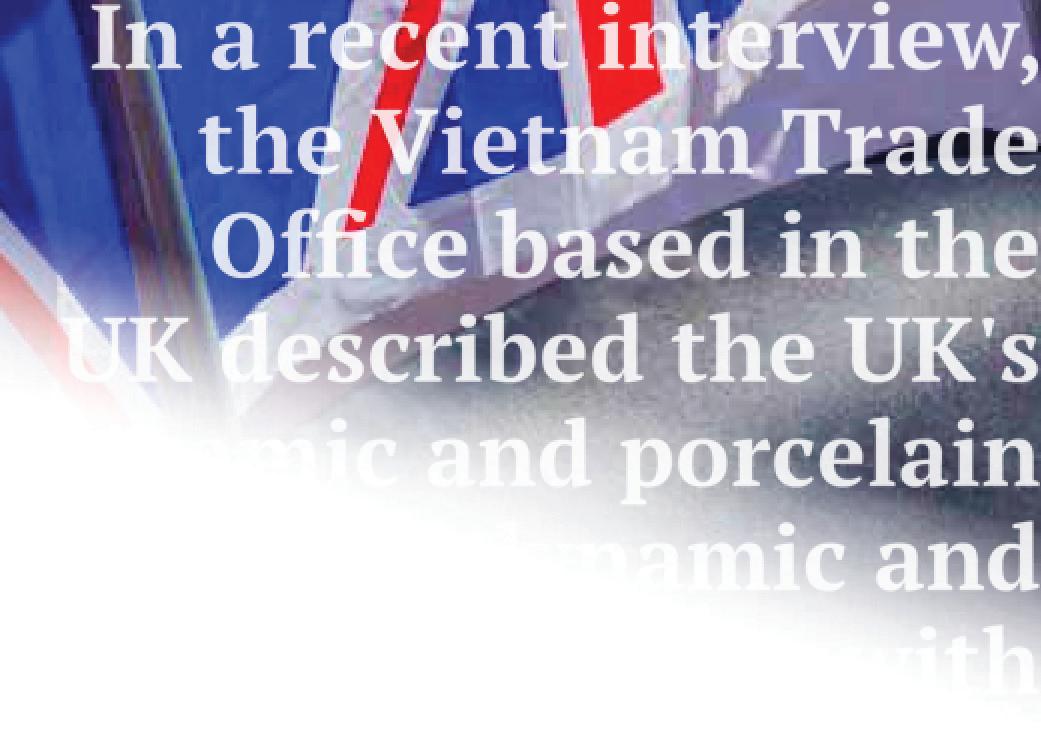


Vietnam is poised to become one of the UK’s largest suppliers in the next five years, potentially forcing more companies to the brink as a result. Considering the US' extraordinary tariffs against the country, it is even more likely that excess capacity will be directed towards Europe, particularly the UK, because of its open-door policy.
It is estimated that exports of ceramic products to the UK from Vietnam are forecast to grow at double-digit rates annually until 2030, driven by their high quality, competitive prices and tariff benefits under the UK-Vietnam Free Trade Agreement (UKVFTA).
According to the General Department of Vietnam Customs, exports had grown by 27.4% year-on-year as of November, reaching $29million. In 2023, exports amounted to $26.7million, with annual growth averaging 12% since 2019.
The main ceramic products imported by the UK from Vietnam include ceramic floor and paving tiles, hearth and wall tiles, mosaic cubes, and decorative items. It is expected that tableware and porcelain will also be ramped up.
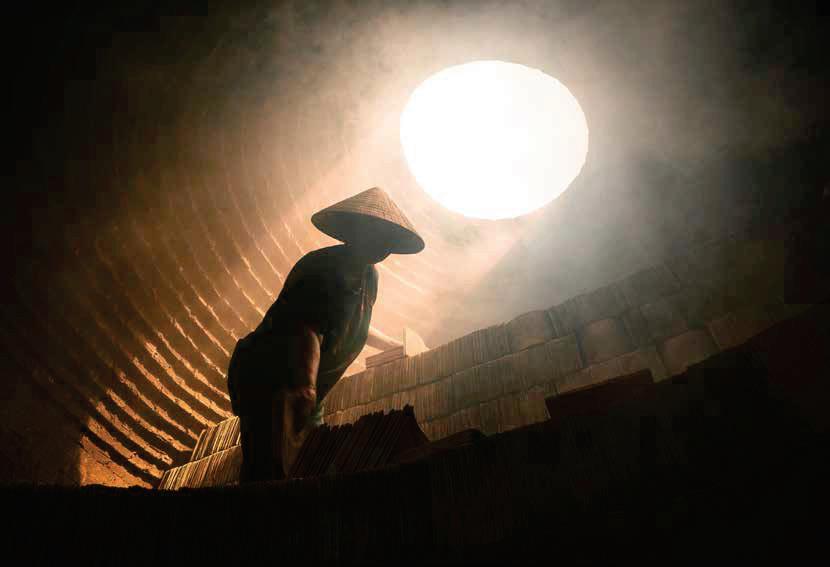
In a recent interview, the Vietnam Trade Office based in the UK described the UK's ceramic and porcelain market as dynamic and competitive but with both opportunities and challenges. However, the presence of the UKVFTA means that Vietnamese companies have plenty of leverage.
Ironically, Hoang Le Hang, first secretary of trade, emphasised that tariff exemptions on Vietnamese ceramic products, effective from 2024, have enhanced their price competitiveness on the UK market. In a world of increasing restrictions, the UK seems to remain wide-open, yet still wonders why its domestic industry is suffering.
Hang encouraged Vietnamese businesses to prioritise product quality, ensuring compliance with local market standards and health and safety regulations, to bolster exports.
“Thanks to the free trade agreement, the price of Vietnamese ceramic products in the UK is more competitive than those in other countries.”
To further increase exports, Hang advised Vietnamese enterprises to focus on improving product quality and meeting the high standards of the local market, particularly in terms of health and safety regulations.
Hang has also urged Vietnamese ceramic producers to invest in research and development to advance decarbonisation processes, addressing climate change challenges and aligning with the Carbon Border Adjustment Mechanism (CBAM) which will be applied in the European Union and the UK from 2027.
“Adapting to these regulations is essential for maintaining and promoting the export of ceramic products,” she said.
“The UK government is conducting a legislative process to establish this carbon border adjustment mechanism, under which a carbon tax will be applied in the UK,” Hang said.
According to the Vietnam Chamber of Commerce and Industry (VCCI), the mechanism is designed to impose a fee on goods subject to import regulations into the UK, based on the level of greenhouse gas emissions during the production of
those goods in the exporting country.
Although the specific list of goods by the Harmonisation System (HS) has not been determined, the UK government has agreed to apply CBAM to seven categories, which include aluminium, cement, ceramics, fertiliser, glass, hydrogen and iron and steel.
Exporters of goods subject to CBAM are responsible for paying the carbon tax, which is determined for each imported batch based on its carbon emissions.
Compared to the European Union's CBAM, the UK’s CBAM does not apply to electrical products and does not involve the trading of carbon certificates.
Once the UK’s CBAM is applied, the scale and impact of this mechanism on Vietnam’s exports will be significantly higher than that of the EU’s CBAM.
This is because Vietnam does not export electricity to the EU or the UK but does export large volumes of ceramics and glass products to the UK, especially those used in construction.
Regarding the forms of goods subject to CBAM, similar to the EU, the UK government defines that they can vary, as long as they are within the CBAM-regulated goods list. They can be finished products, raw materials, components, or energy, which is produced or processed for sale.
Since implementing its 10-year, government-backed expansion plan, the Vietnamese ceramics industry has made significant advancements in production capacity and exports. Consequently, the total tile capacity has grown to 850 million square metres, while the sanitaryware capacity has increased to 26 million pieces per annum. These are numbers the UK can only dream of.
It has also embraced, though, the artisanal side, and this is surely where the UK could learn. This small-scale sector boasts a scale of 5,400 craft villages spread throughout Vietnam.
This article expresses the view of the author and does not necessarily represent those of the referenced organisations or Asian Ceramics.


















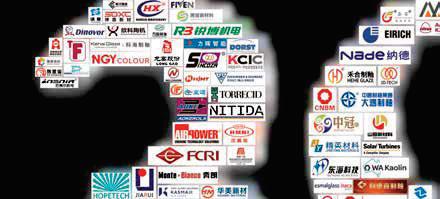
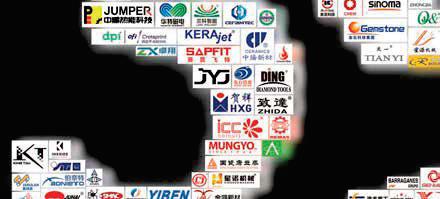

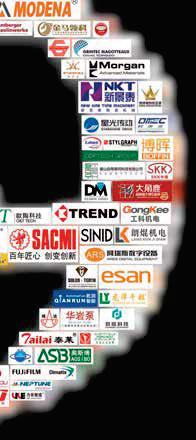








































































































































































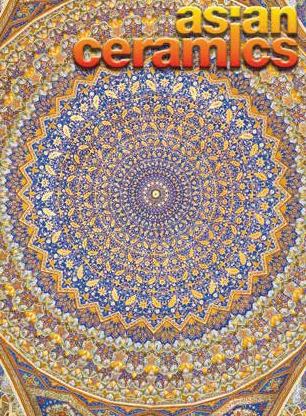




Contact




















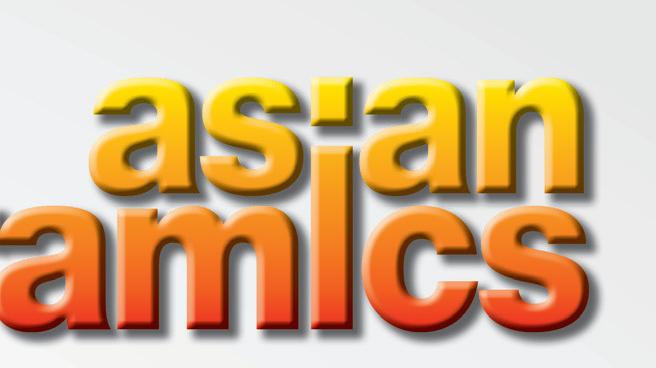

















































Payment has been sent to your bankers:
A/C name: Bowhead Media Ltd
Lloyds Bank PLC; P.O. Box 1000 BX1 1LT United Kingdom
Sort Code: 30-98-96 A/C No: 02504041
IBAN: GB42LOYD30983602504041
SWIFT Code: LOYDGB21235 All









































































































































































































































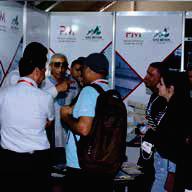
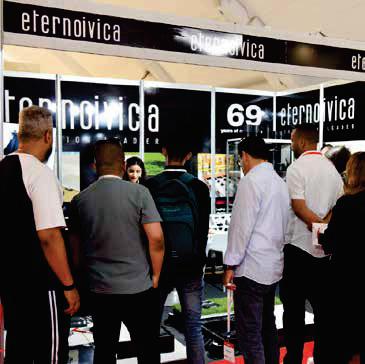


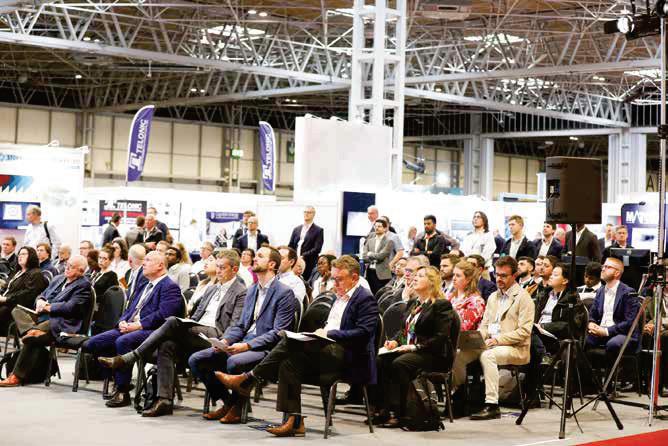
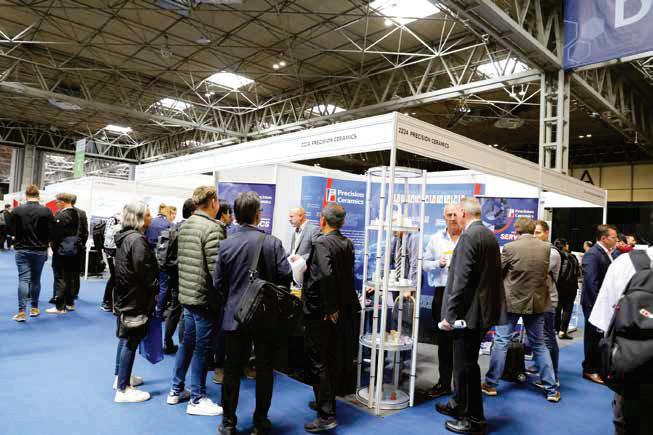











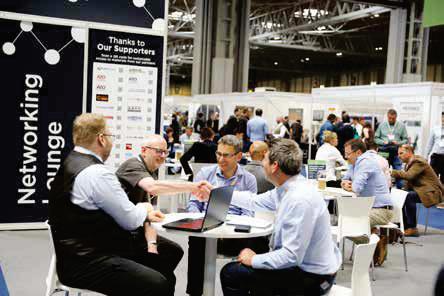






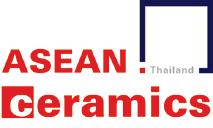

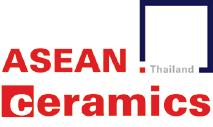






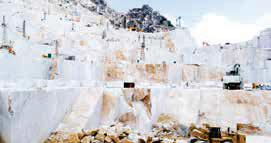
























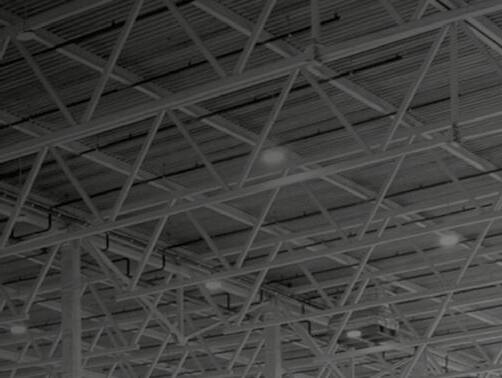




The future of ceramic decoration passes through Creadigit Infinity, the new digital printer with a computing power never seen before. Thanks to CoreXpress, the latest-generation platform, key information, useful for image reproduction on the ceramic surface, is exchanged and processed in real time with sophisticated processors and a dense network of sensors.
More flexibility and more variation with over 12 color bars and the management of different heads on each individual machine with a resolution of up to 600 dpi. Towards the maximum level of performance. Visit systemceramics.com to discover more!

